Parks Highway: Fairbanks to Anchorage
(including Denali National Park & Denali State Park)
August 7th to August 15th
August 7th - Fairbanks to Denali National Park [top of page]
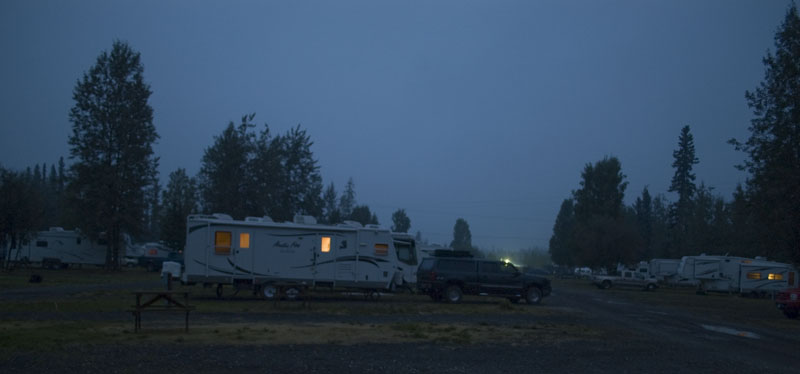
It's hard to tell in this photo, but the rig is clean. We spent the afternoon washing the truck and trailer. Then, I forgot to take pix of them in the campsite until around midnight. So, here's our midnight shot of our campsite.
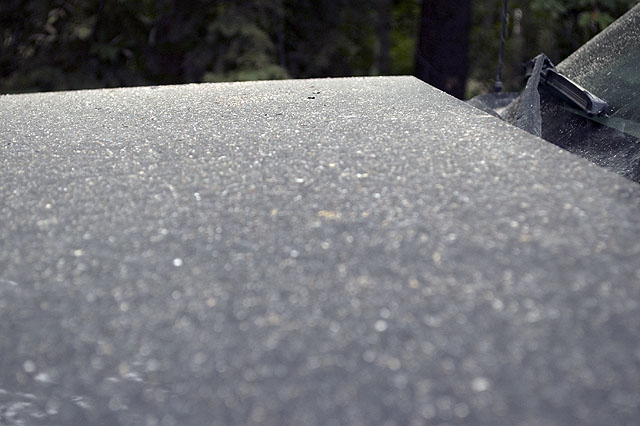
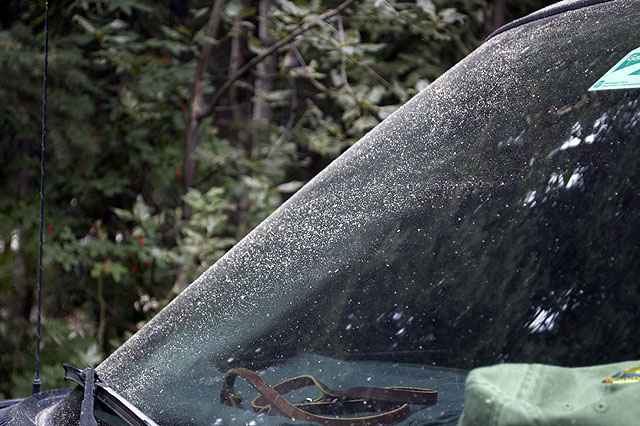
And here's what the truck looked like in the morning covered with ash from the fires in the area. At least the ash blows off easily.
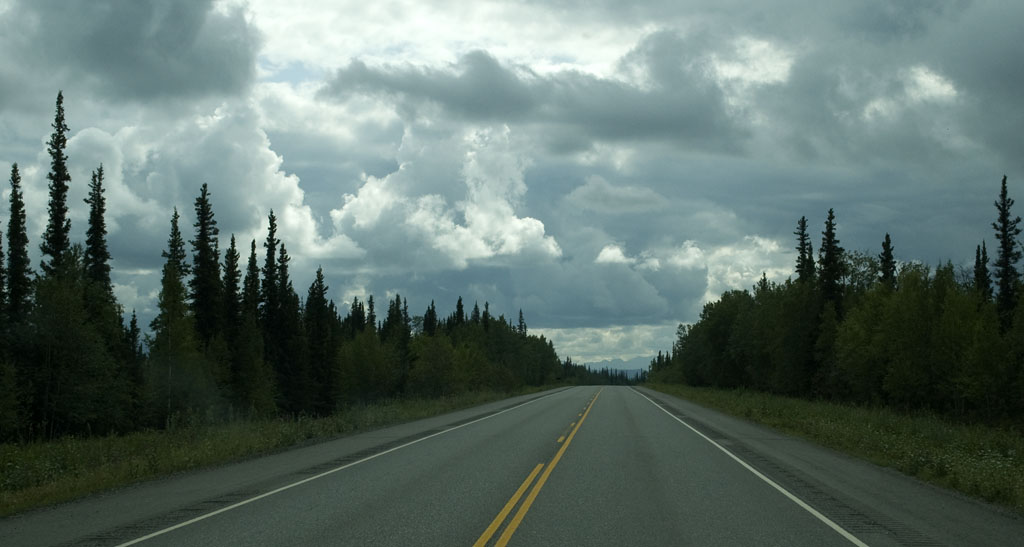
The Parks Highway on our way to Denali. Almost looks like any other two-lane country highway.
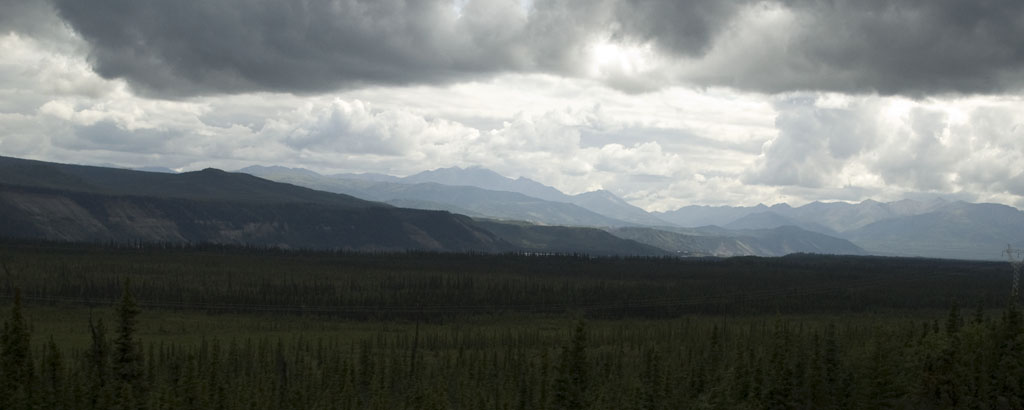
This photo shows more of the boreal forest and mountains in the background.
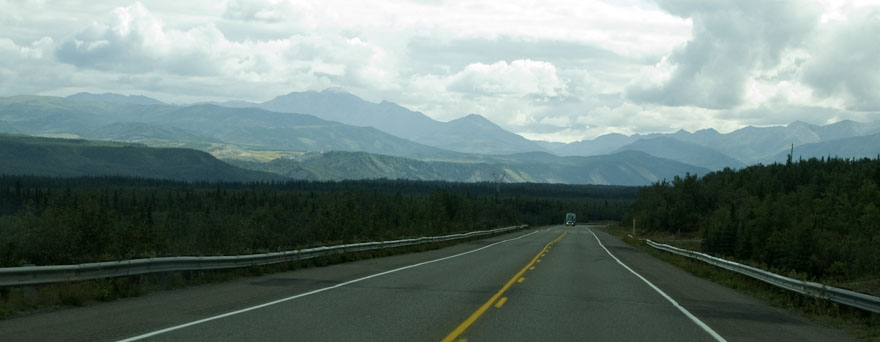
We're getting closer to those mountains.
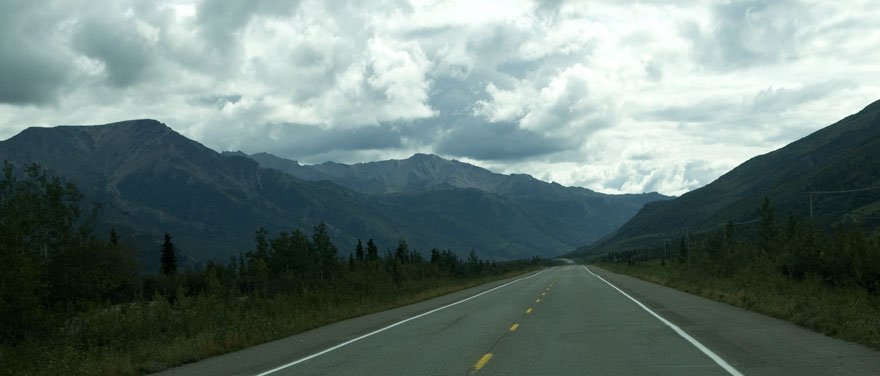
And closer yet.
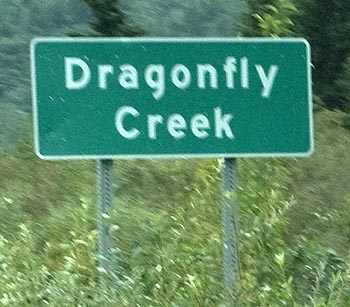
Mary would love this.
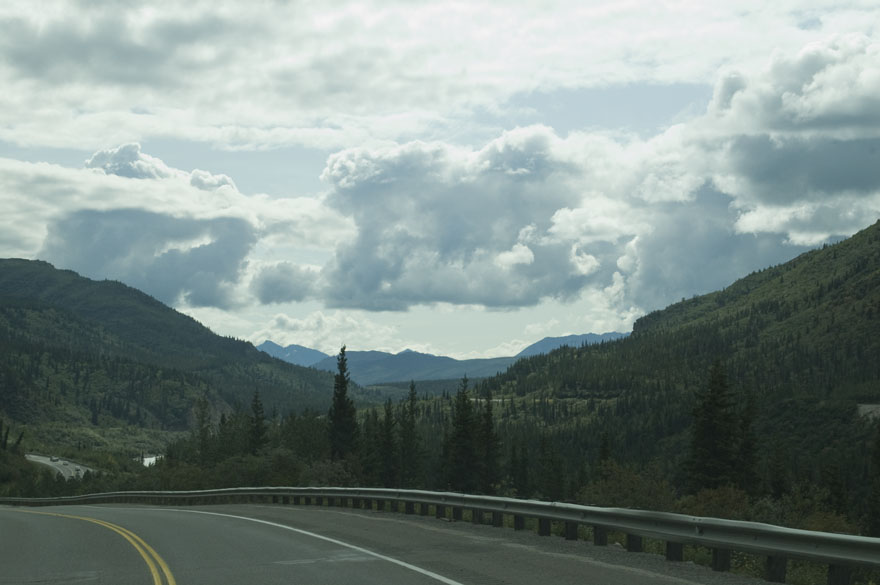
We're in the mountains now. We've just passed the pond where we spotted our a moose in 2004, but no moose this time.
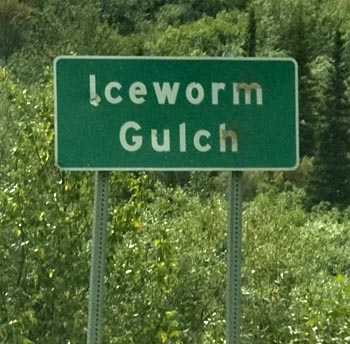
Somehow, this doesn't have the same ring as "Dragonfly Creek', does it?
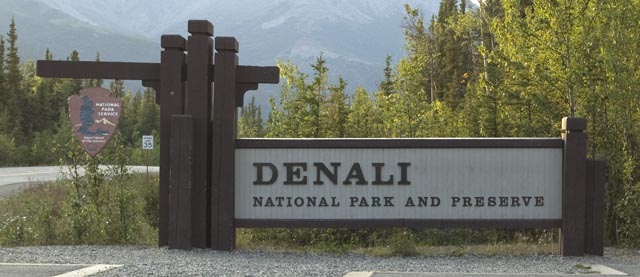
The entrance to Denali National Park
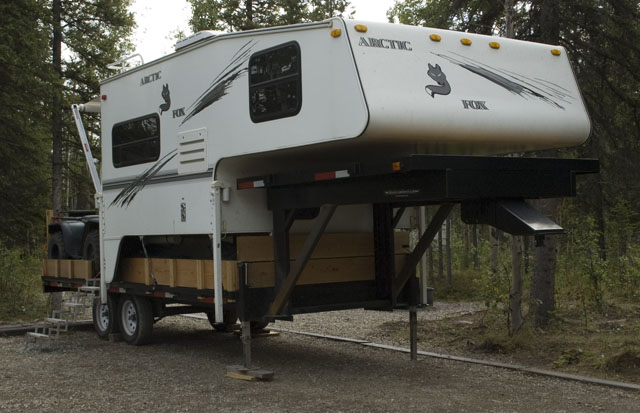
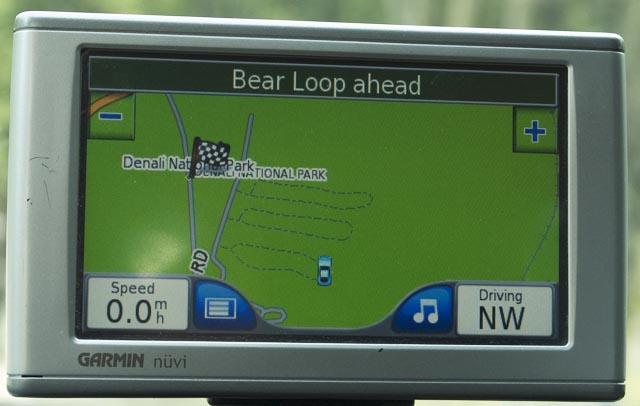
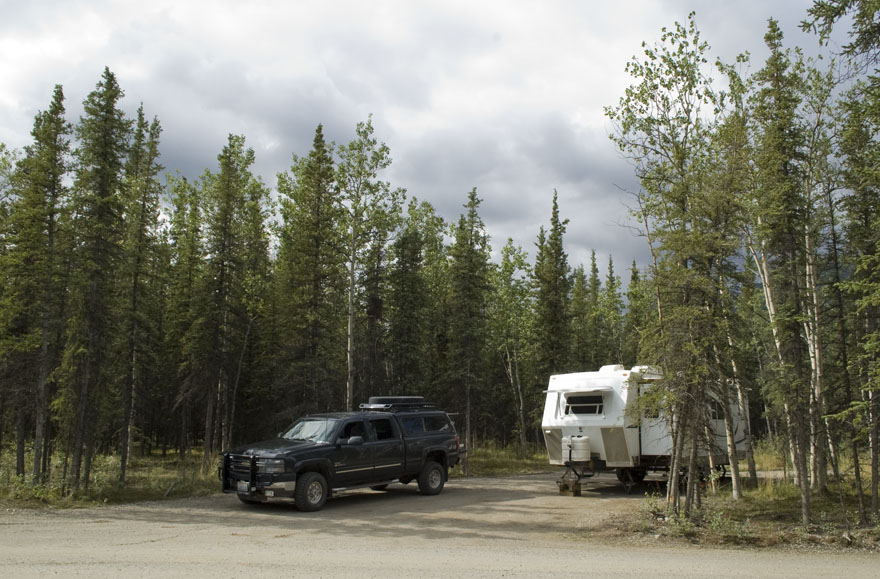
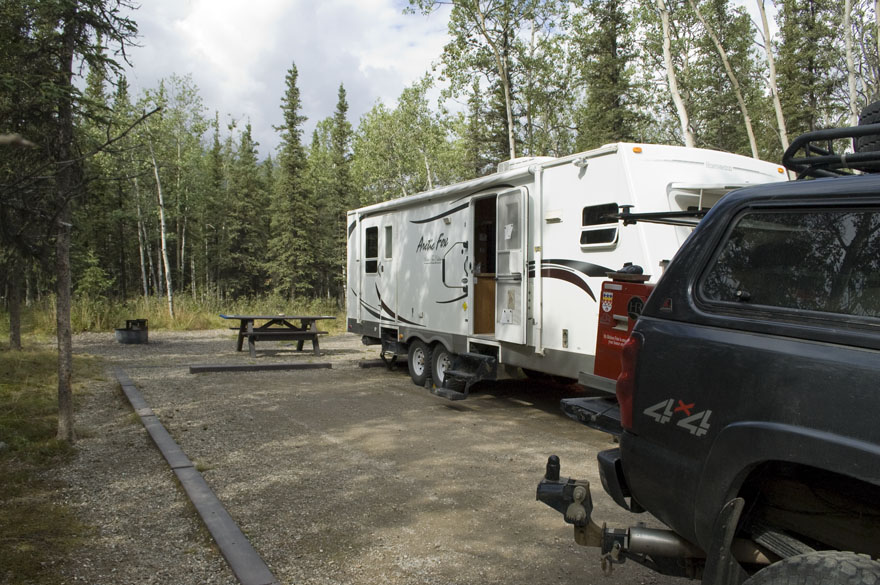
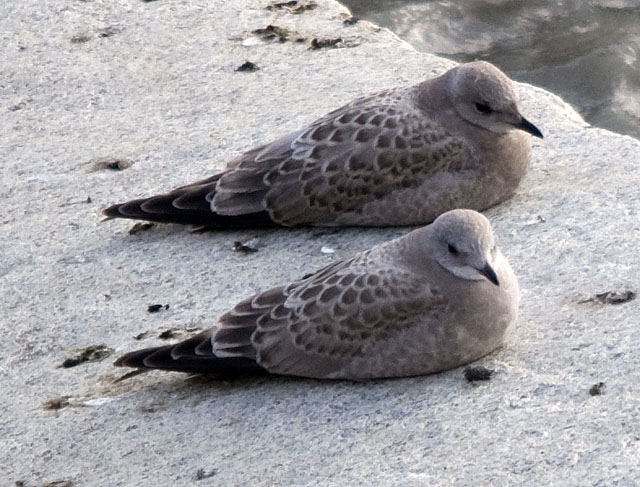
A pair of immature Mew Gulls resting on a rock along the river just outside Denali
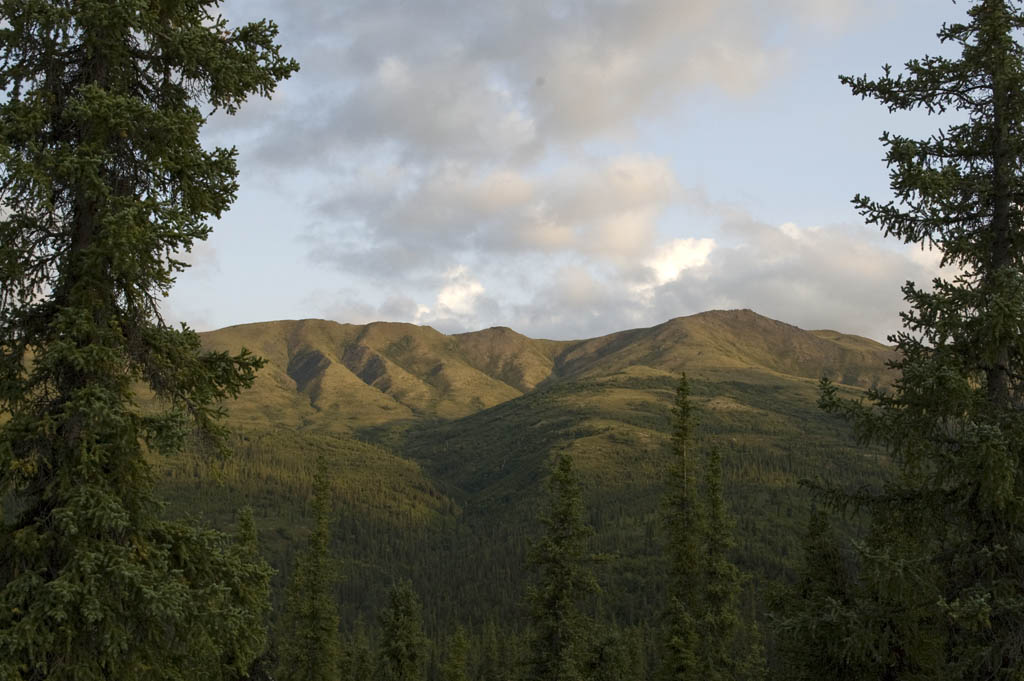
We drove up the Park Road each evening in a search for wildlife. Finding wildlife isn't always easy--finding beautiful scenery is a no-brainer, though.
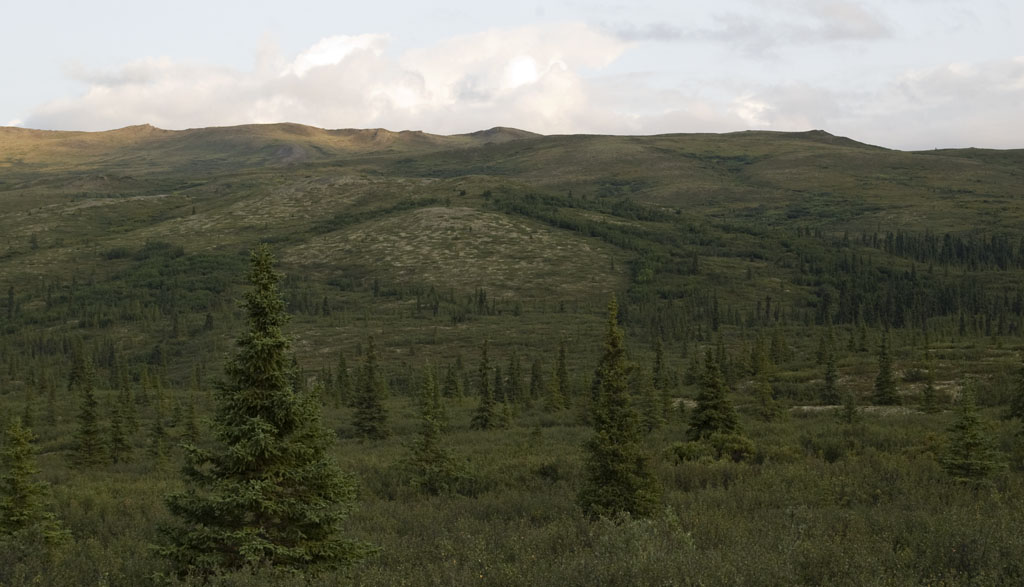
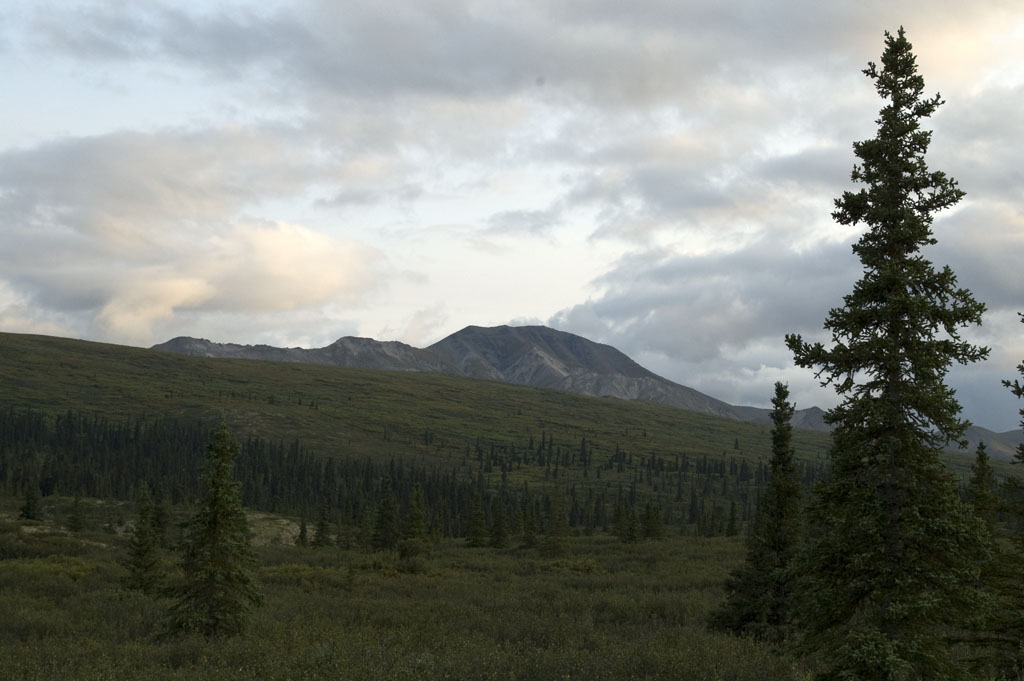
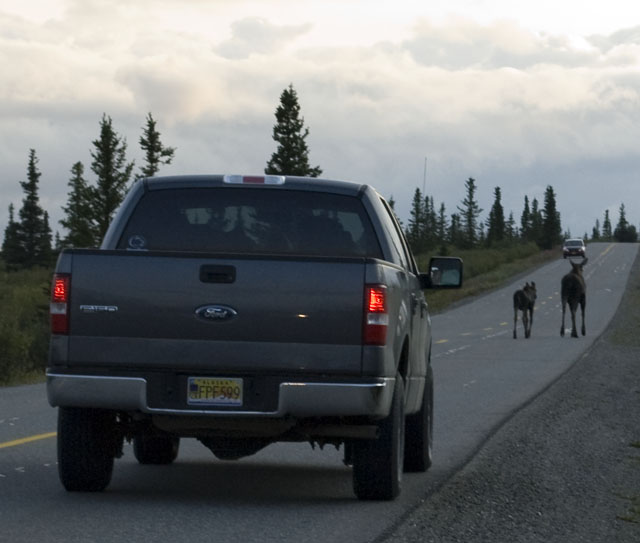
Traffic jam as a mother moose and her calf amble down the road.
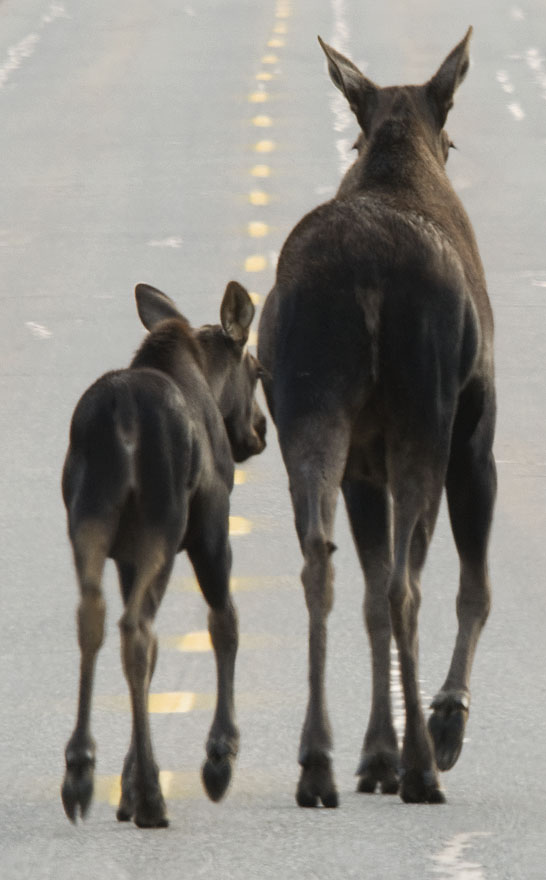
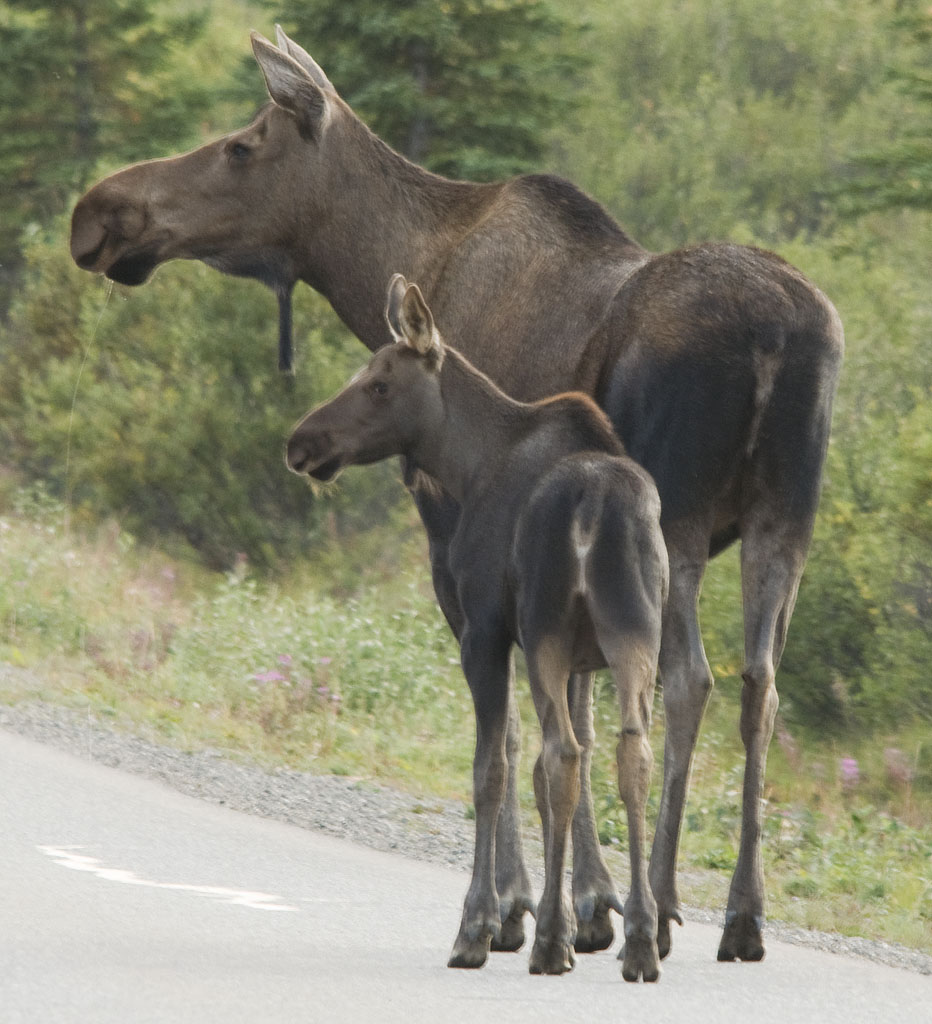
Check out the calf checking me out.
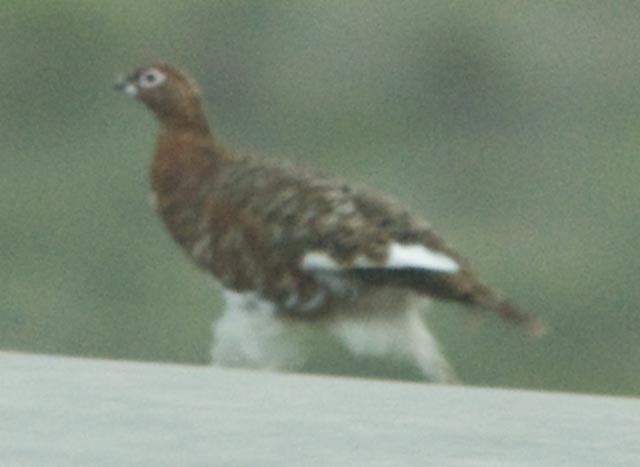
A male Willow Ptarmigan in what's left of his breeding plummage.
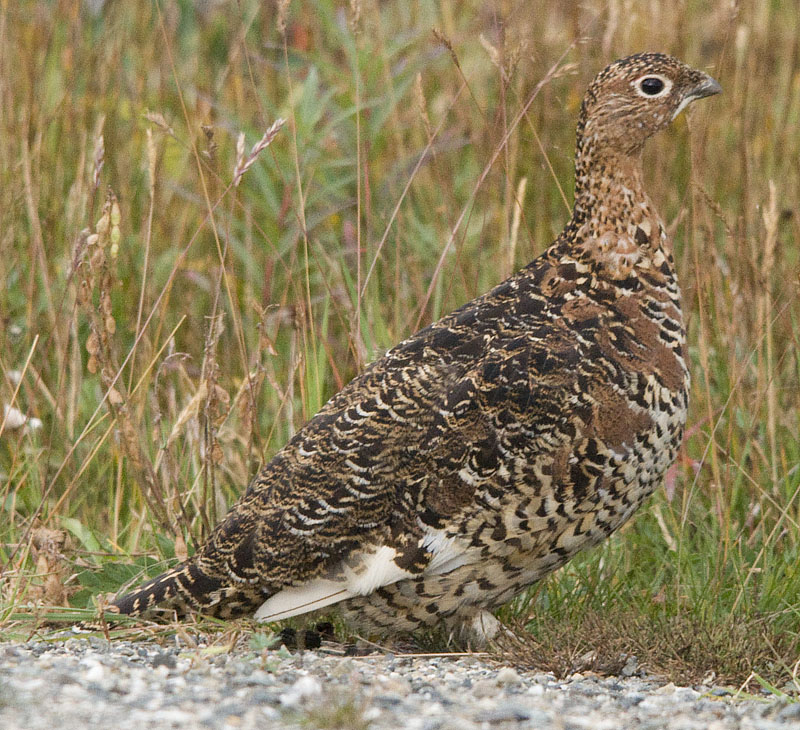
This female Ptarmigan was nearby
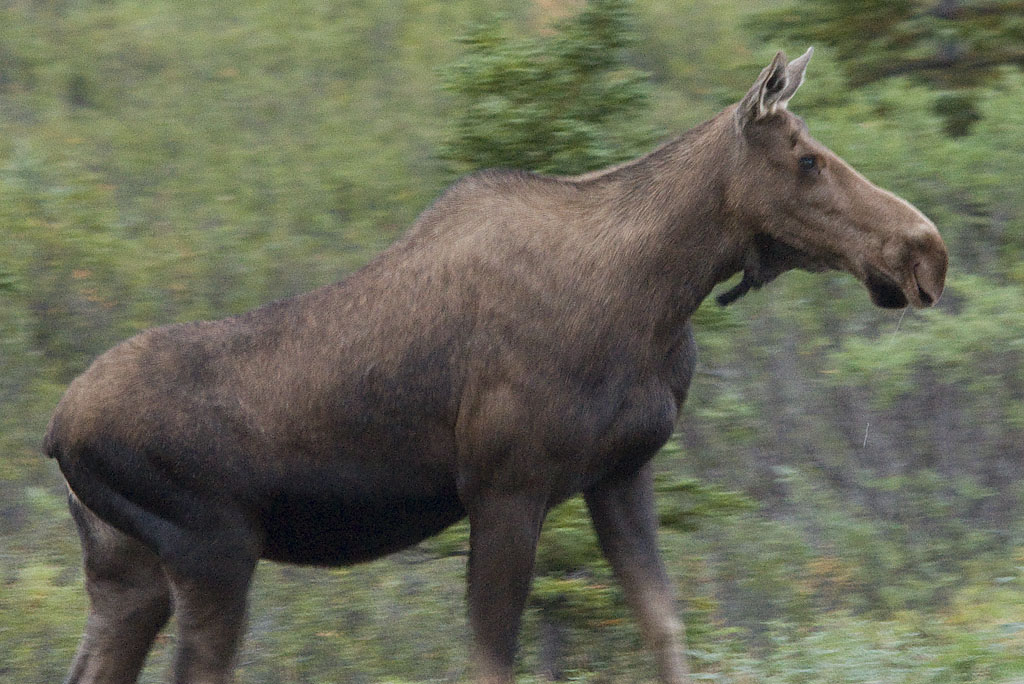
Another moose crossed the road on our way back.
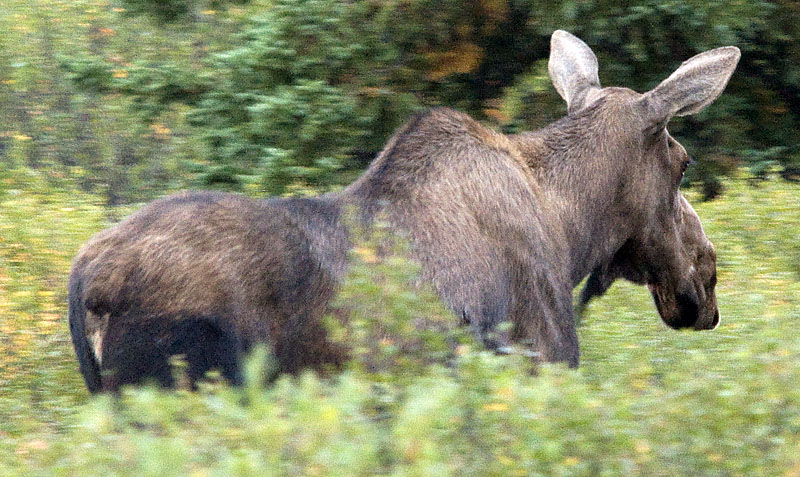
Some of the folks that got there before we did said there was a Bull Moose out there and she was headed for him, but after getting on top of the truck and scanning the tundra, we think they were full of bull.
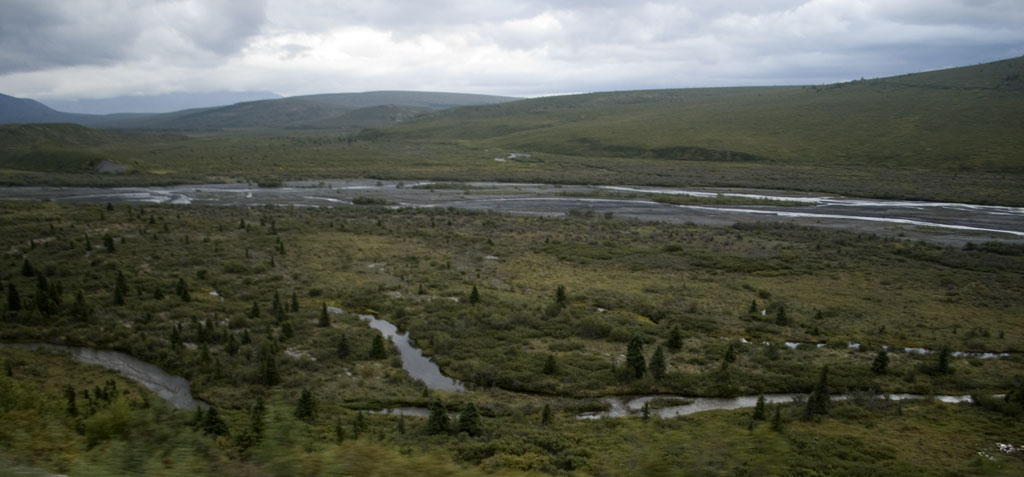
The scene just before the 15 mile point on the Park Road - as far as private vehicles can go, unless camping at a special campground that's another 40 miles out there. We were tempted to make our reservations for that campground, but the rules are that if you camp there you are only permitted to drive to/from the campground when arriving and departing the park. No running around.
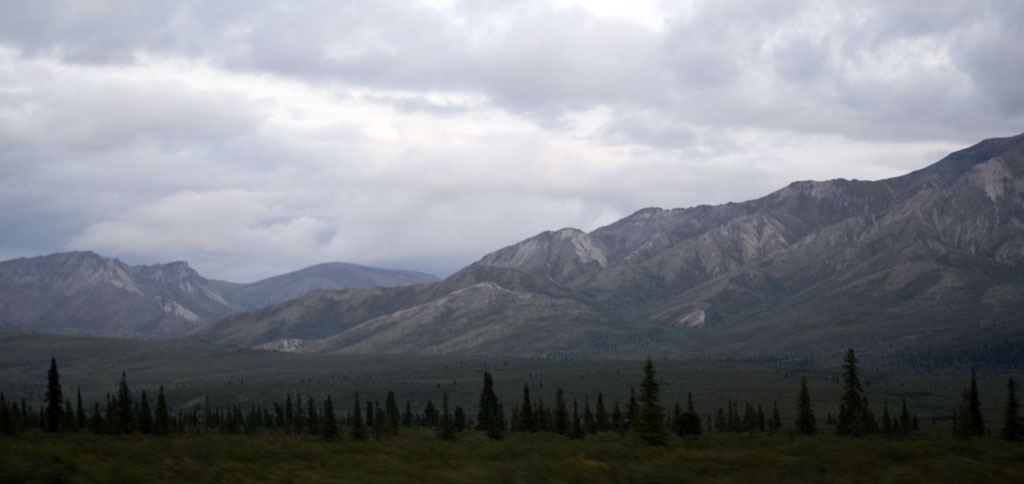
This is the view looking in the opposite direction.
August 8th - Denali National Park [top of page]
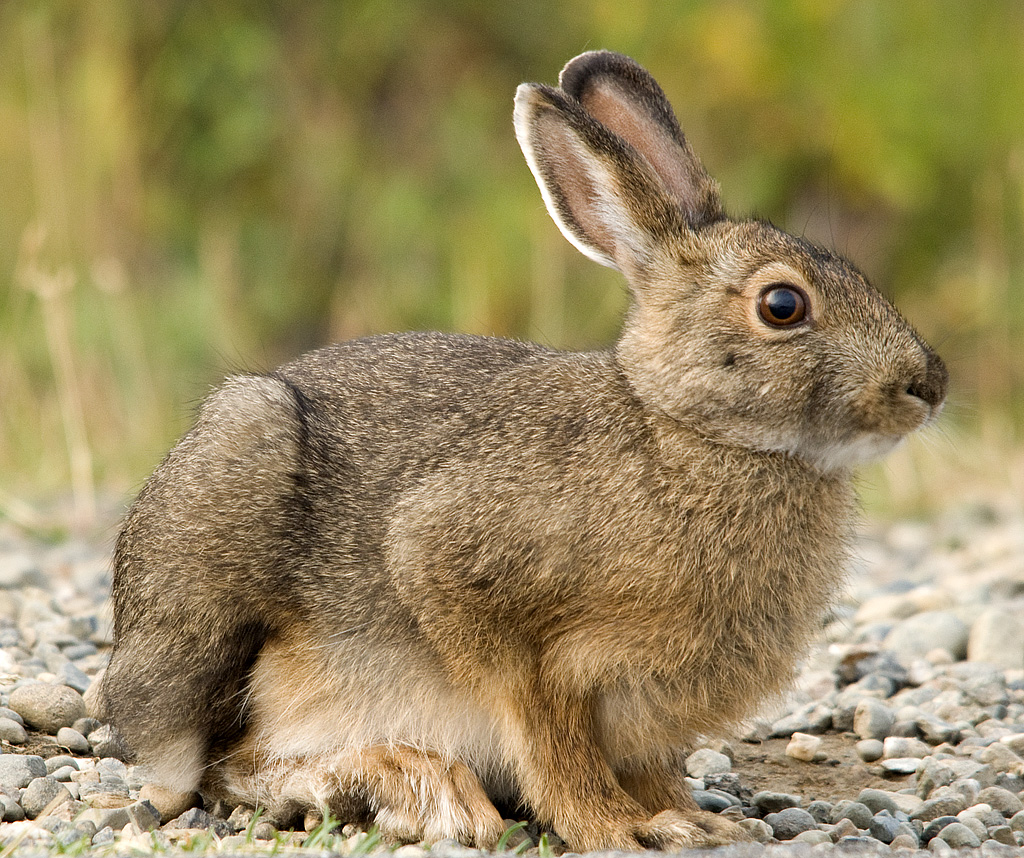
A close-up of an Arctic Hare. These guys are one of the mainstays of the food chain in the north, along with the Arctic Ground Squirrel. While we saw hundreds of Arctic Ground Squirrels all along the roads in the far, far north. We rarely saw the Hares until this evening. Then we saw several and were able to get a number of nice photos.
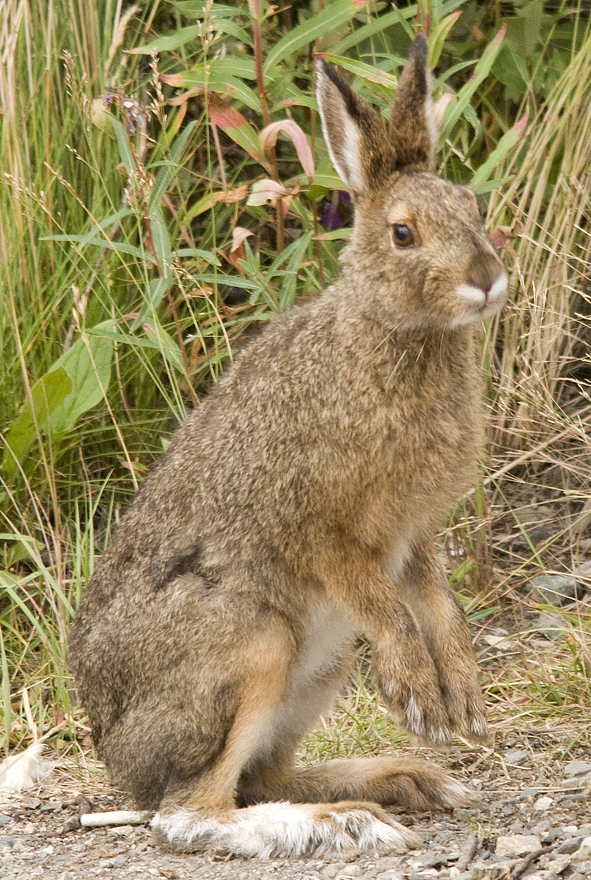
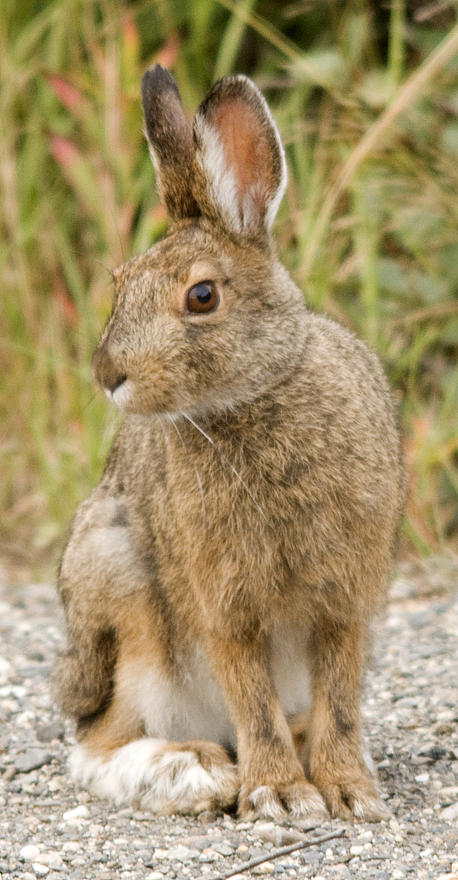
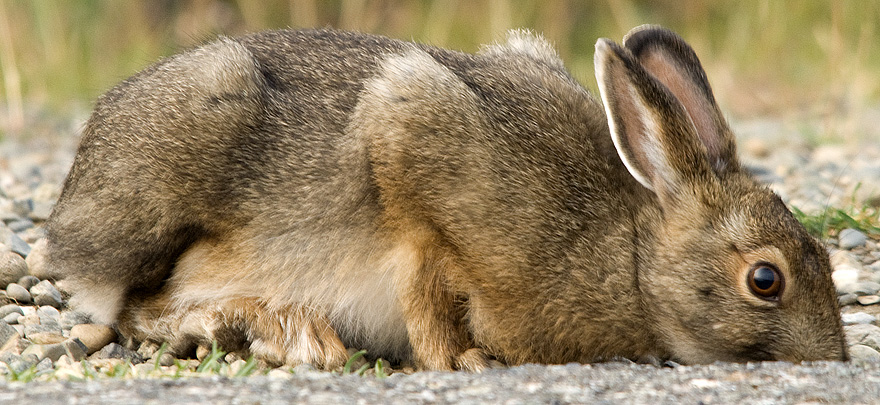
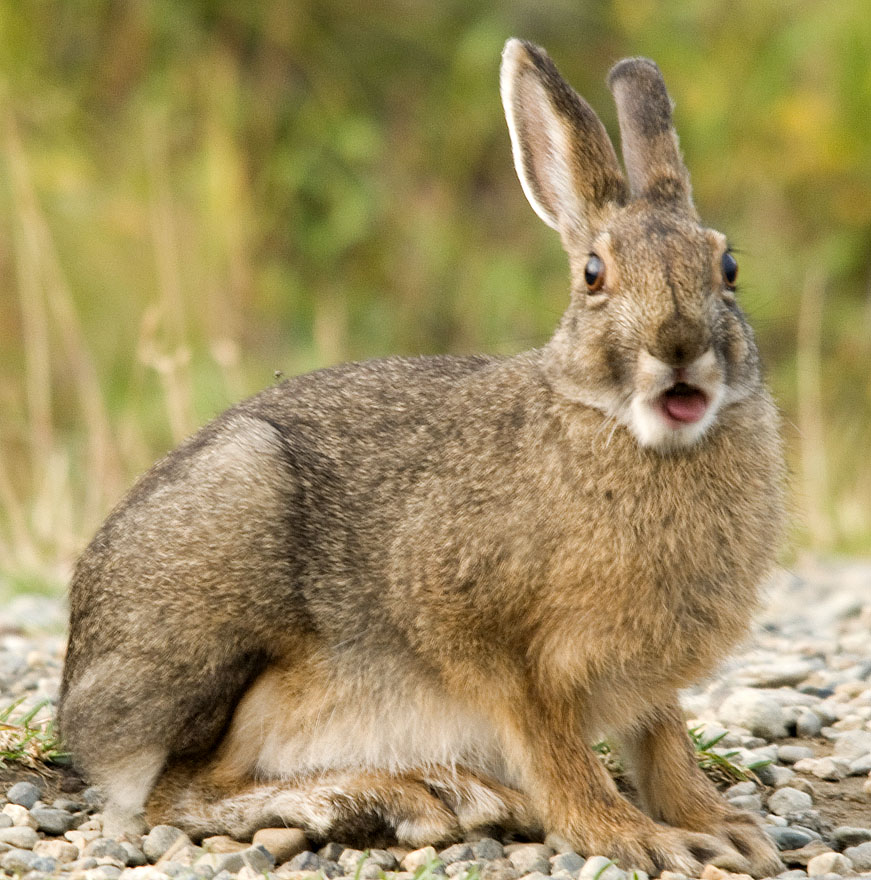
Not a great photo, but I thought the expression was cute.
Big feet, big ears, big eyes - very little brain. :-)
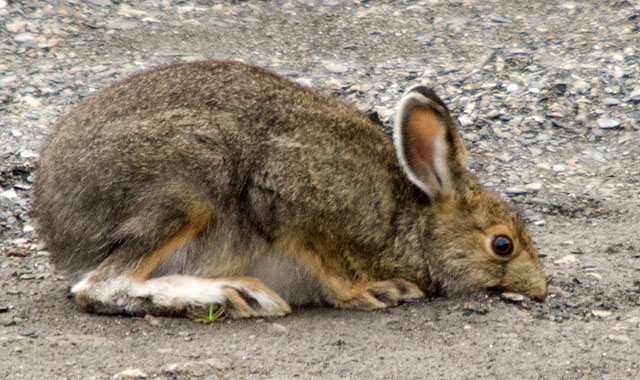
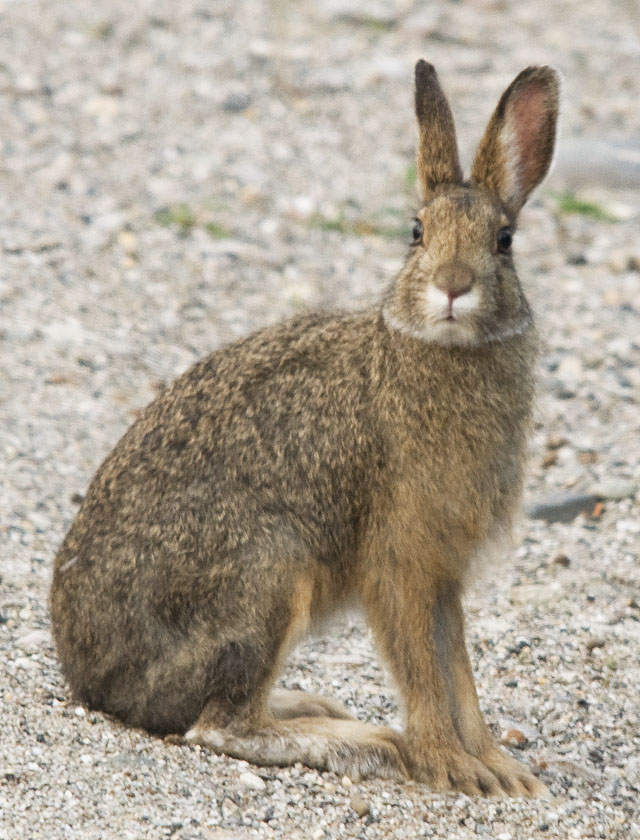
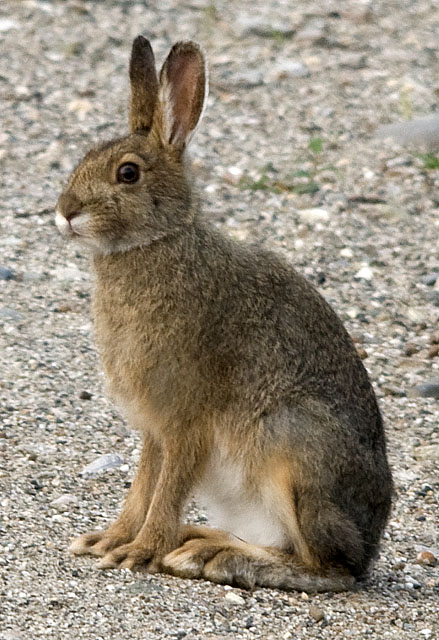
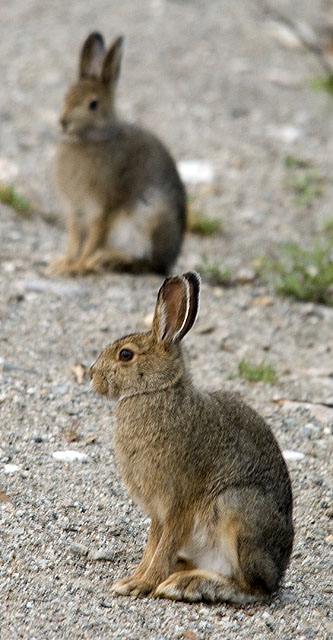
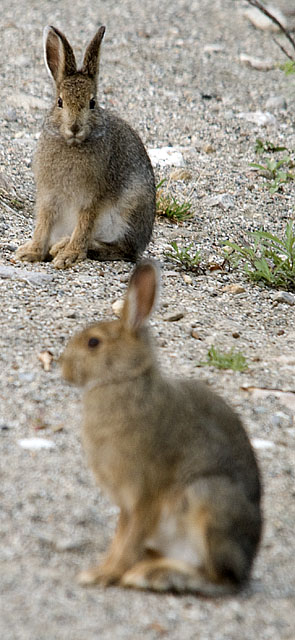
Alright already. Enough with the Arctic Hares, OK?
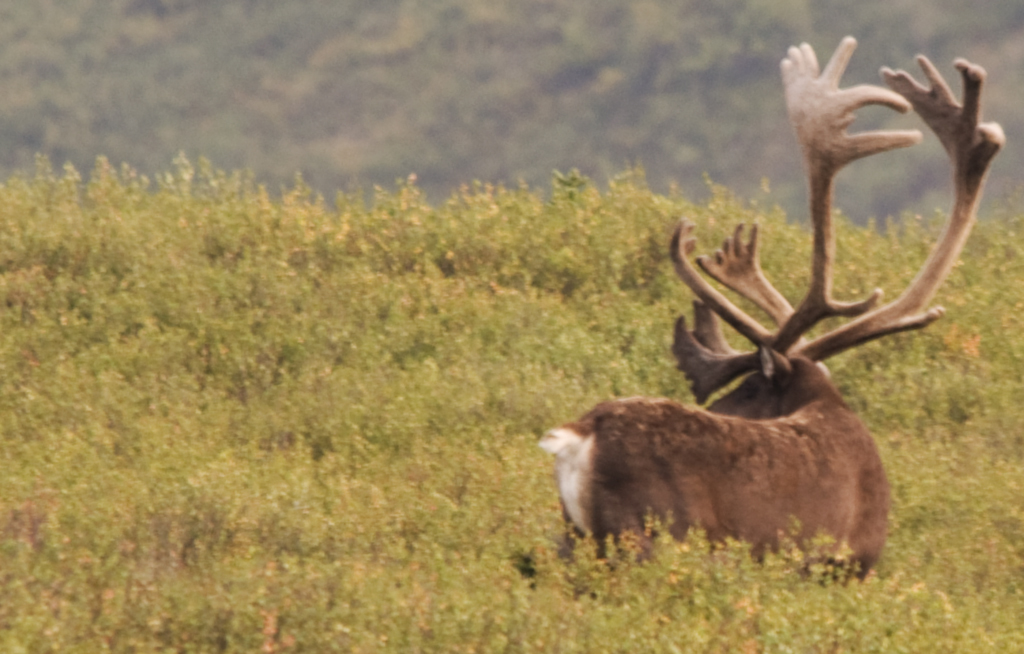
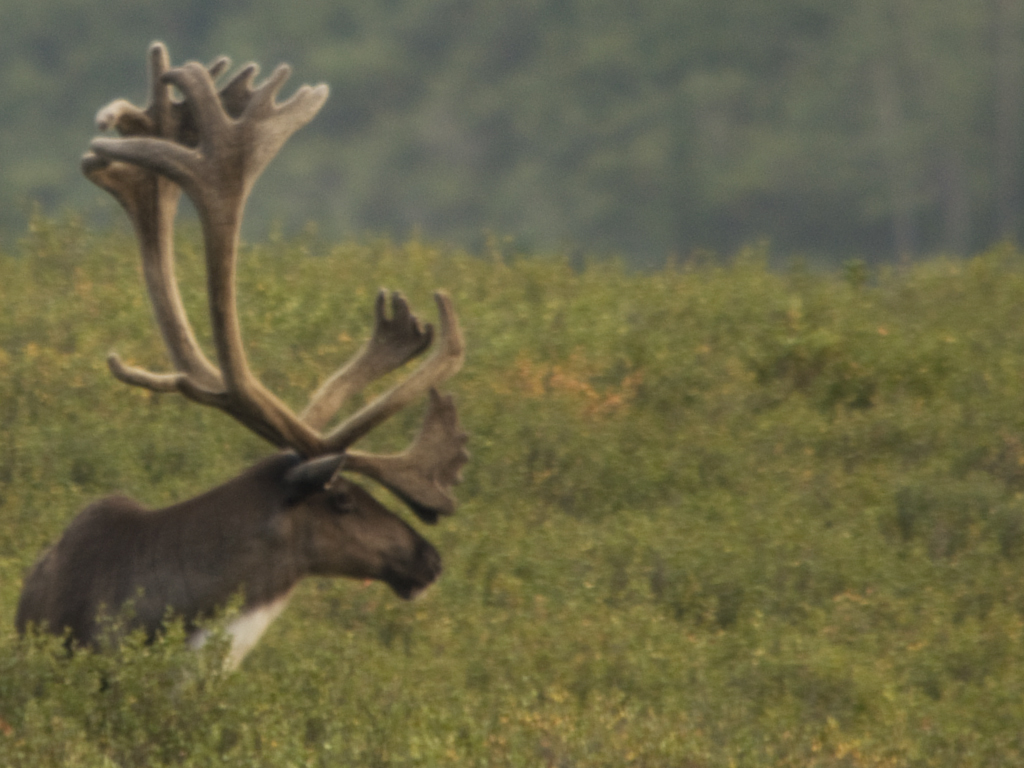
This Caribou was a ways away in the Tundra and seemed to be bedding down when we first spotted him. Then, he raised his head for a final look around and I was able to get this photo.
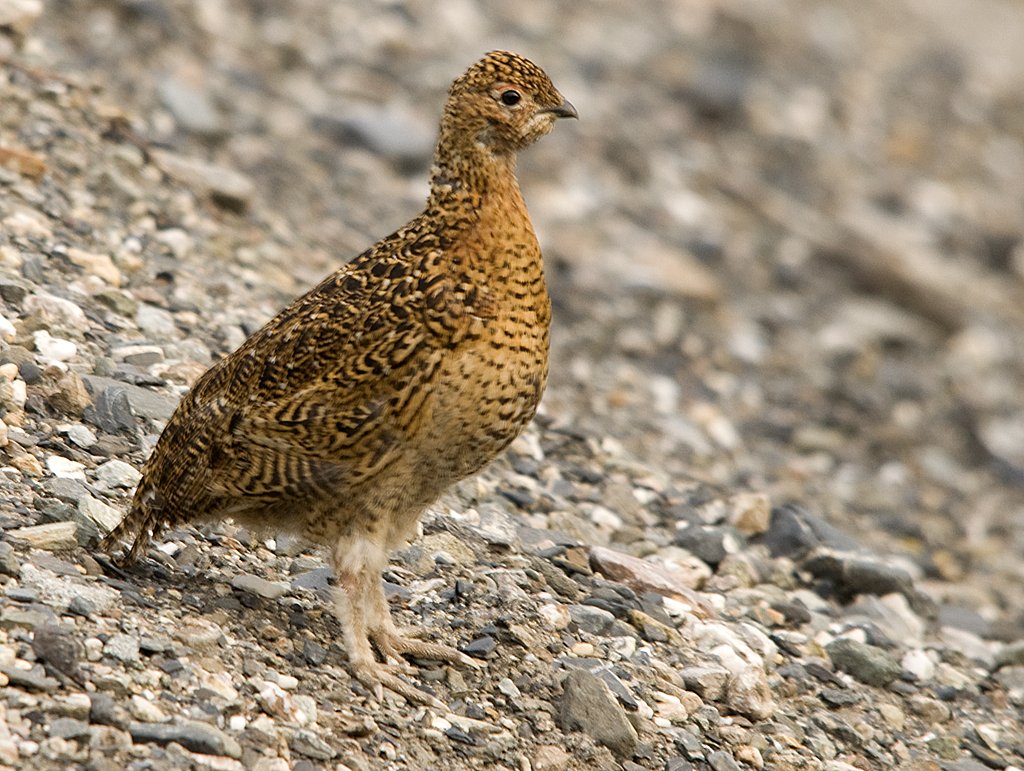
A young Willow Ptarmigan
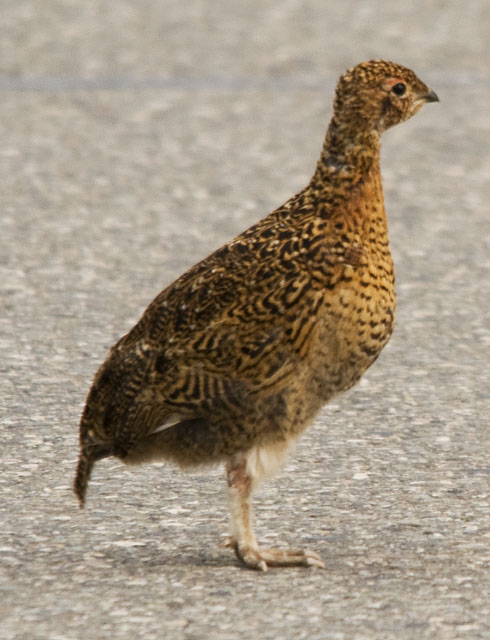
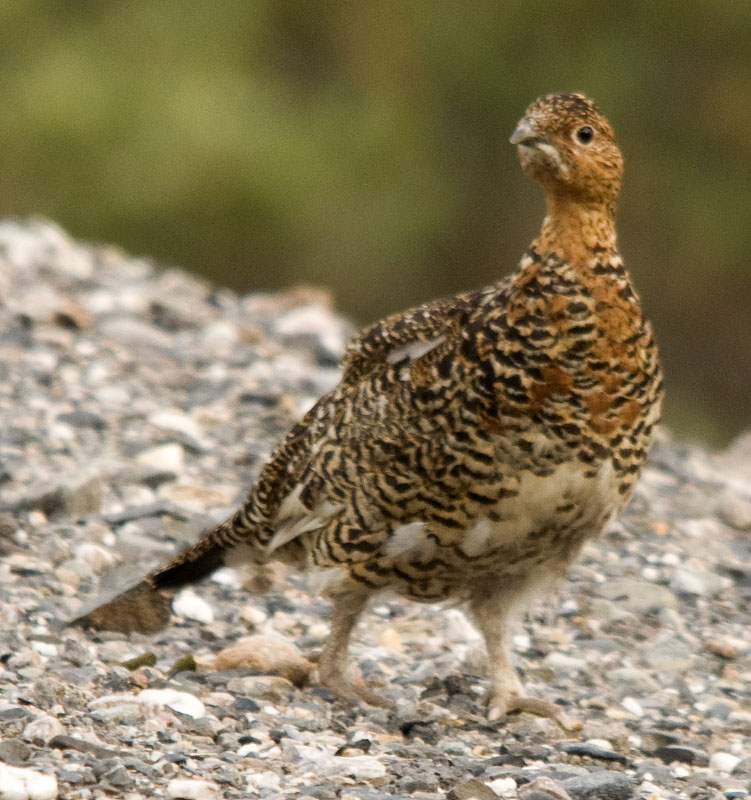
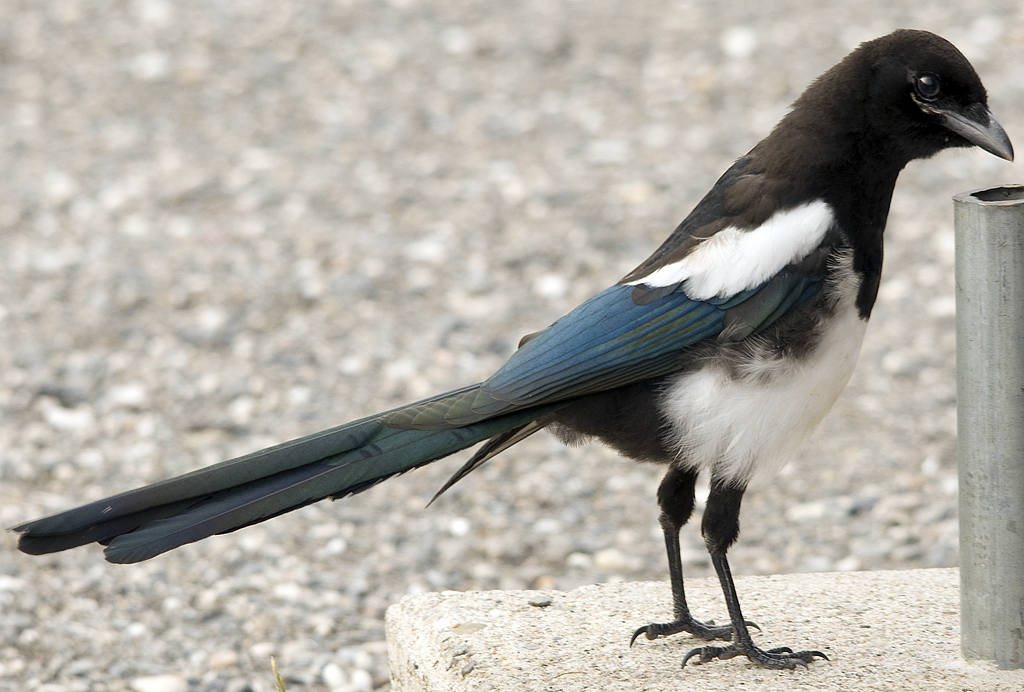
This Black-billed Magpie was fascinated by what might be in this pipe.
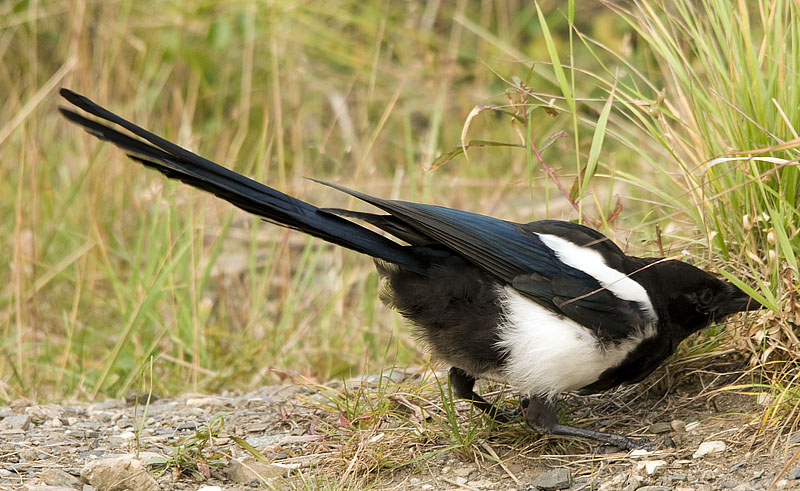
After he figured out that he couldn't get to whatever was in the pipe, he found something in the nearby grass.
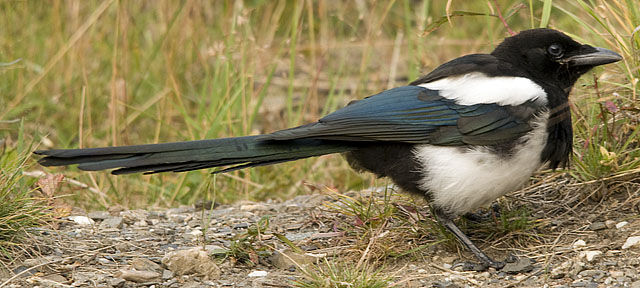
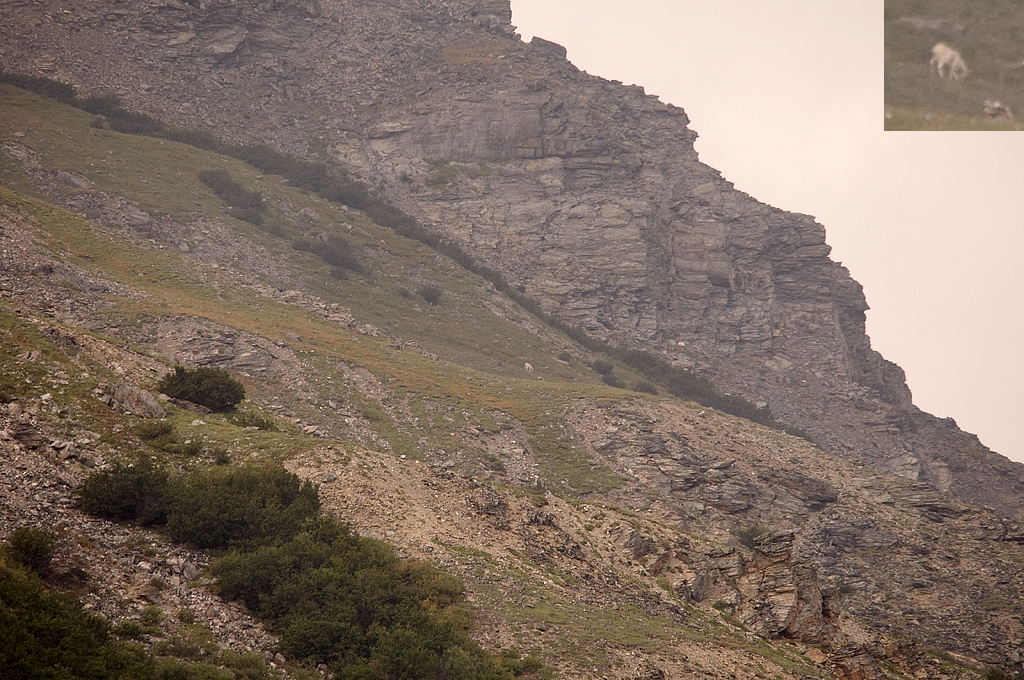
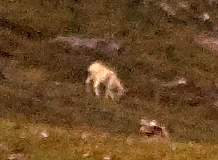
It took a while scanning this mountainside with the binoculars to find this one Dall Sheep. He's in the middle of the big photo. The small photos are zoomed in crops of the large photo.
Note: The large photo was taken with the 500mm lens--it's a long hike to where this sheep is.
August 9th - Denali National Park to Denali State Park [top of page]
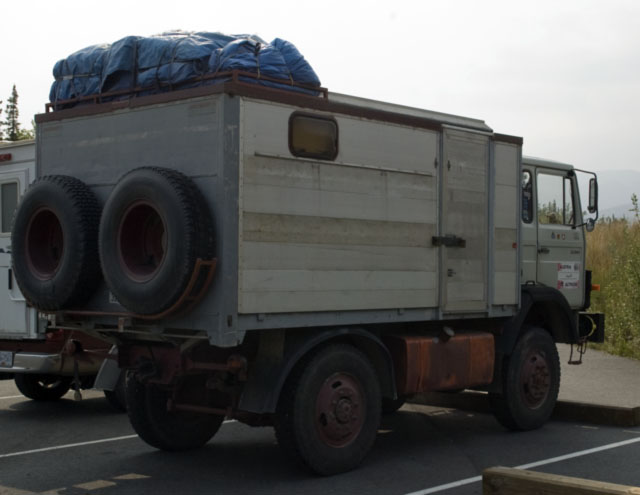
We've seen a wide variety of what we call "expedition vehicles" on this trip. Most are from Europe, Germany & Switzerland, primarily. Some are very professional & obviously purpose-built. Even the largest ones are small by U.S. RV standards. Some are obviously home-brew modifications of commercial vehicles. This is one of the more basic campers on a commercial truck. Note how the structure of the camper appears to have started out life as a shipping container.
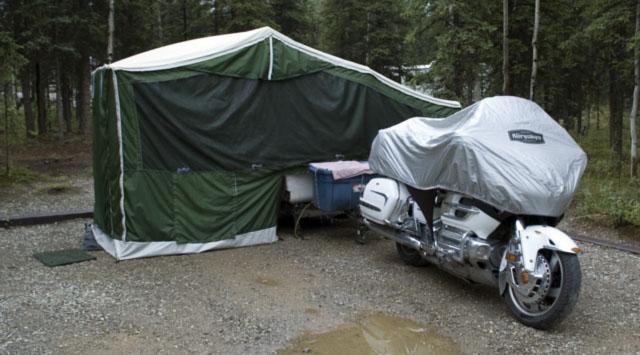
The biggest little pop-up trailer we've seen. It never ceases to amaze us how clever some people are.
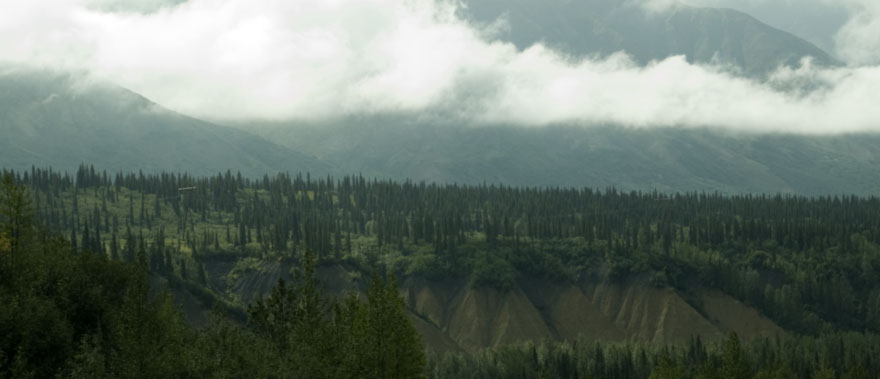
One of the vistas along the Parks Highway.
After a few days in the hyper-regulated Denali National Park, we enjoyed a few days at Denali State Park on our way to Anchorage. We took a walk along the lakeside trail with the dogs in the afternoon--the dogs weren't even allowed off the paved pad the RV was parked on in Denali National Park--and discovered a wetland at the inlet end of the lake. A chat with the campground Host netted info on where we'd be most likely to find the Loons on the lake. So, that evening Gracie & took a hike on the trail leading to that end of the lake and the wetland in search of Loons.
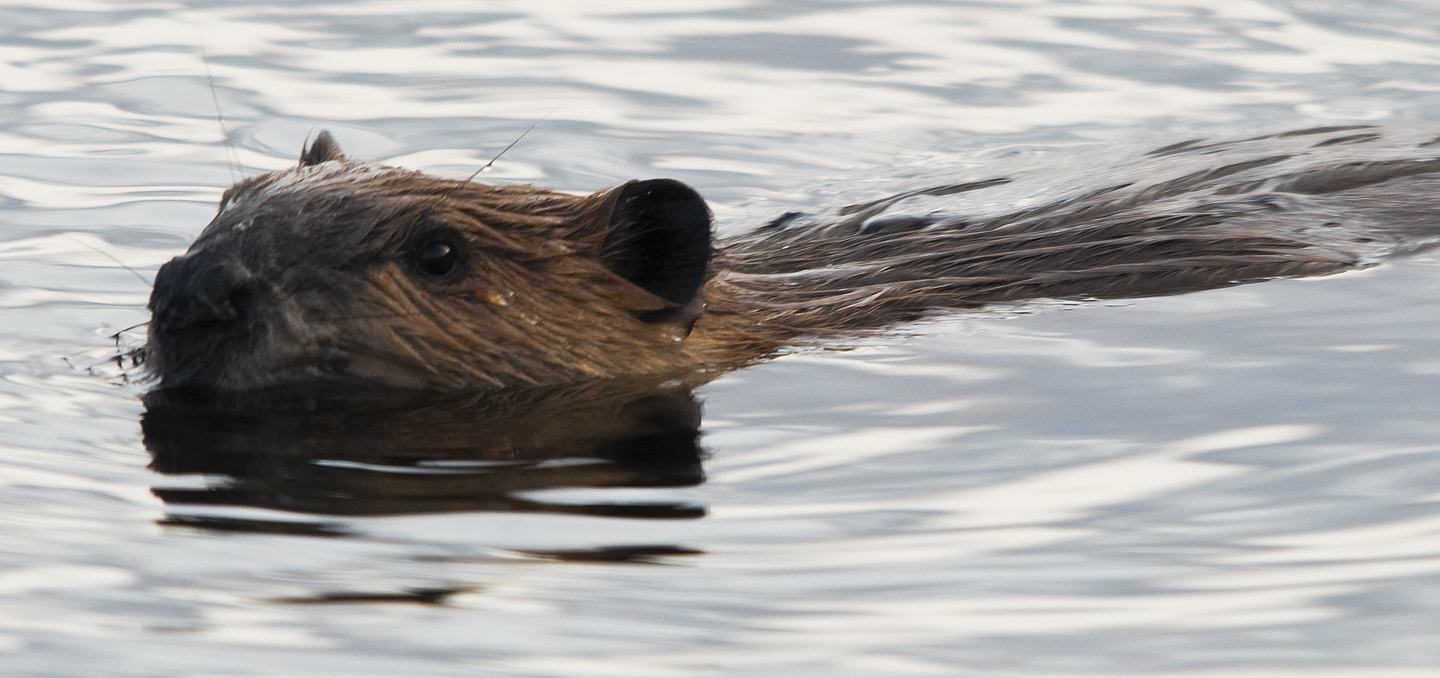
While we stood at the end of the trail scanning the lake for birds and seeing nothing, this beaver swam by about 5 feet in front of us. I spent the next couple of hours photographing beaver.

A full-length view of the beaver.
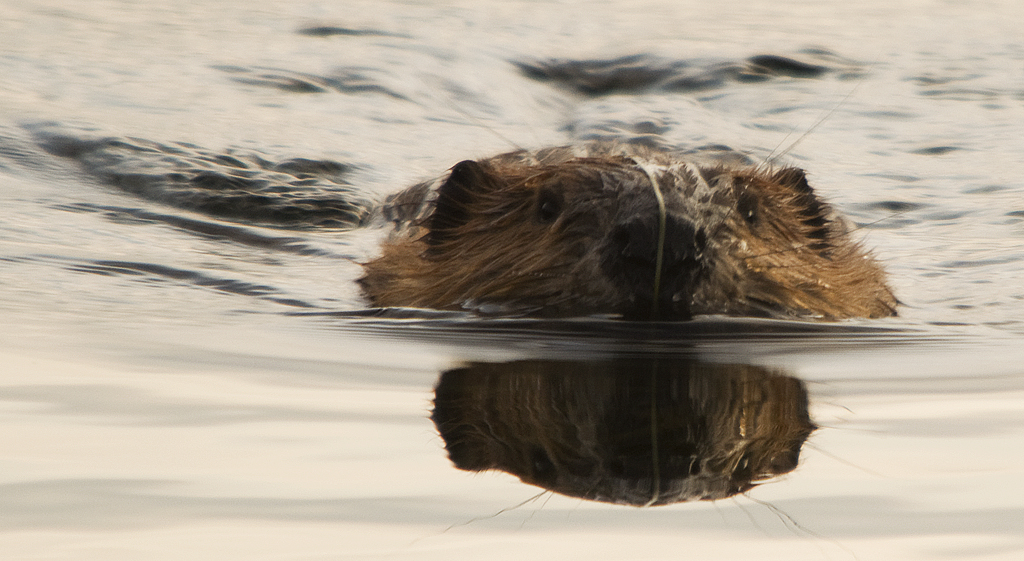
This beaver would swim out to a shoal area of the lake where a lot of grass was growing and lay on the surface of the water. He'd munch away making quite a chatter with his teeth clacking while chomping away on the grass. Every once in a while, he'd swim back to shore and up a small side channel to the interconnected ponds behind me. He's headed back to shore in this photo, complete with one blade of grass across his nose and face.
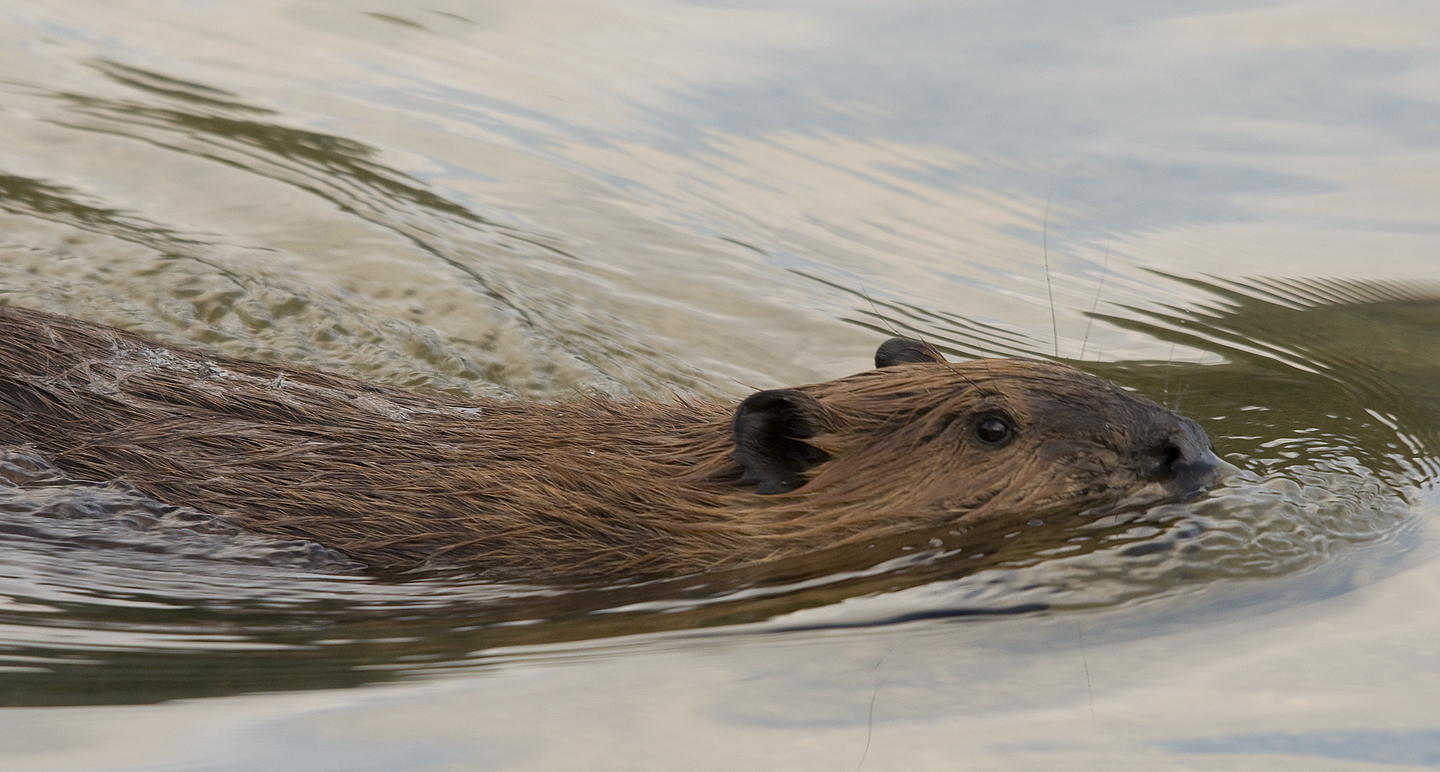
In my previous forays of photographing beaver, I'd gone out at 9 PM or later. While I frequently found them, I had a a number of challenges to getting good photos; not close enough for full-frame photos without resorting to tele-extenders, the sun was on the far side of the beaver so they were backlit, the light was too dim, etc. As a result, I got to see a lot of beavers but my images were dullsville. As you can see from these photos, I didn't have any of these problems here.
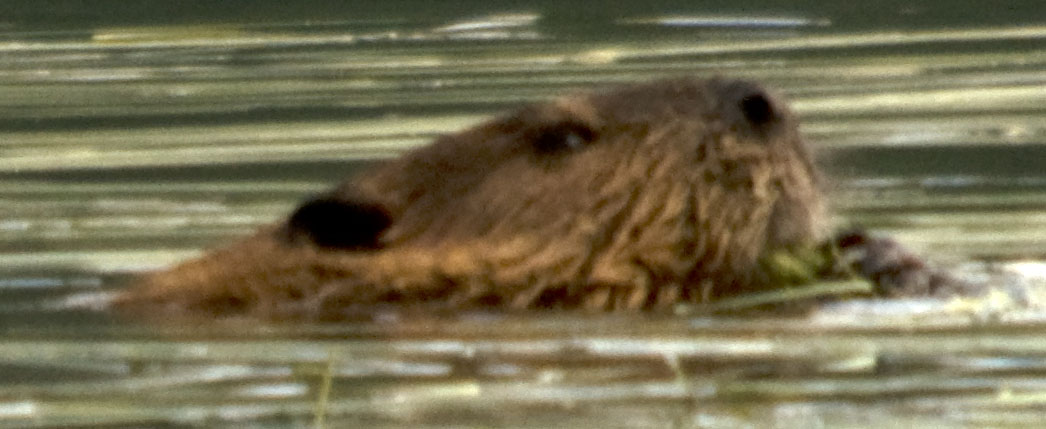
Well, sometimes I did. These photos are of the beaver out there on the lake eating grass. Note how they use their front paws.

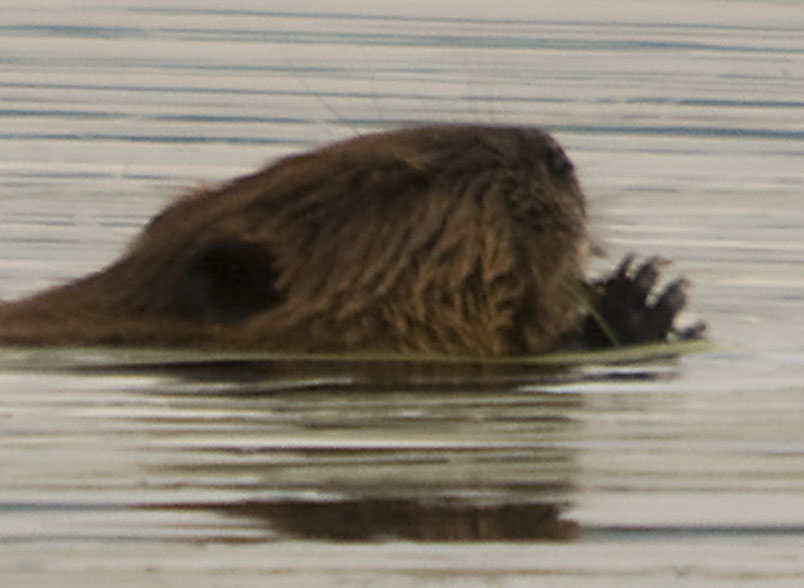
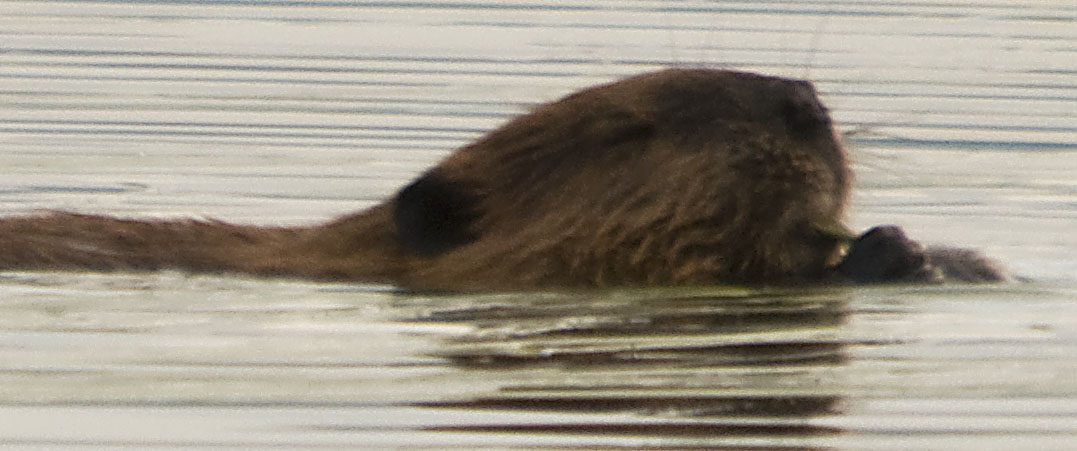
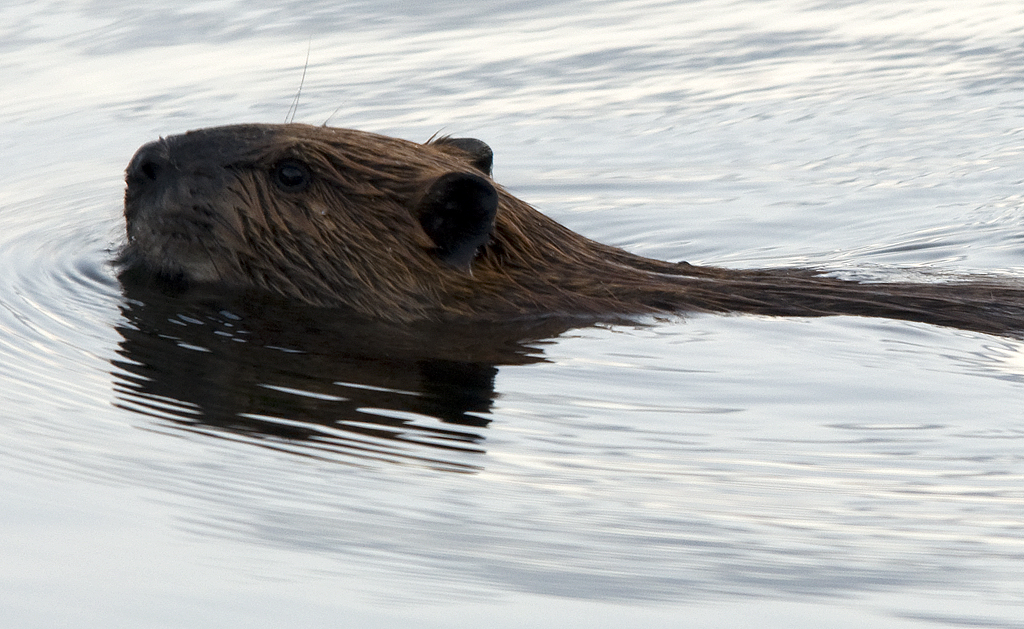
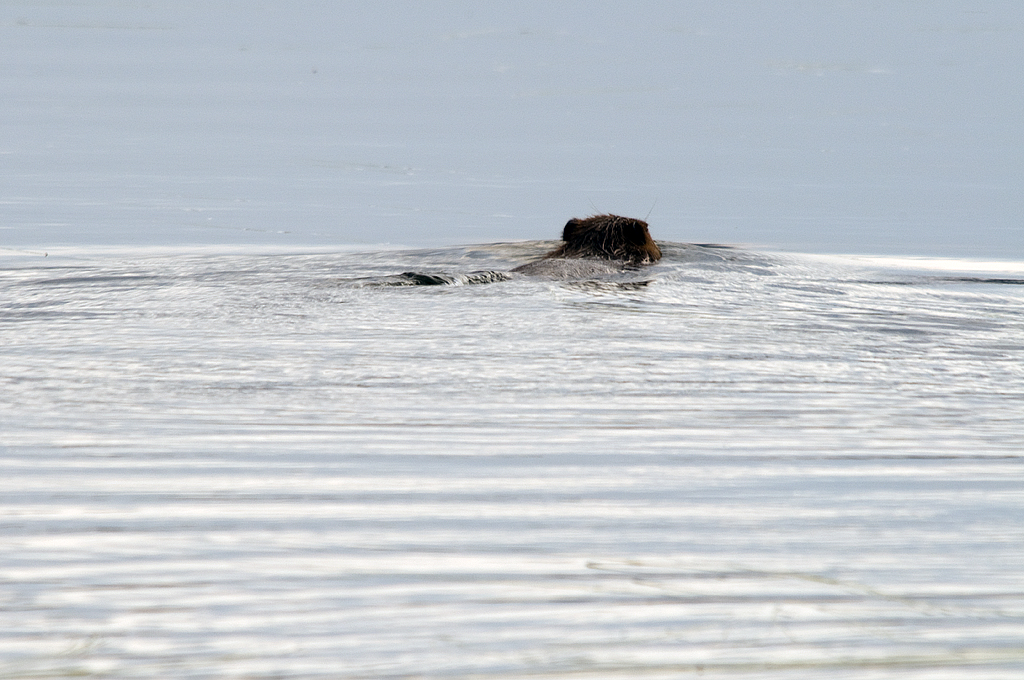
I wanted to title this image "Beaver Going out to Sea on a Moonlit Night.
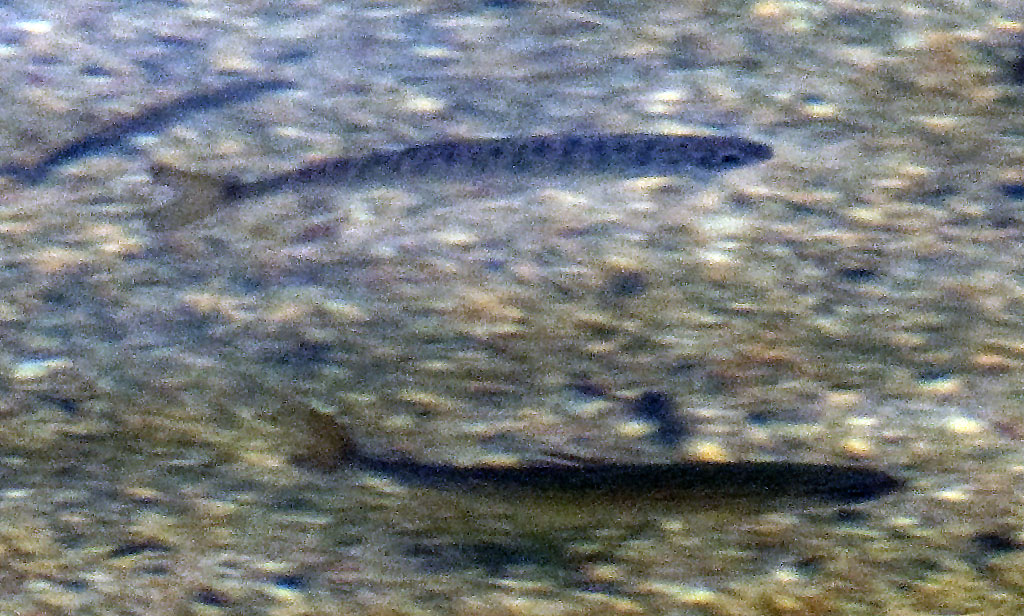
Maybe some of you fish experts can ID these guys. I'm guessing the top one is a Sockeye (Red) Salmon and the bottom one is a Rainbow Trout. Perhaps, I'm cheating because a couple of days later I found adults in the stream above the lake.
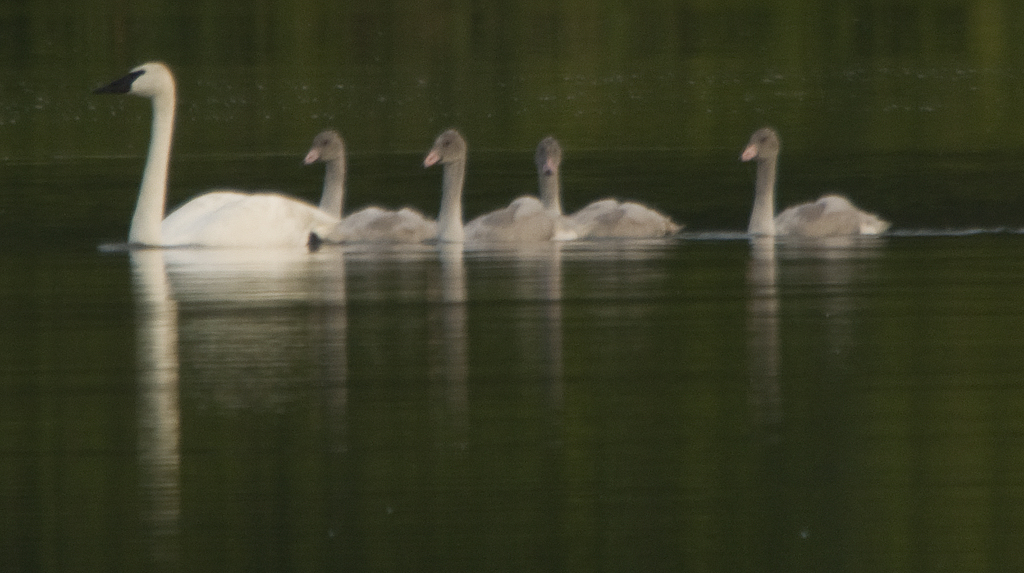
While photographing the beaver eating grass out on the lake, a family of swans swam out from the stream area at the far end of the wetland. Mom and the kids continued around the reeds to feed while dad went a tad offshore to do feed off the bottom.
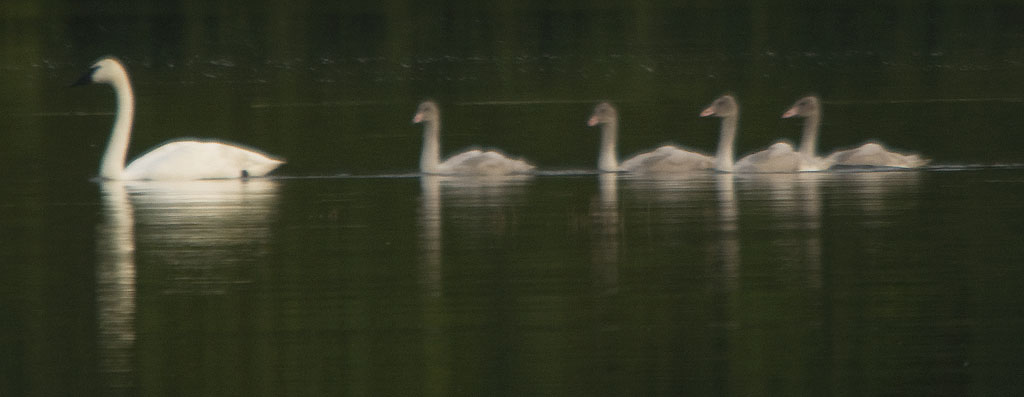
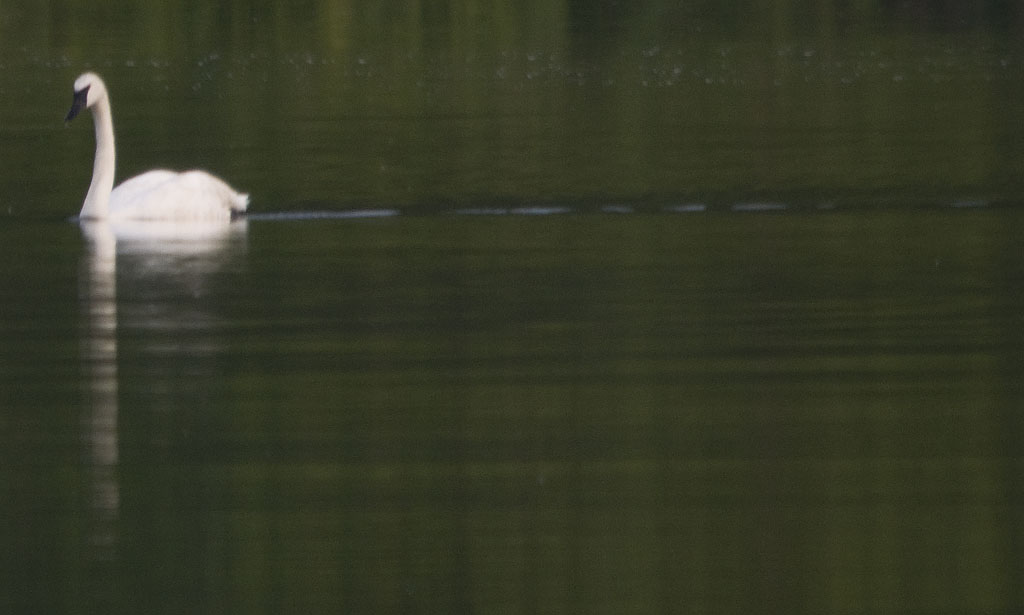
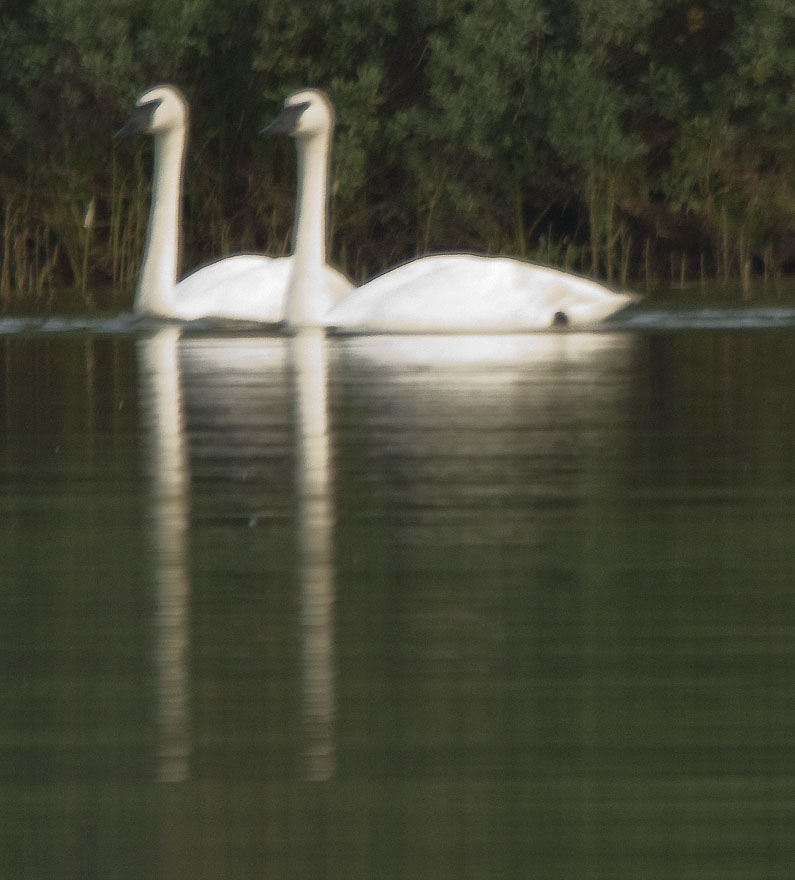
Dad rejoins mom and the two look so regal together.
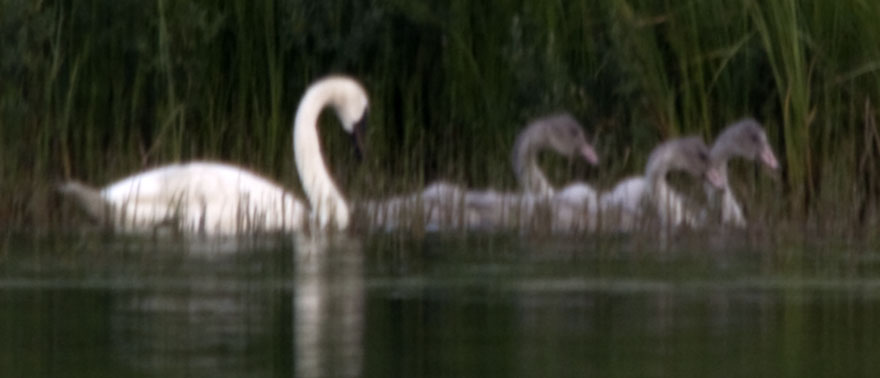
Mom and the little ones -- CJ calls them 'Swanlettes' -- eat the tender tops of the reeds.
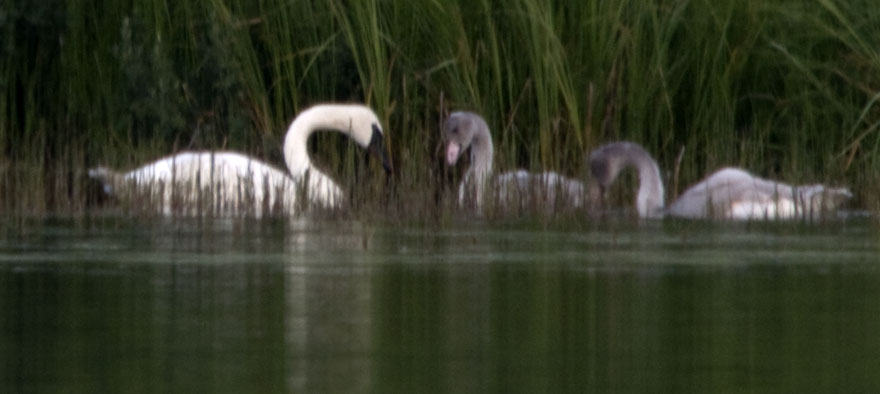
August 10th - Denali State Park [top of page]
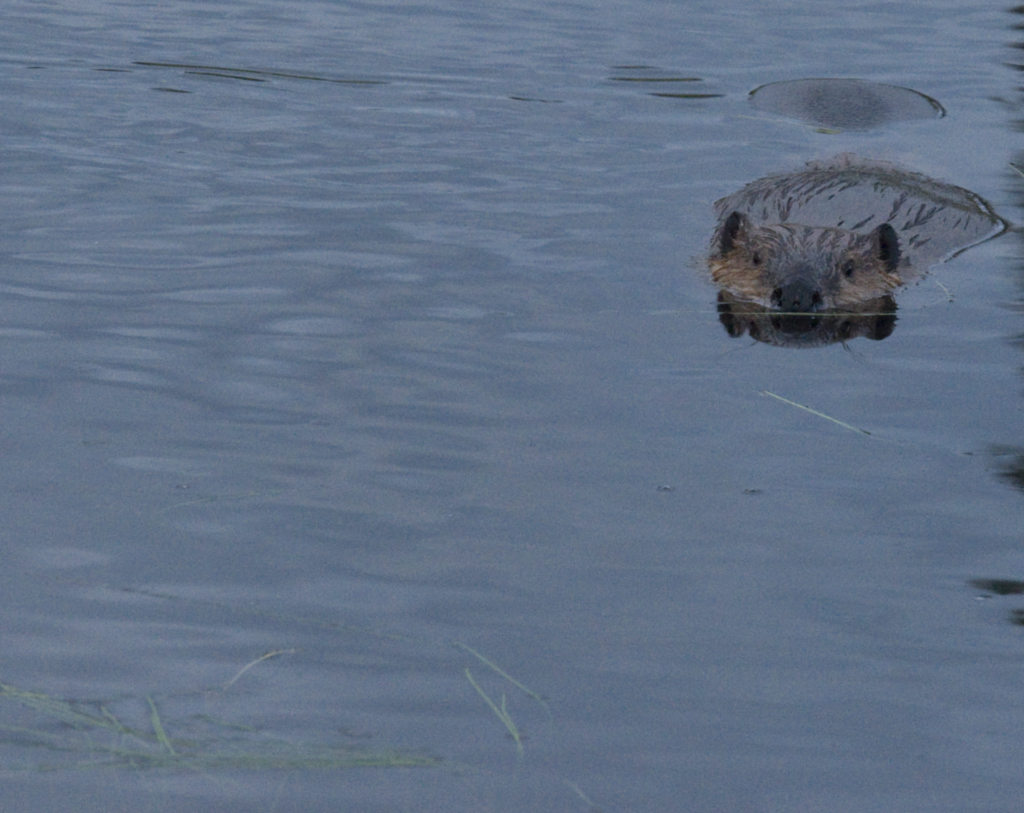
Gracie & I left camp earlier this evening to have better light for photographing the beaver. The other part of the plan was to set up a viewing spot on the nearest pond instead of the lake. There was a trace of a trail--probably an animal trail--along the small channel between the lake and the pond about 100 feet away.
As we were working our way along this trail, a beaver suddenly splashed into the channel from right under my feet. It must have been in the brush on the side of the channel, or in the same trail we were following when I nearly stepped on it. A few seconds later it surfaced in the pond in front of me and looked straight at me to figure out what nearly stepped on him. I got this photo before he dove and disappeared. I figured this little snafu would screw up my beaver watching, but as you'll see it didn't even slow it down.
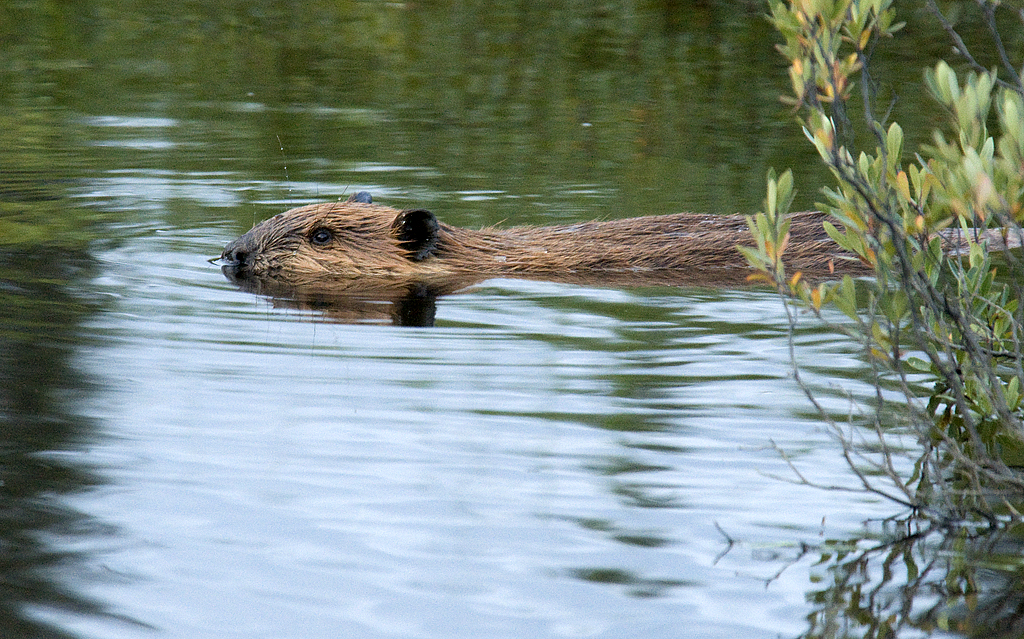
I set up my tripod in the brush at the edge of the pond, and Gracie laid down next to me. She never made a sound, even when she spotted them. The location was close to perfect. As you can see, I not only had enough light, the light was behind me so the beavers were nicely lit instead of being backlit.
It didn't take long to discover that the beavers (about 6 of them) had 3 channels between this pond and a larger one on my right where their lodge was. A fifth channel went further upstream into the background where they were gathering building materials and food. I could just see parts of the larger pond, but I figured out that when I saw a beaver in one of two places in that pond, it would be entering my pond in a moment via one of the side channels. So, there was a steady flow of beaver traffic, some of which I could predict and prepare for. Very cool!

I wonder if this is the same beaver that had a strand of grass across his face last night?
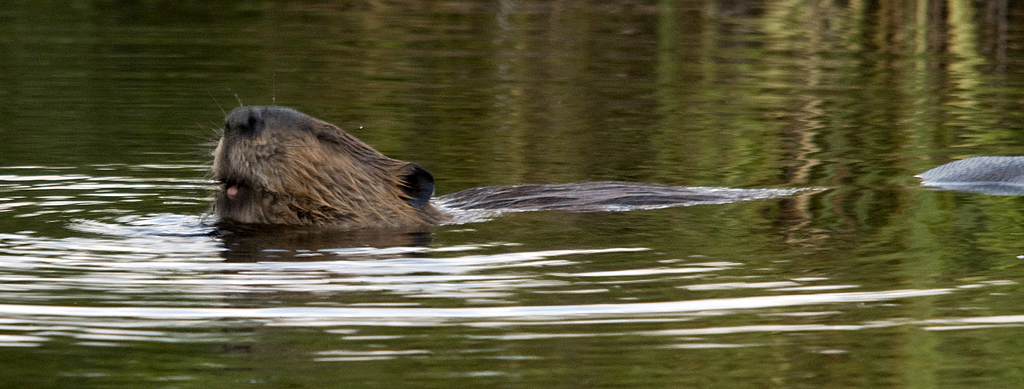
Take enough photos and some are bound to be humorous.
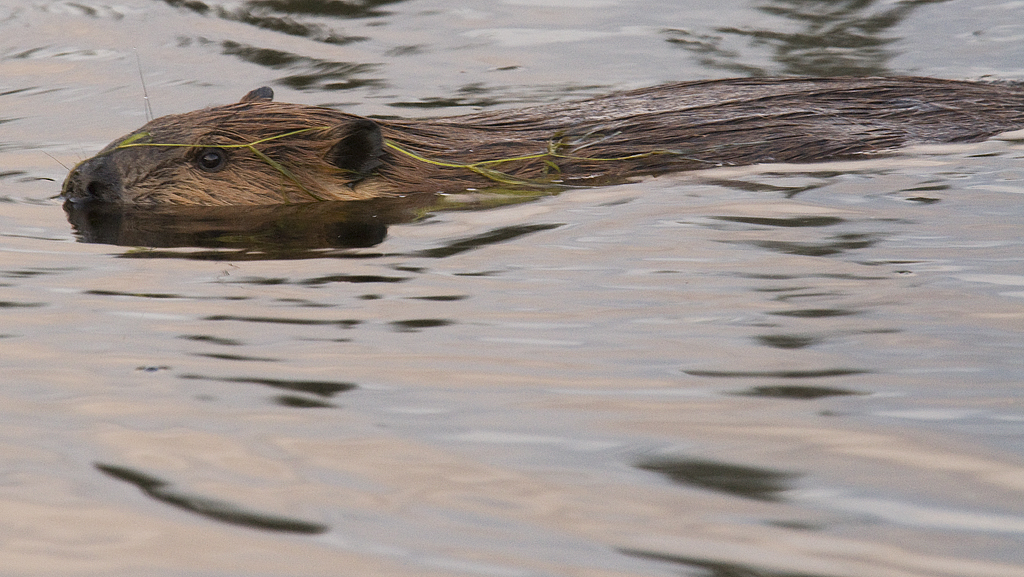
After a while, I learned to recognize two of the beaver by the shape of their ears.
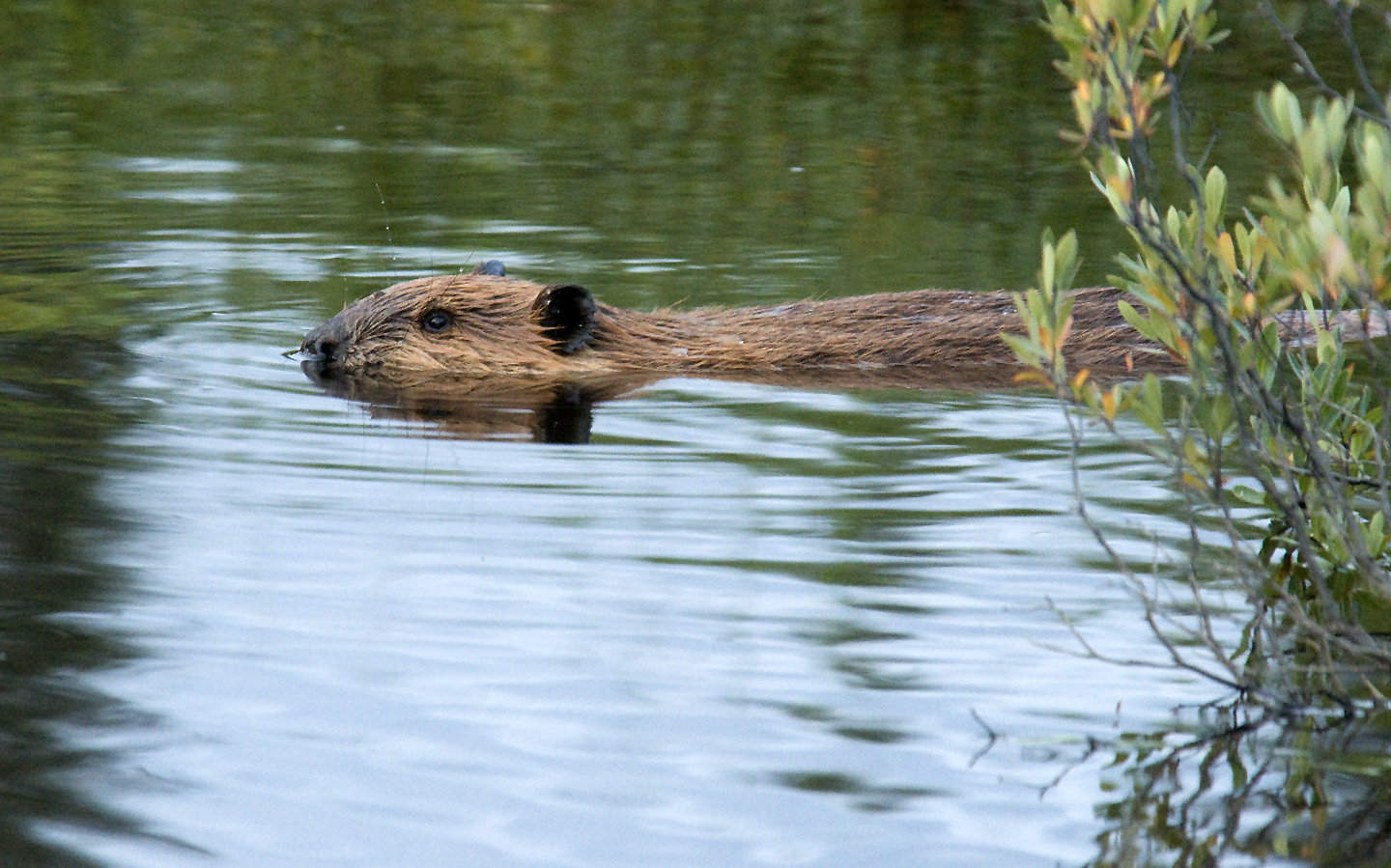
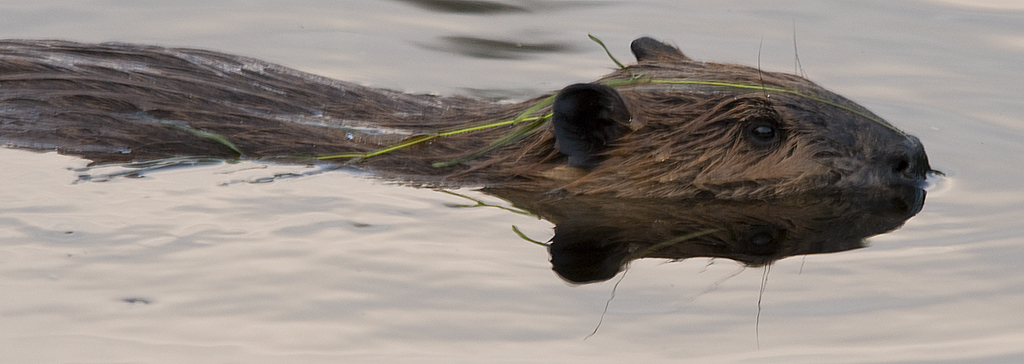
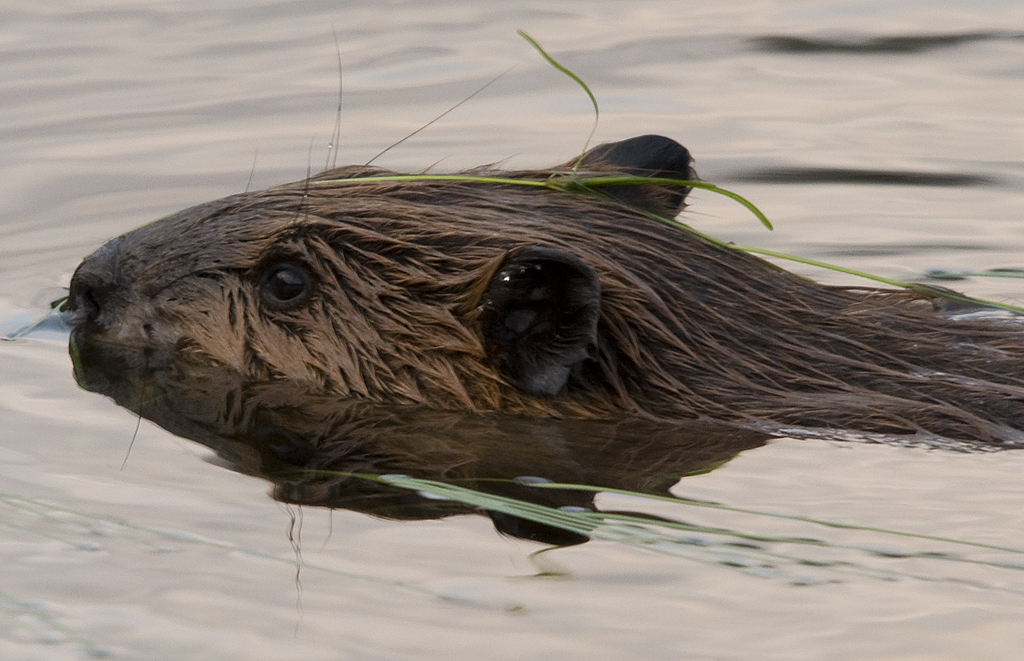
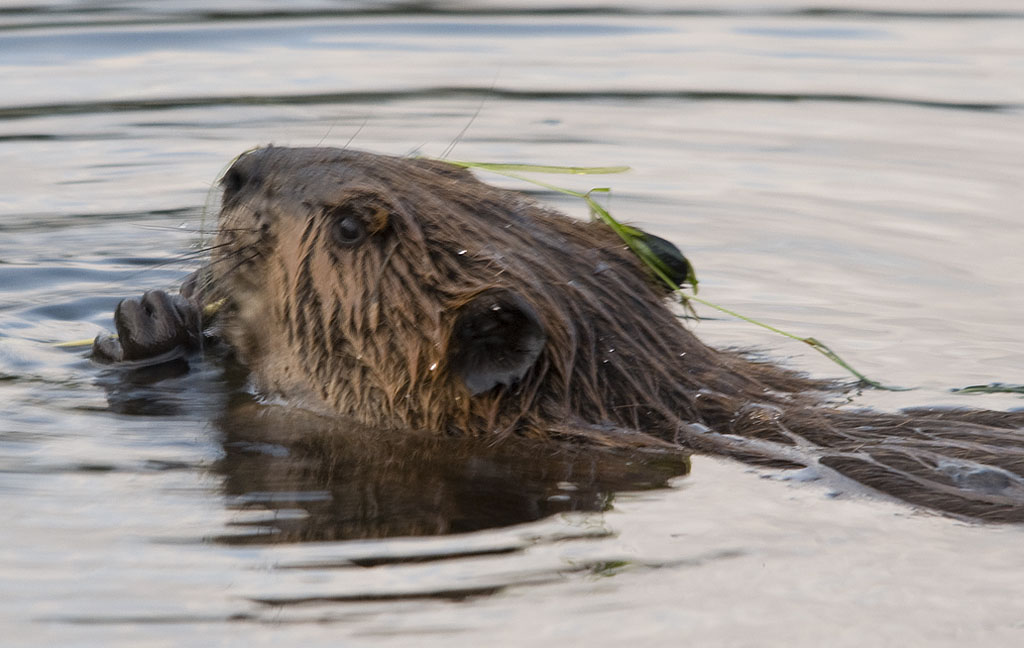
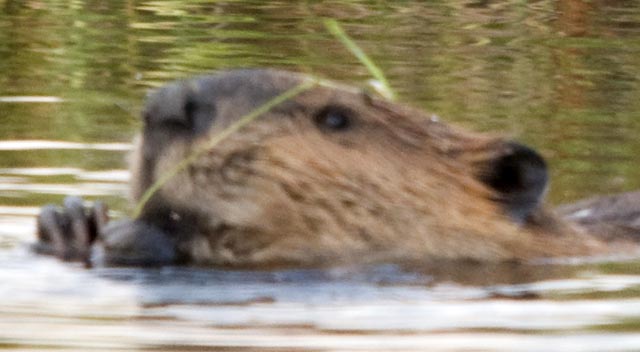
These images of one of the beavers eating were taken using the 150-500mm + 2X teleconverter. The combination is very difficult to focus and isn't the best for quality even when the focus is perfect. The teleconverter eats up about half the light available and the autofocus doesn't work. So it must be focused manually, which is next to impossible in dim light. But, the combination lets me take photos that I couldn't get otherwise, especially when photographing wildlife.
As the evening wore on and the light faded, I changed lenses in stages. First, removing the teleconverter so the 150-500 would autofocus again and get more light to the sensor. Then, I'd switch to the Nikon f2.8 80-200mm lens with its teleconverter. The Nikon lens is much faster than the Sigma, so it gets more light through even with the teleconverter AND the autofocus continues to work. Finally, I remove the teleconverter and concentrate on the closer subjects.
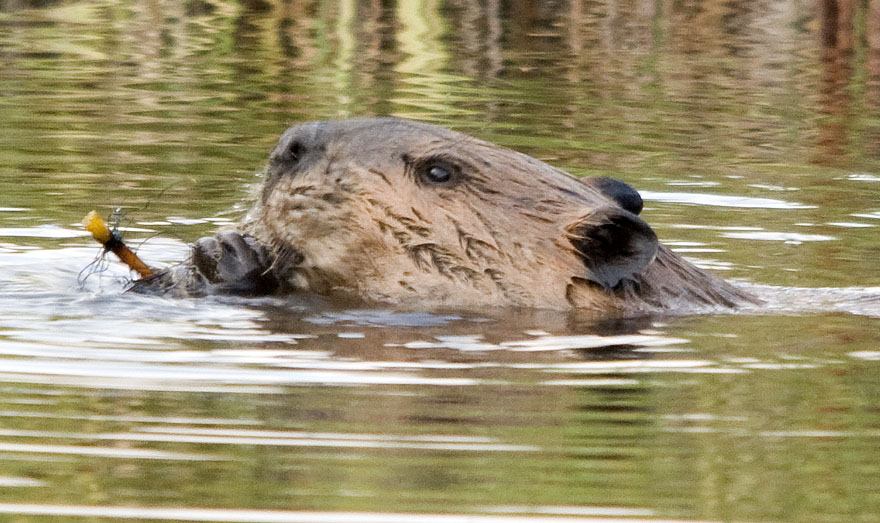
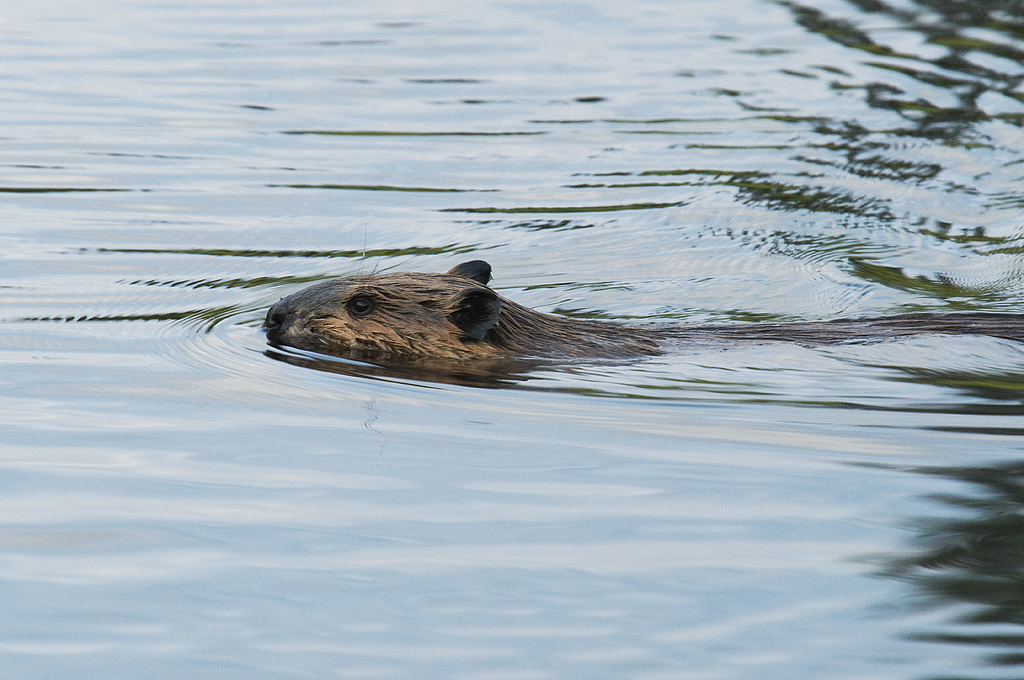
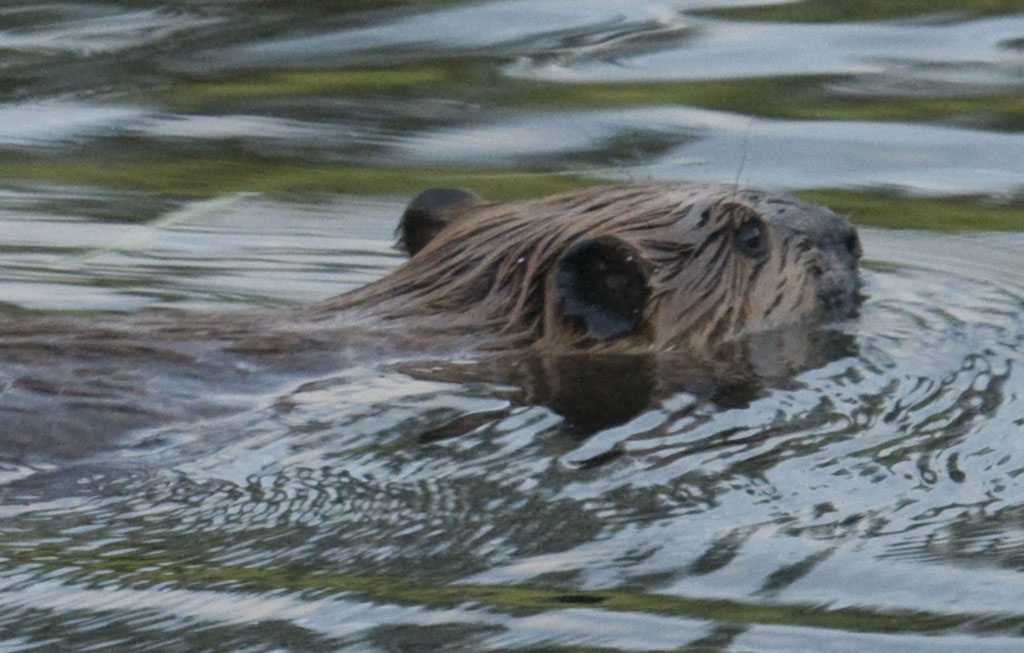
Click on the link below to view a video of the beaver eating:
photogallery/alaska_2009/leg_09/2009-08-10_denali_SP/DSC_3050.AVI

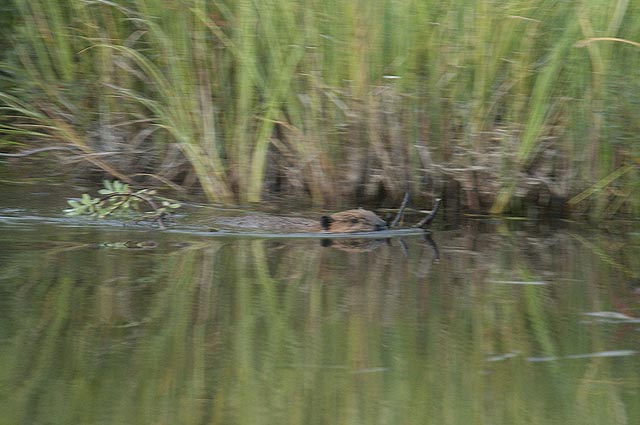
Here's one bringing building materials/food supplies down the far channel. He'll turn left in a few feet at the side channel for the larger pond where their lodge is.
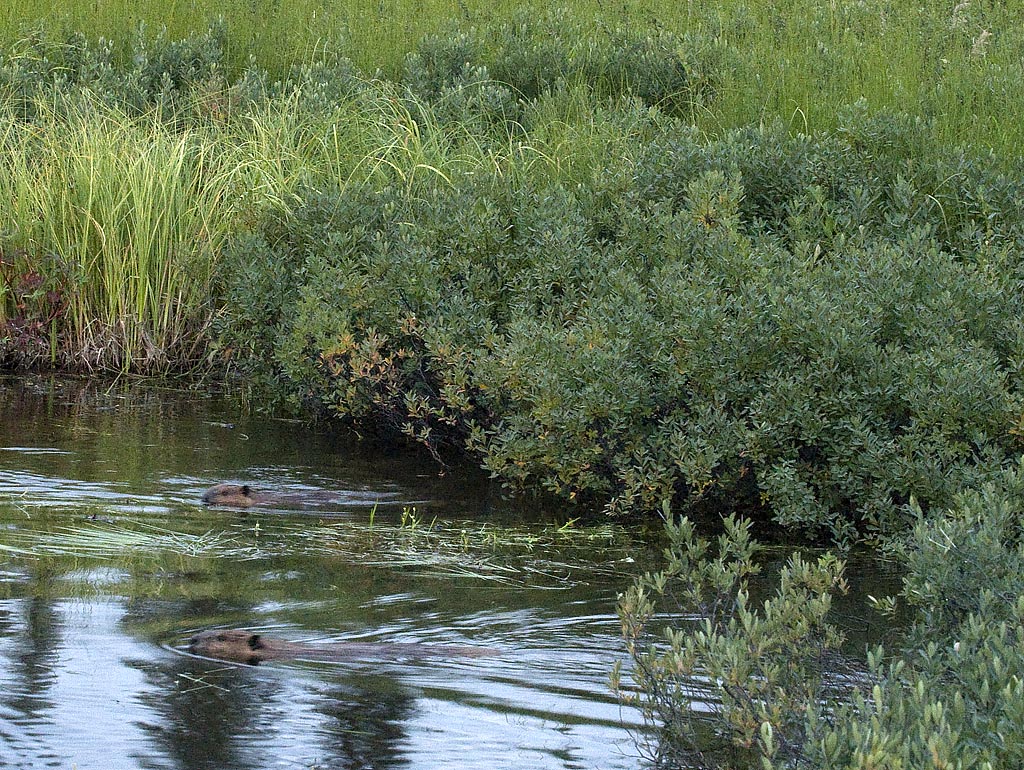
These two beavers swam out of one of the side channels just seconds after I'd switched to the 80-200mm lens so I had a functioning autofocus again. The nearest beaver turned left and the further one followed right behind.
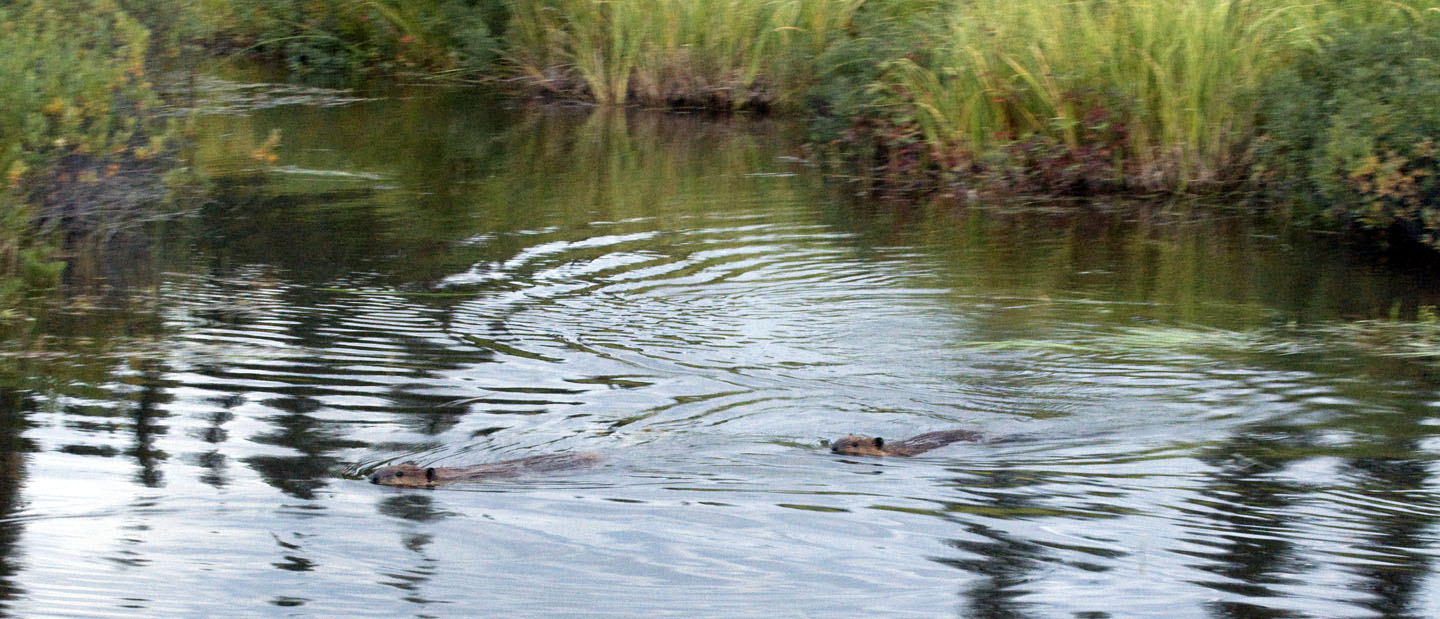
They swam in figure-8's for a minute or so while the second beaver gained on the first.

The second beaver has nearly caught up now.
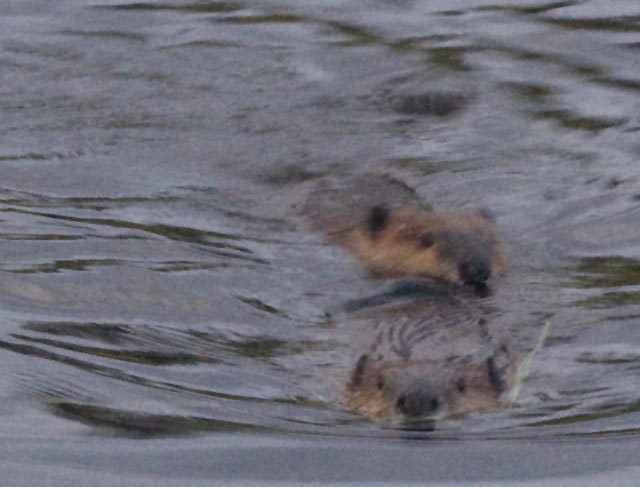
The second beaver has completely caught up with number one now. The first dove a second after this photo, followed by number two.
August 11th - Denali State Park [top of page]
A couple from Eagle River (a suburb of Anchorage) came by yesterday and talked with us about our rig before going on a hike around the lake. We talked with them again later and they told us about a pair of Loons on the far side of the lake that were feeding their chick. So, my big plan for today was to hike around the lake, find the Loons and get some photos of them feeding the chick. Sounds easy, huh?
The trail around the lake is 7.5 miles. And it's not flat, straight, smooth or level. I'd been on a bit more than a mile of it, so I had some idea of what I was getting into. Gracie & I set out about 2 PM with a full pack of camera gear, a bottle of water, a candy bar, flashlight and pedometer. I wore my waterproof hunting gear over a couple of layers of regular clothes. Gracie needed a lot less preparation than I did, as her fur coat is both warm and water proof.
We flipped a coin and decided to go around the lake clockwise, which meant taking a long trail around the wetland at the inlet end of the lake.
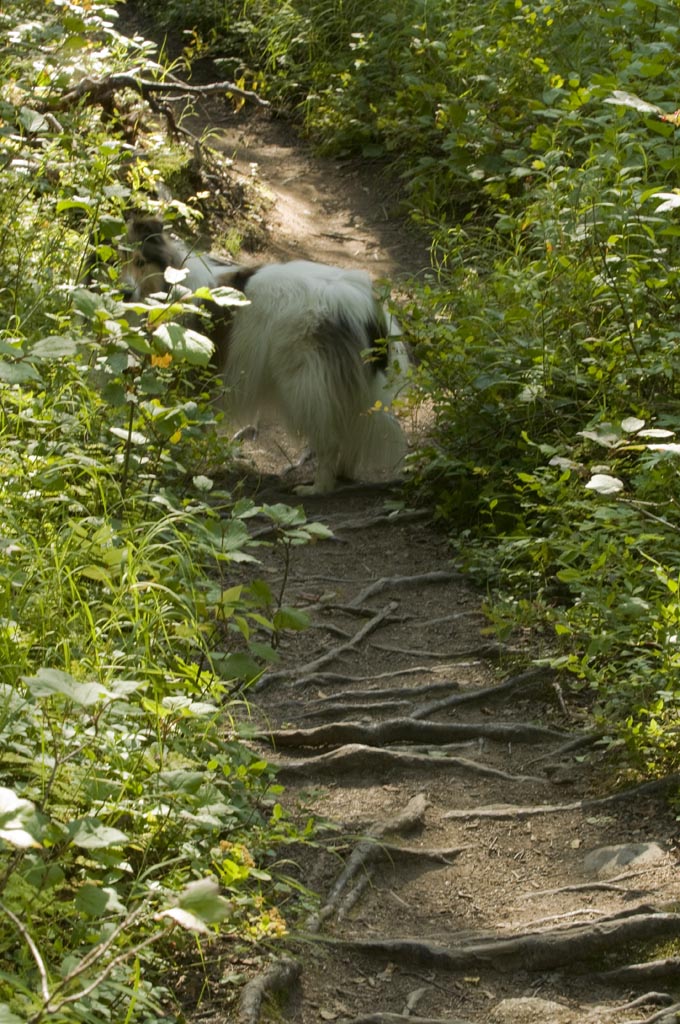
You'd think that a trail around a wetland would be level, flat and easy. Nothing could be further from the truth. This photo is of a typical section of the trail. It's a constant up and down, down and up all the while walking on the uneven terrain covered by tree roots. Occasionally, the trail would be steep enough to use the roots as steps.
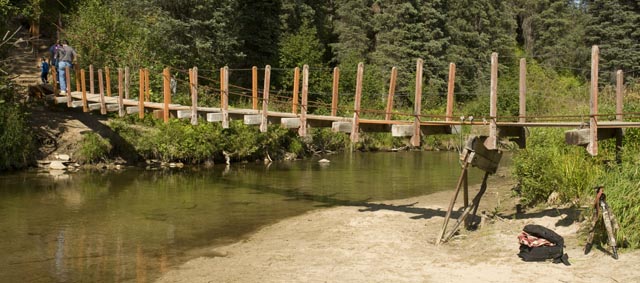
Almost 2 miles from the campground we reached the halfway point around the wetland where a small suspension footbridge crosses the creek. See the twists in the bridge? This is not a stable bridge. And the walkway is just 2 feet wide. Those posts that support the loose handlines for hand rails move around with the bridge which means the handrails move around even more lively than the bridge deck does. I wasn't especially keen on it, and Gracie liked it even less. I crossed first, dropped off my gear and went back for Gracie. We crossed with her between my legs as I slowly shuffled my feet so the bridge swayed as little as possible.
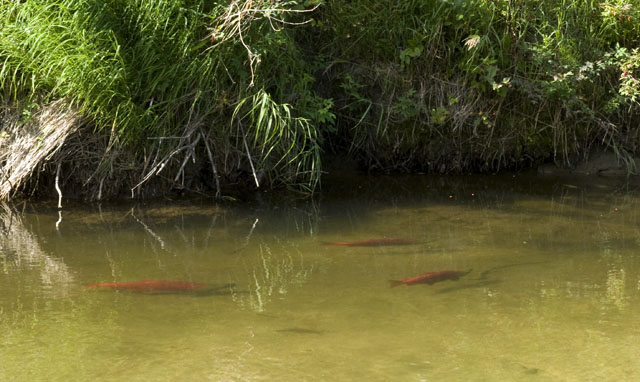
After both of us were safely on the far side of the bridge, I took some photos of the spawning Sockeye salmon.
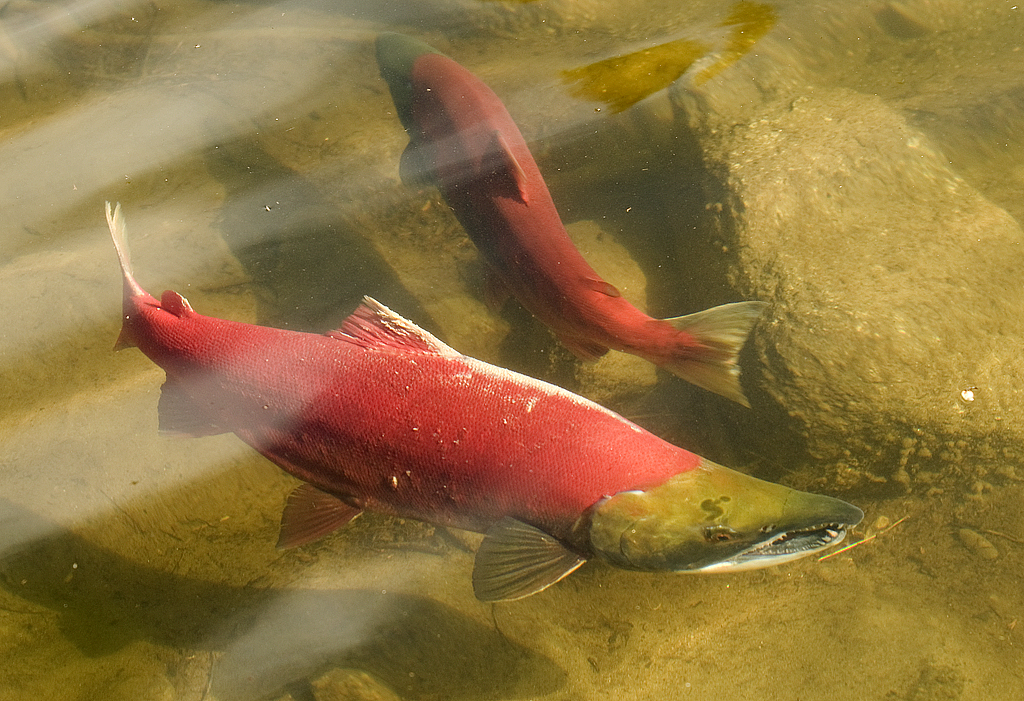
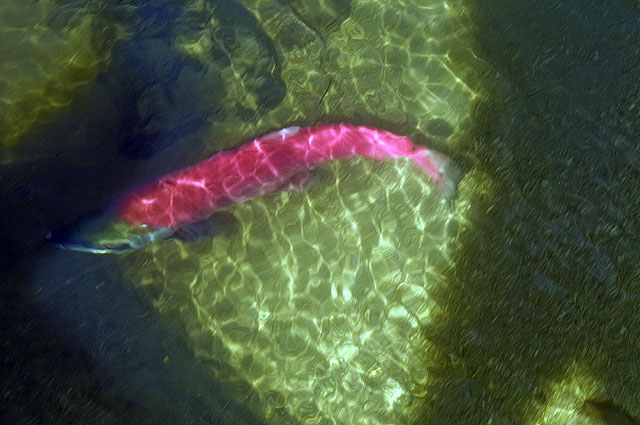

After leaving the creek area, the trail uses a board walk to cross a hundred yards or so of marsh before reaching high ground. It's still another mile to reach the lake. We're just past where the swans were the other night and we had to hike 3 miles to get here. Ugh. There's a small and very primitive campground for backpackers & kayakers here and one of the sites was next to the water so we hiked down to it.
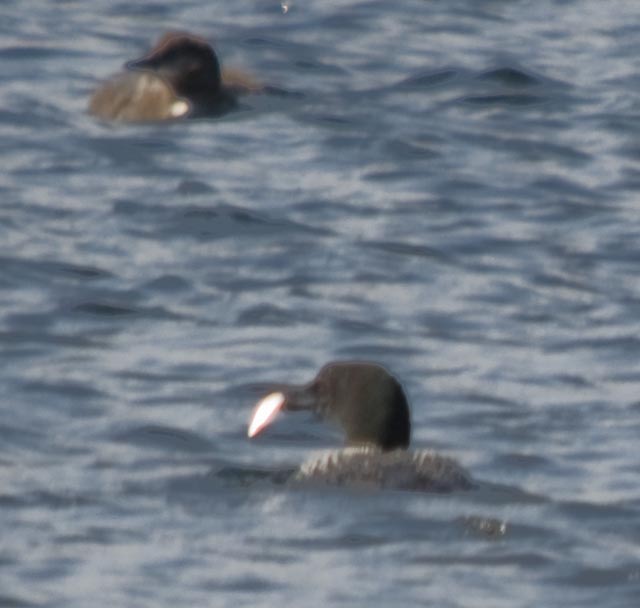
Our timing was nearly perfect. One of the Loons had just surfaced with a fish and was about to give it to the chick. They were way out in the middle of the lake so the images are poor. The parent had its back to me during the actual feeding so those photos don't show anything but the back of its head.
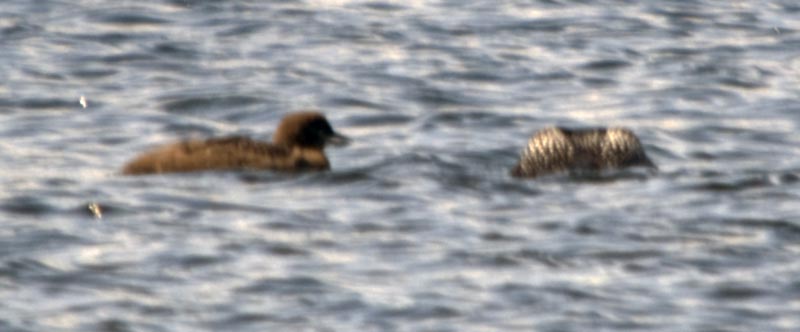
Once the parent had given the fish to the chick, it dove for more.
Unfortunately, the Loons drifted downwind and out of site behind the tree line right after this single set of photos. So we set off down the trail again to intercept them.
We hiked for another mile while the trail ran up and down the very steep shoreline on the far side of the lake. That's when my camera slipped off the tripod. I was carrying the tripod over my shoulder like a rifle, with the 150-500 lens attached. The Kirk mount wasn't as tight as it should have been and slid out of the ball mount. The good news is that the only casualty was the lens hood. It got knocked off and bounced to . . . well, I don't have any idea. It could have landed in the lake. Well, not quite, but it could have bounced and landed in the lush foliage an easy 50 feet below.
It only took a few seconds to realize that there was a paper wasp nest in a tree next to the trail. Since it was on the downhill side of the trail, the nest was about ankle high to me. Apparently, the wasps didn't feel threatened by my ankles so they left me alone while I tried to peer around for my lens hood. Then I heard the sounds of a large animal (think bear) in the forest above the trail, so I started talking. Bears will generally avoid a confrontation with humans as long as they know you're there, hence my talking so it would know I was there.
The bad news is that Gracie responded to my talking by coming back to me and the wasps didn't take kindly to her and stung her a few times on the face. She spent the next few minutes wiping her face in the ferns along the trail. I aborted the search for the lens hood and we moved on.
About a half mile later, a group of talkative kayakers paddled along the shoreline in the opposite direction. They never noticed us in the forest well above the water, but I had no doubt that the Loons took notice of them and wouldn't be anywhere near the shore ahead of us. Besides, we hadn't had a clear view of the lake in the last 1.5 miles. Then we heard that wailful call of the Loon way back behind us. So, we reversed our course and headed back just as we reached the halfway point.
I kept a lookout for the wasp nest, but Gracie passed it just as I spotted it. Naturally, they swarmed her again. The rest of the hike to the creek was uneventful. After we crossed the creek, we took a nice long break. I had my candy bar, we shared the water and I photographed the spawning salmon.

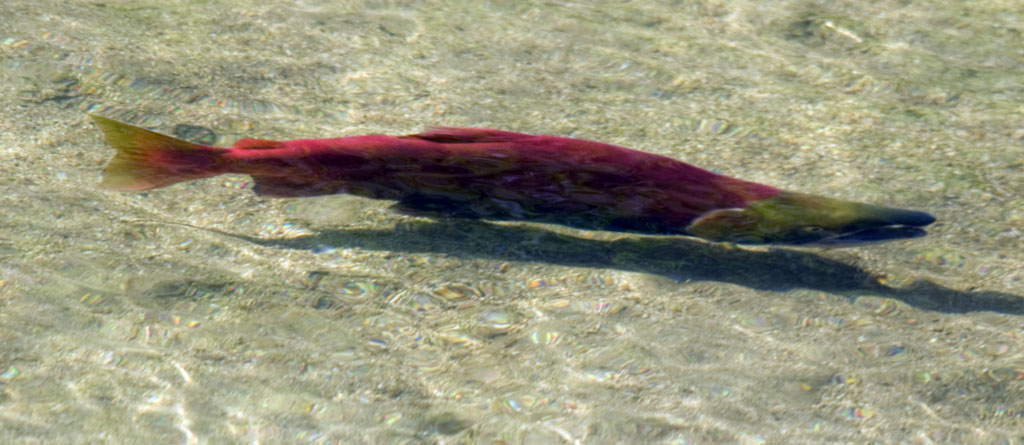
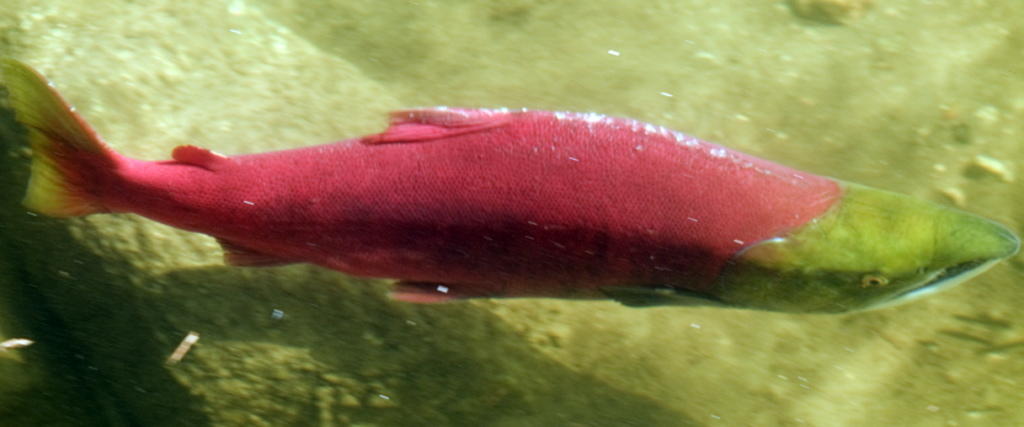
This male Sockeye had his eyes on . . .
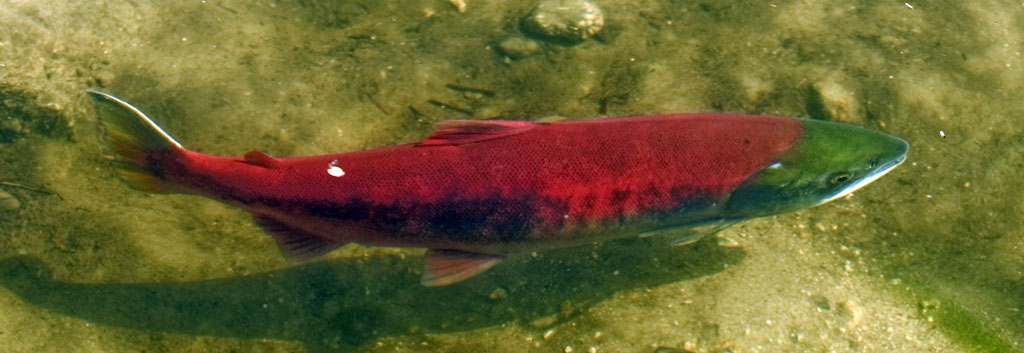
This female who was clearing her nest (redd) in the gravel just below the bridge. Click on the two links below to see the video of them. One is of them swimming in circles, the other shows her building the nest.
photogallery/alaska_2009/leg_09/2009-08-11_denali_SP/DSC_3296_sockeye_salmon_dance.AVI
photogallery/alaska_2009/leg_09/2009-08-11_denali_SP/DSC_3297_redd.AVI
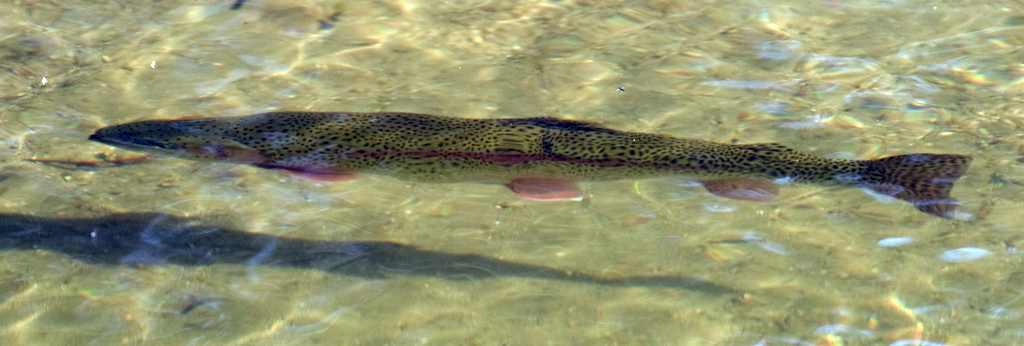
This Rainbow Trout was nearly as long as the salmon, although more lightly built. He was spending his time swimming gently in the current of the creek, but if one of the salmon got close, he skedaddled out of the way in a hurry.
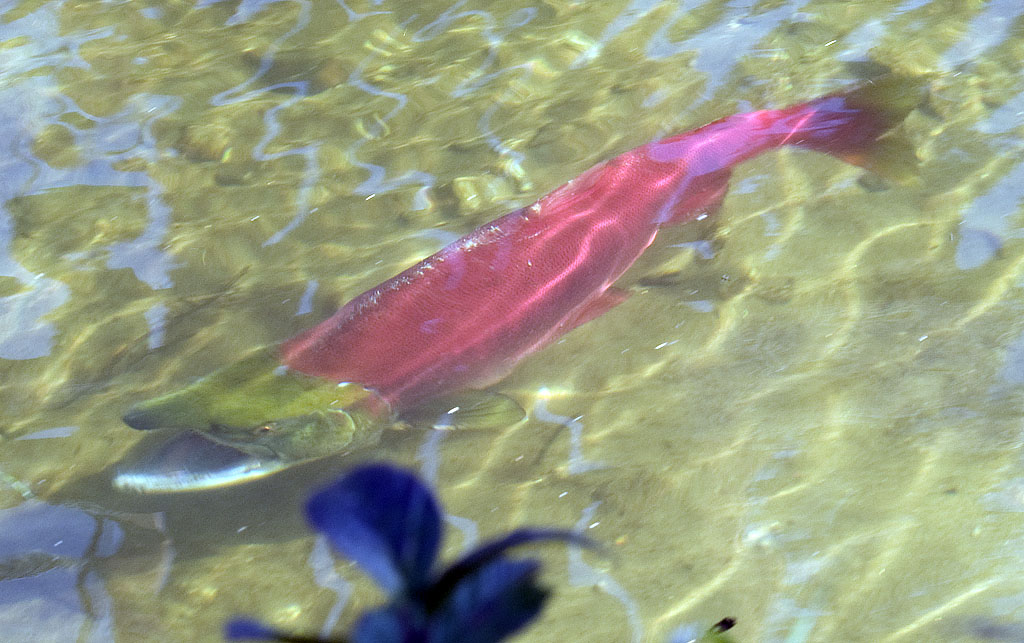
In case you didn't know, salmon are predators.
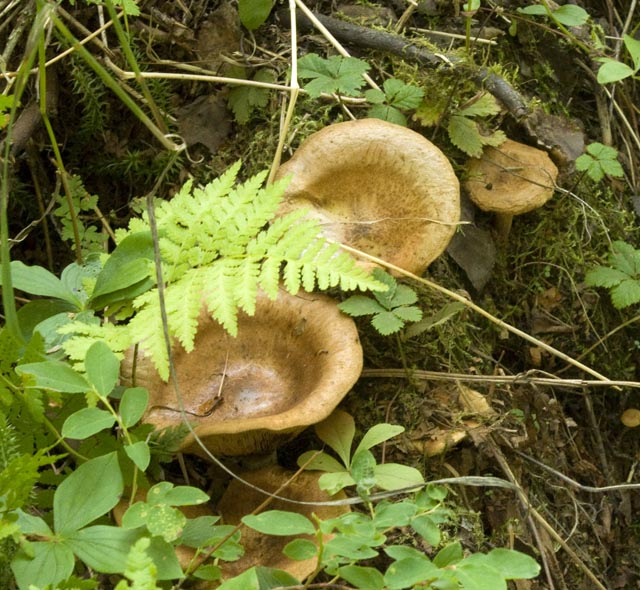
I'm not much into horticulture, but I became fascinated with the variety of mushrooms around here.
August 12th - Denali State Park to Anchorage [top of page]

The rugged mountains in the foreground get most of the attention on the typical cloudy day. But, behind the clouds to the right lurks Denali. The highest mountain in North America.
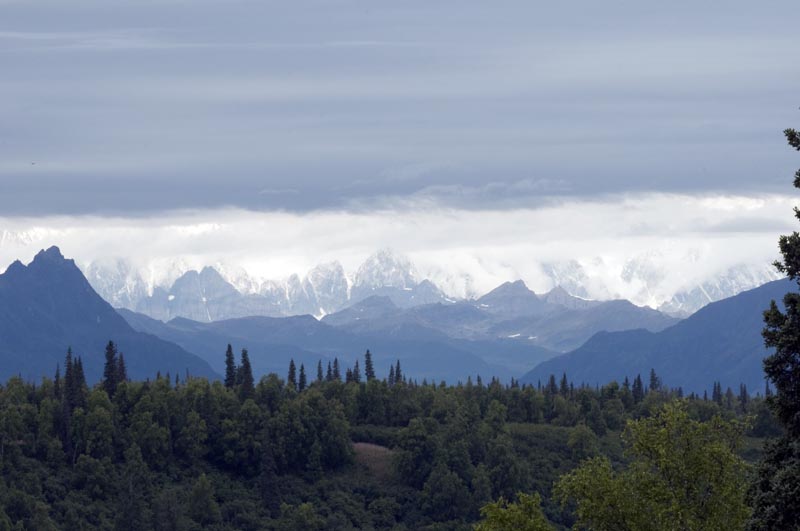
Another view of Denali. We could actually see the mountain from this same viewpoint in 2004.
August 13th - Anchorage [top of page]
August 14th - Anchorage [top of page]
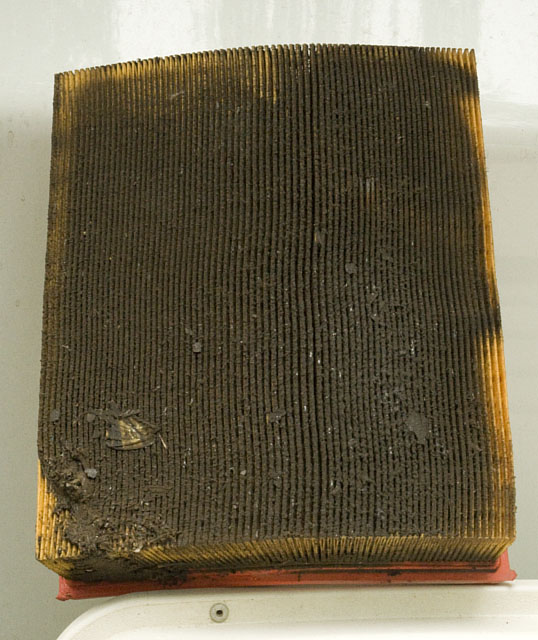
This filthy air filter was brand new when we left home. There's two reasons why we carried 3 spares. First, there's the dust of all of those dirt and gravel roads we've been on. Second, Mount Redoubt has been active recently, and we'll be getting very close when we're on the Kenai Peninsula. Volcanic ash plugs air filters super fast, so if Mount Redoubt acted up, we wanted to have enough air filters on board to get out of the area.
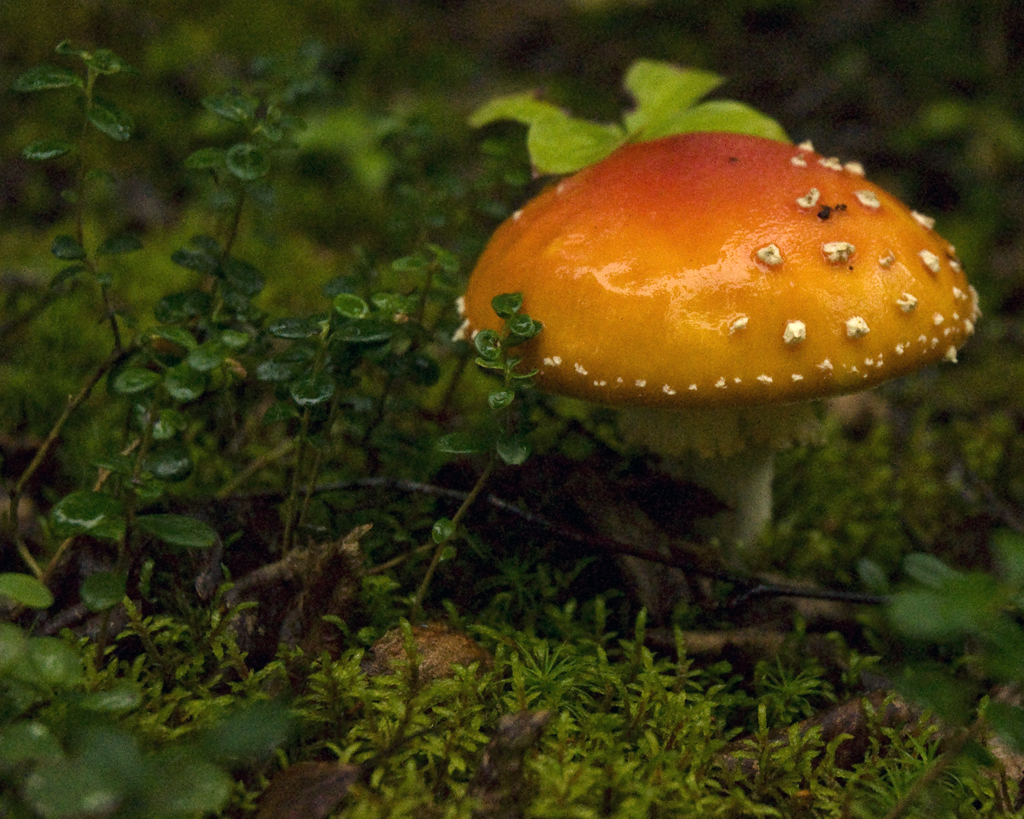
I mentioned mushrooms earlier. I took all of these mushroom photos at our campsite at Elmendorf AFB. Not just in the campground. At our campsite within 30 feet of the trailer.
I found a book on Alaska mushrooms in one of the park visitor centers. Yep, those bright orange ones & red ones are poisoness for certain. The orange ones are everywhere.
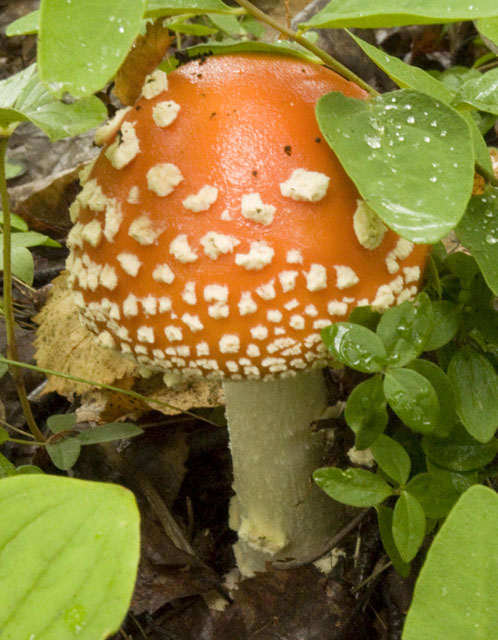
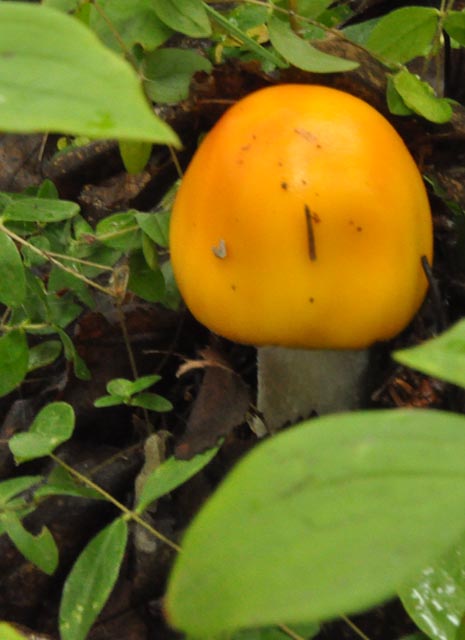
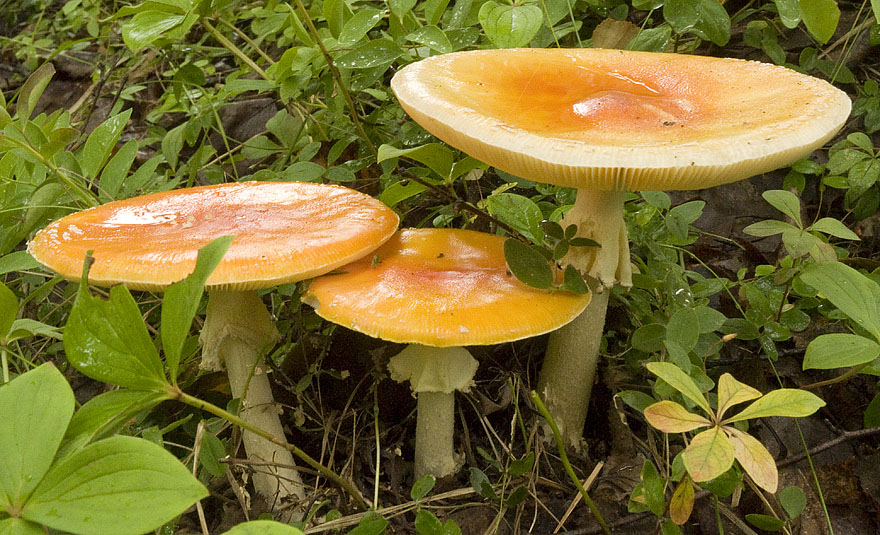
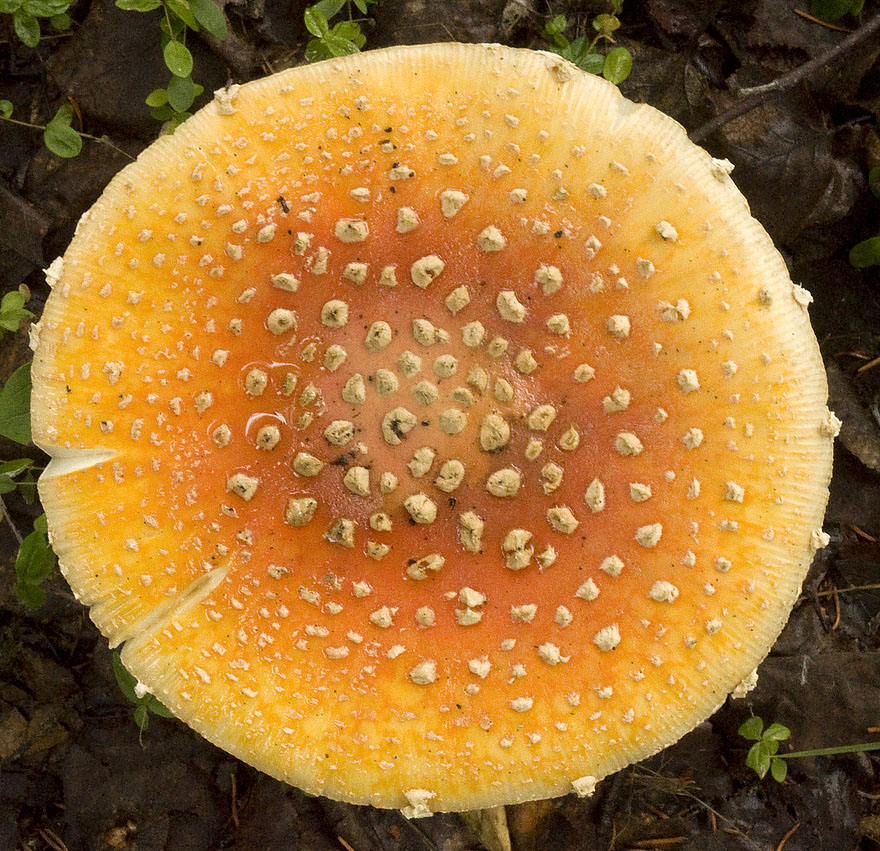
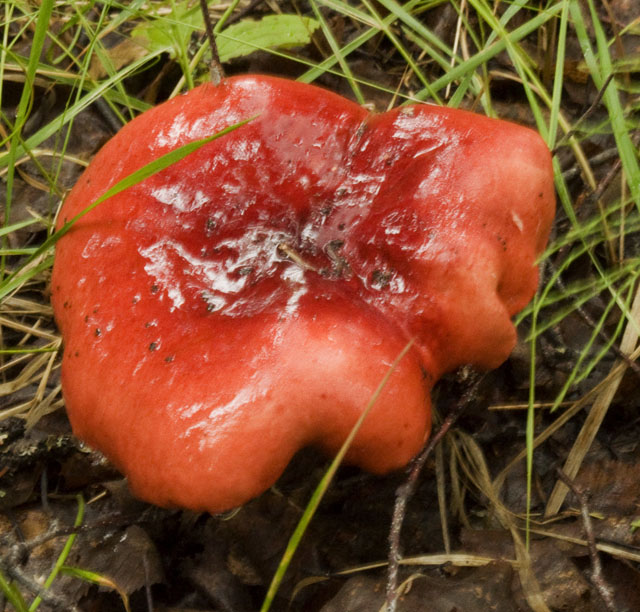
These guys are dangerous too.
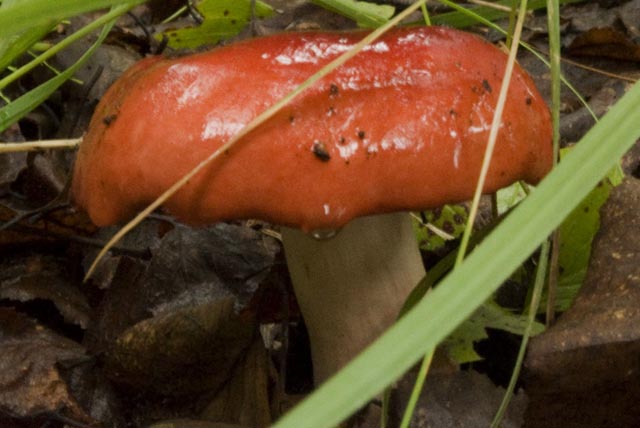
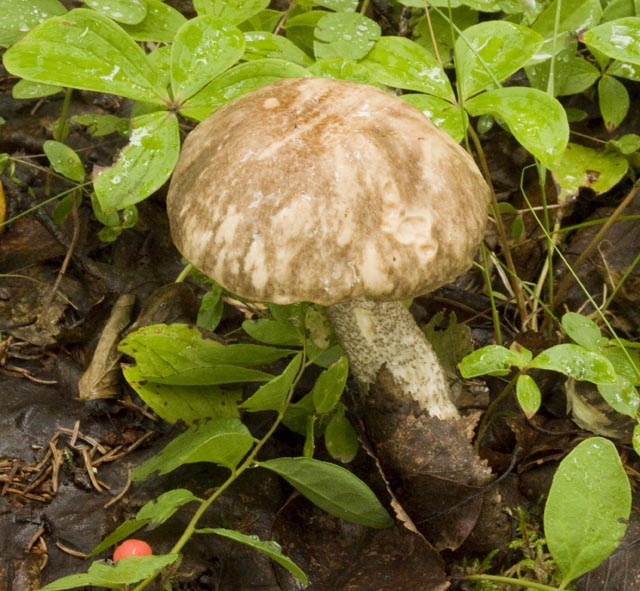
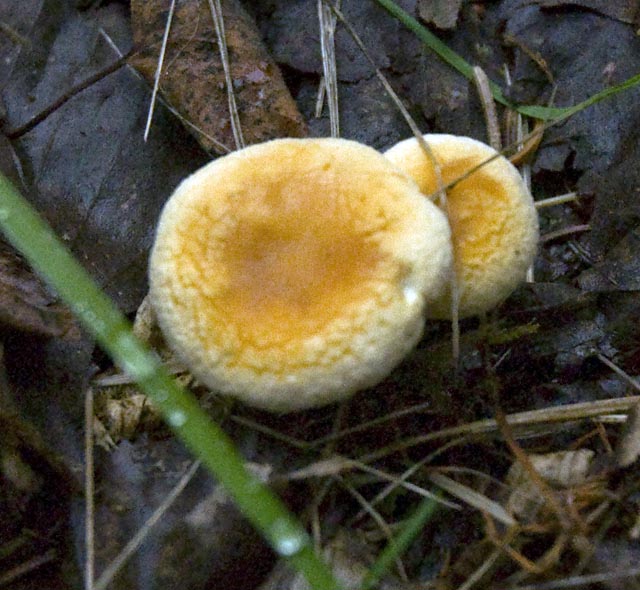
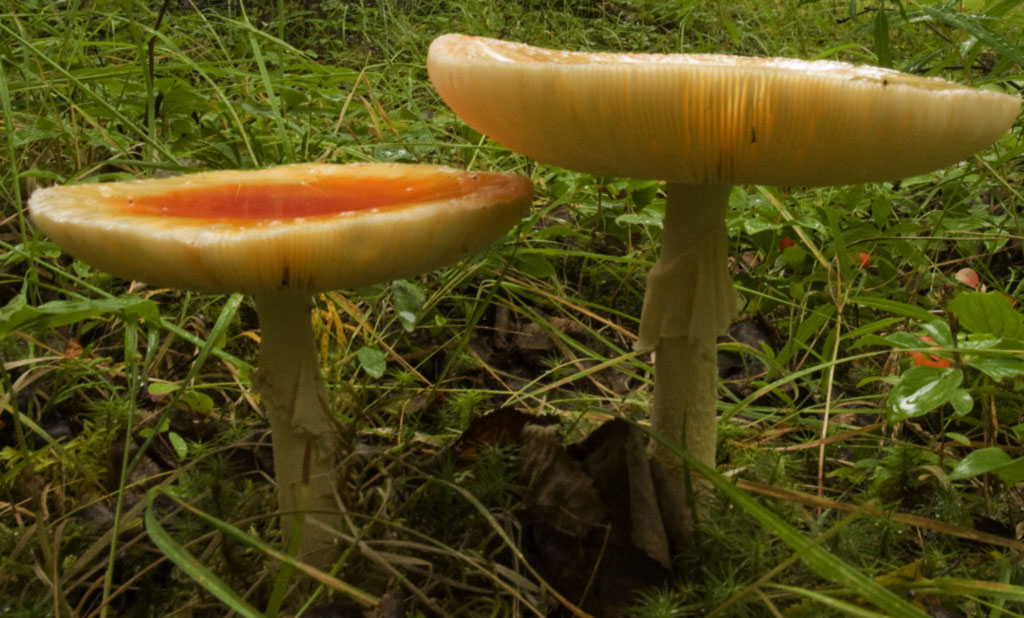
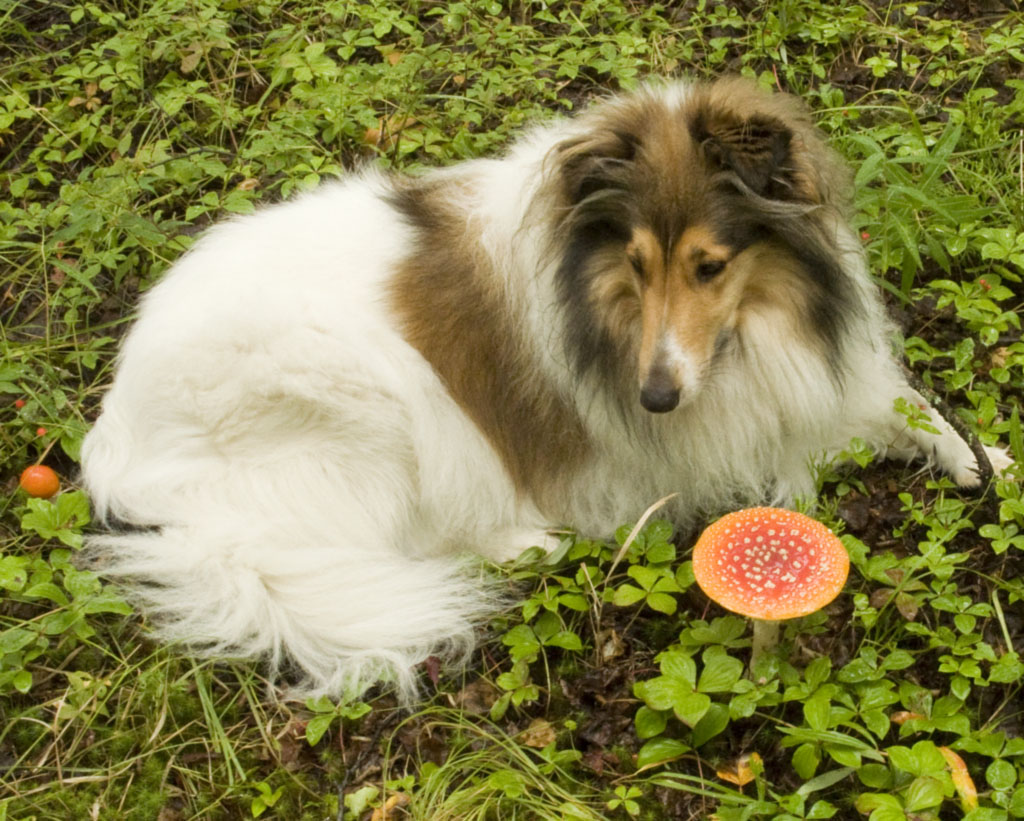
I was setting up to take this photo when Gracie decided it was a good place to lay down. Give you an idea of the size of the mushroom.
We were coming back into the campground this afternoon when we spotted this Bull Moose having lunch on a fallen tree. I stopped the truck, put the 150-500 on CJ's D70s, put the 80-200 on my D90 and both of us got out and put a tree between each of us and the moose. After a while, he headed our way. CJ went back to the truck while I paralleled the moose keeping a tree or two between us. We crossed half the campground and were almost to our trailer when he zigged left into the forest and disappeared. Some of these photos are CJ's and some are mine.
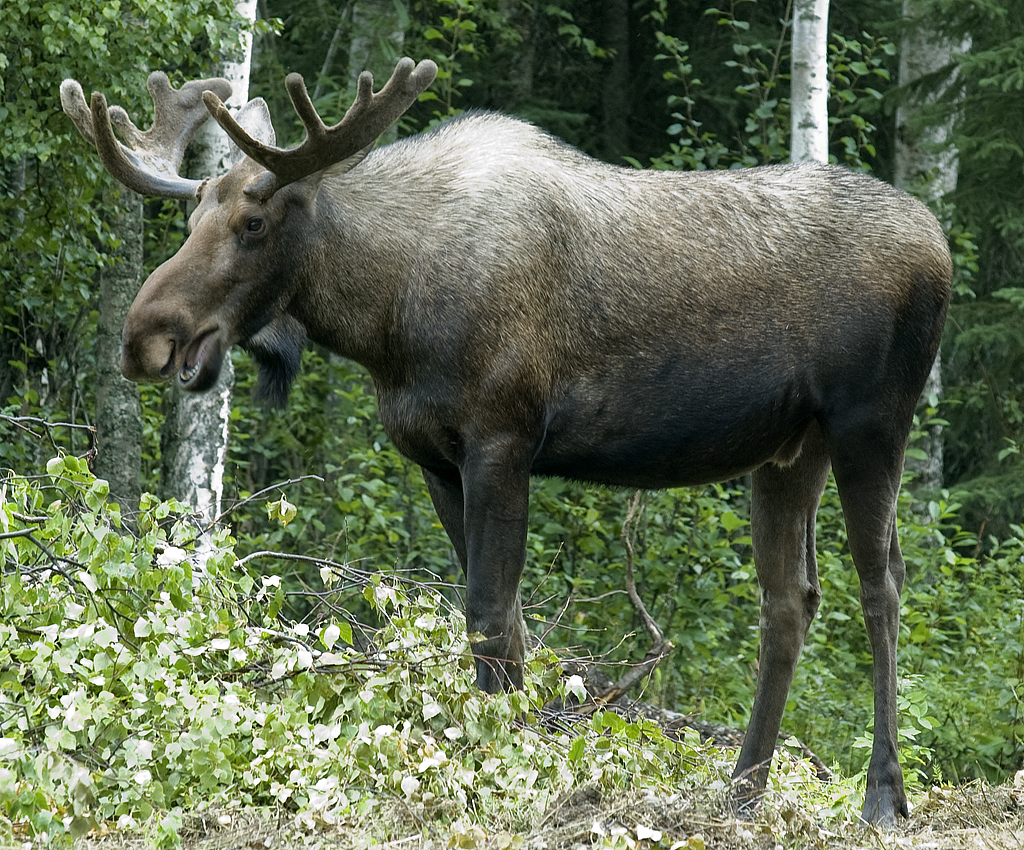
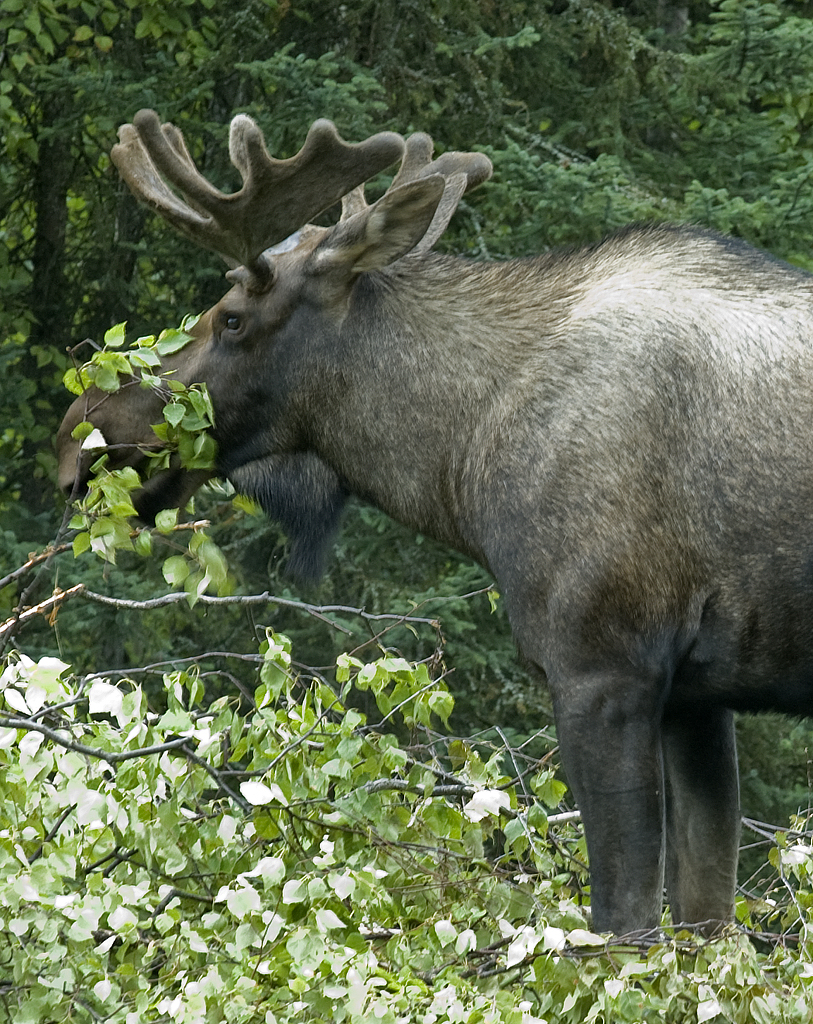
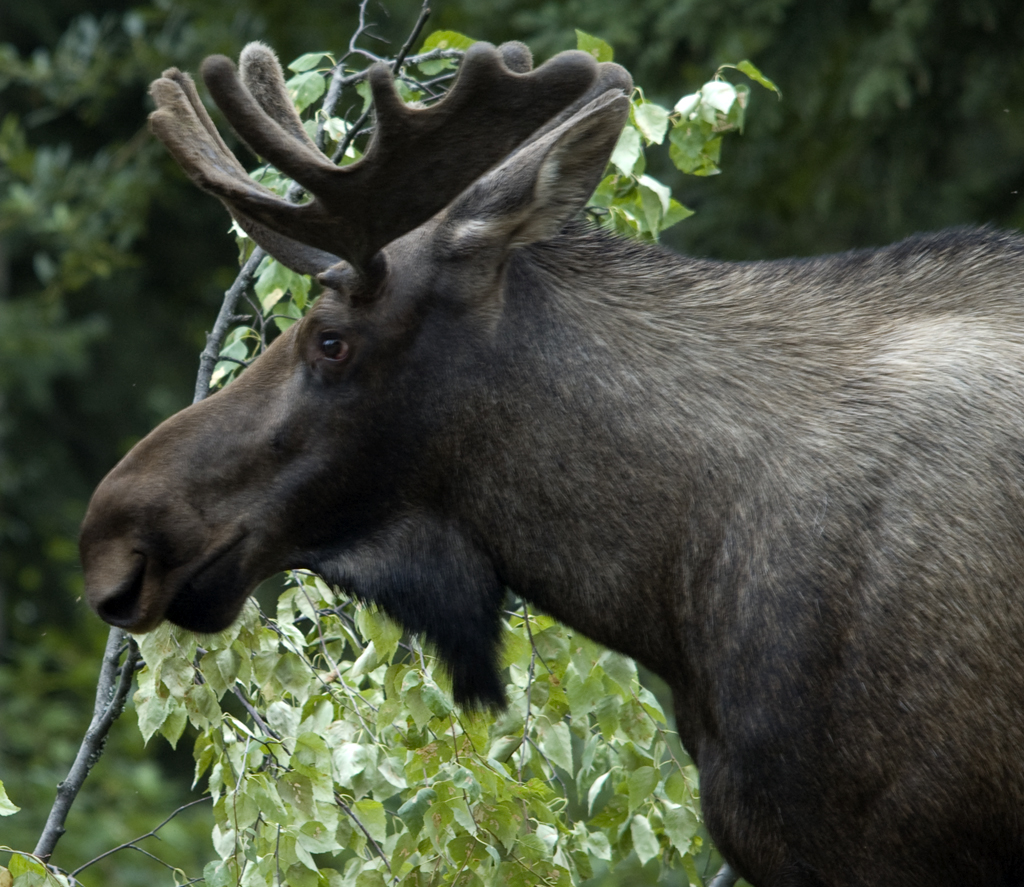
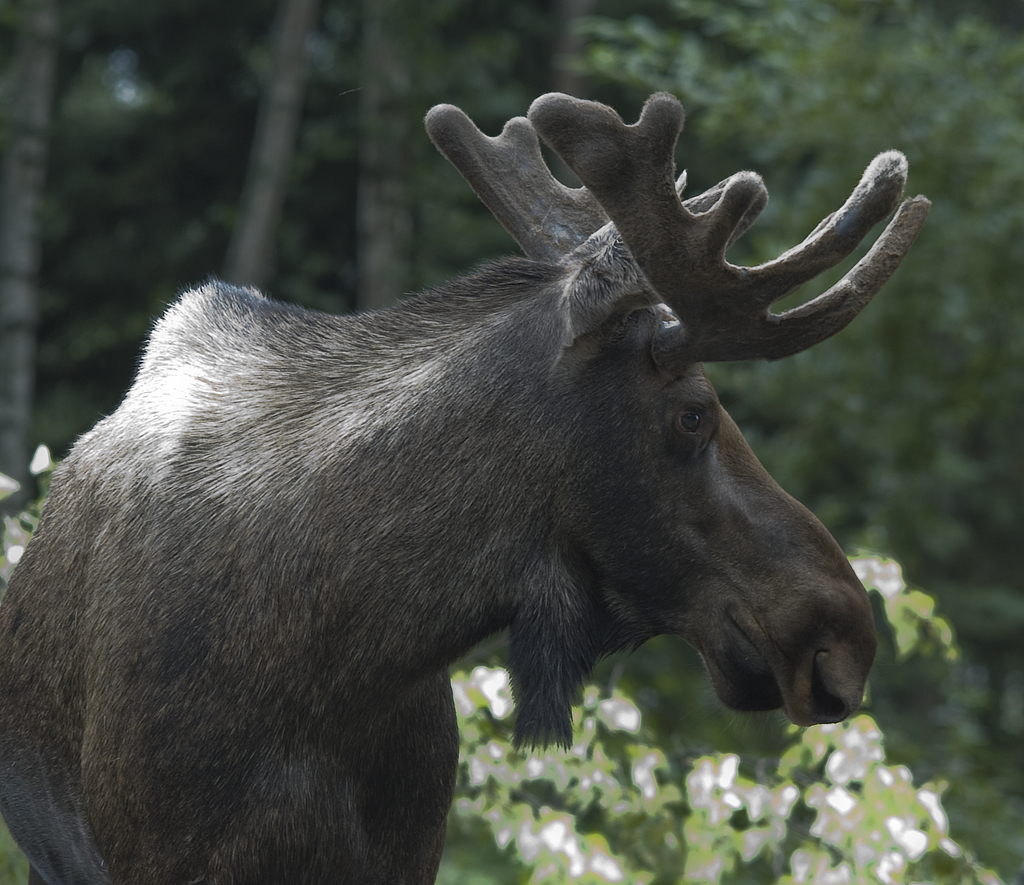
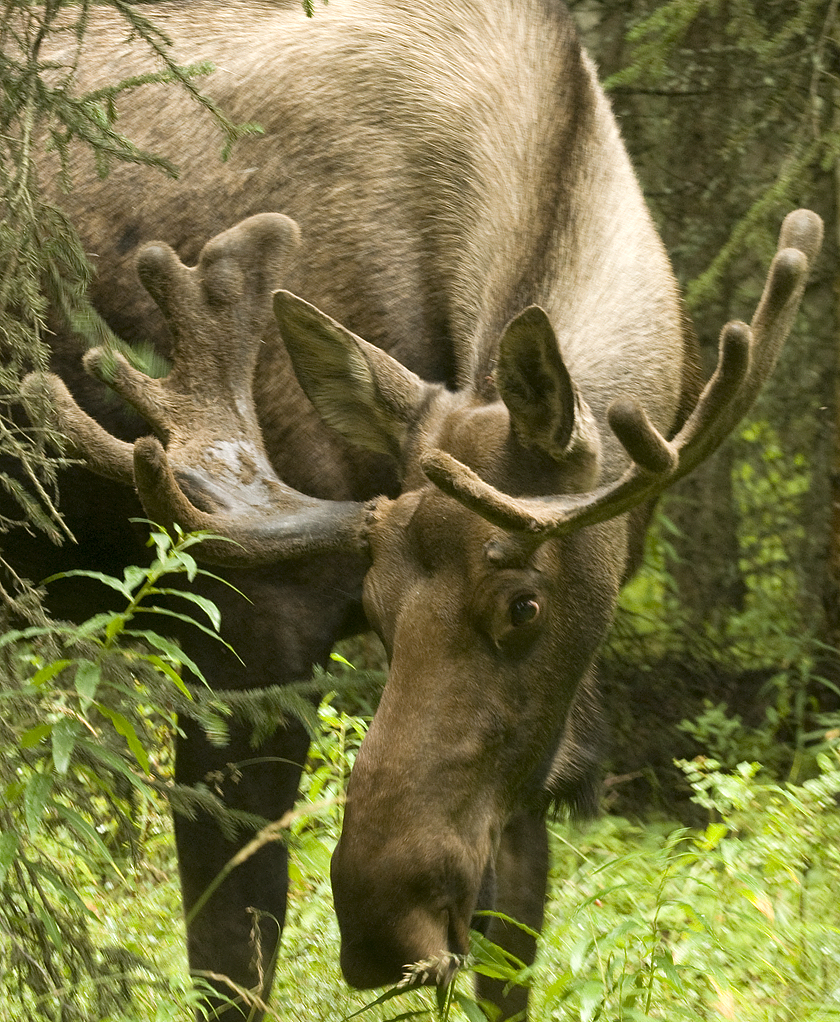
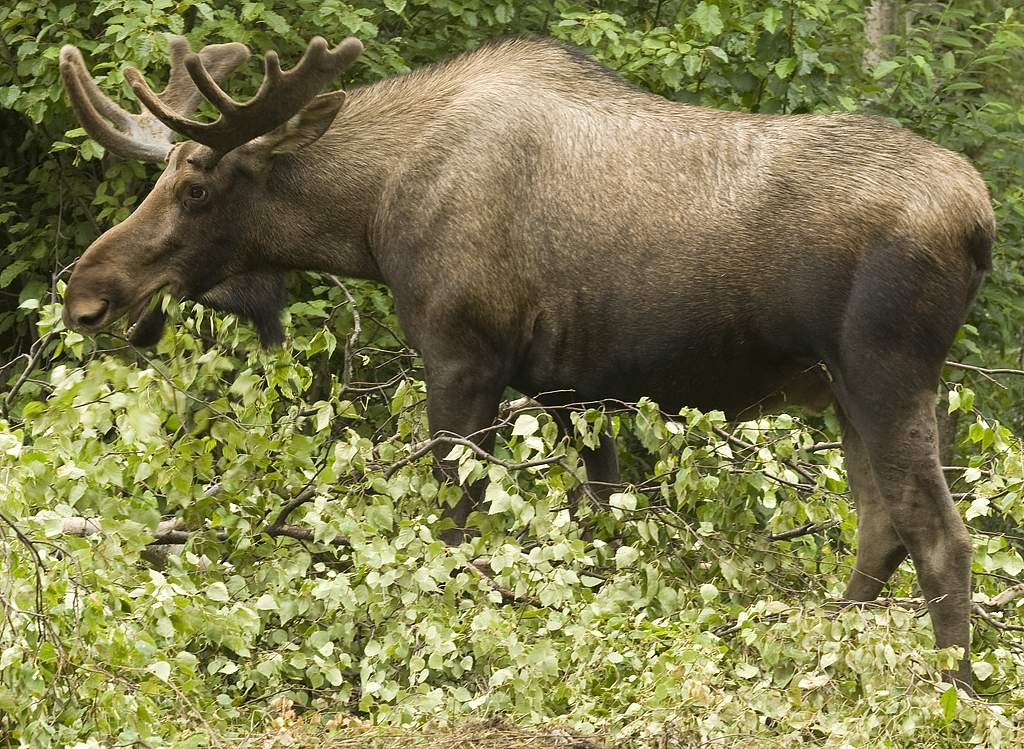
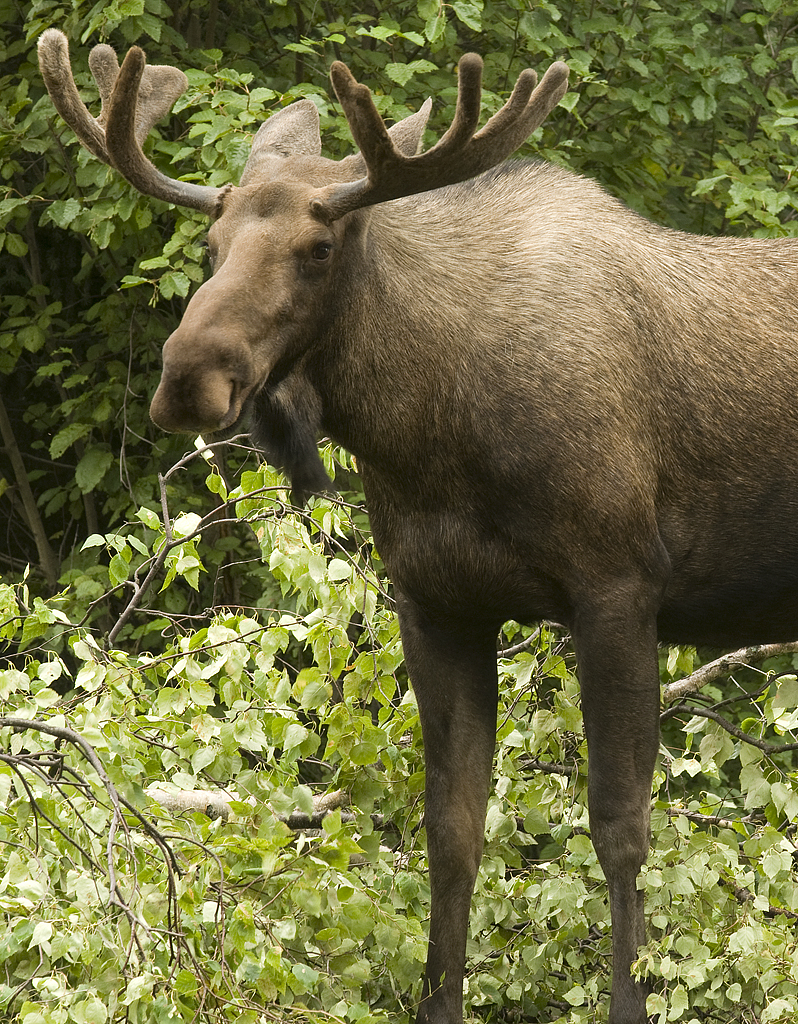
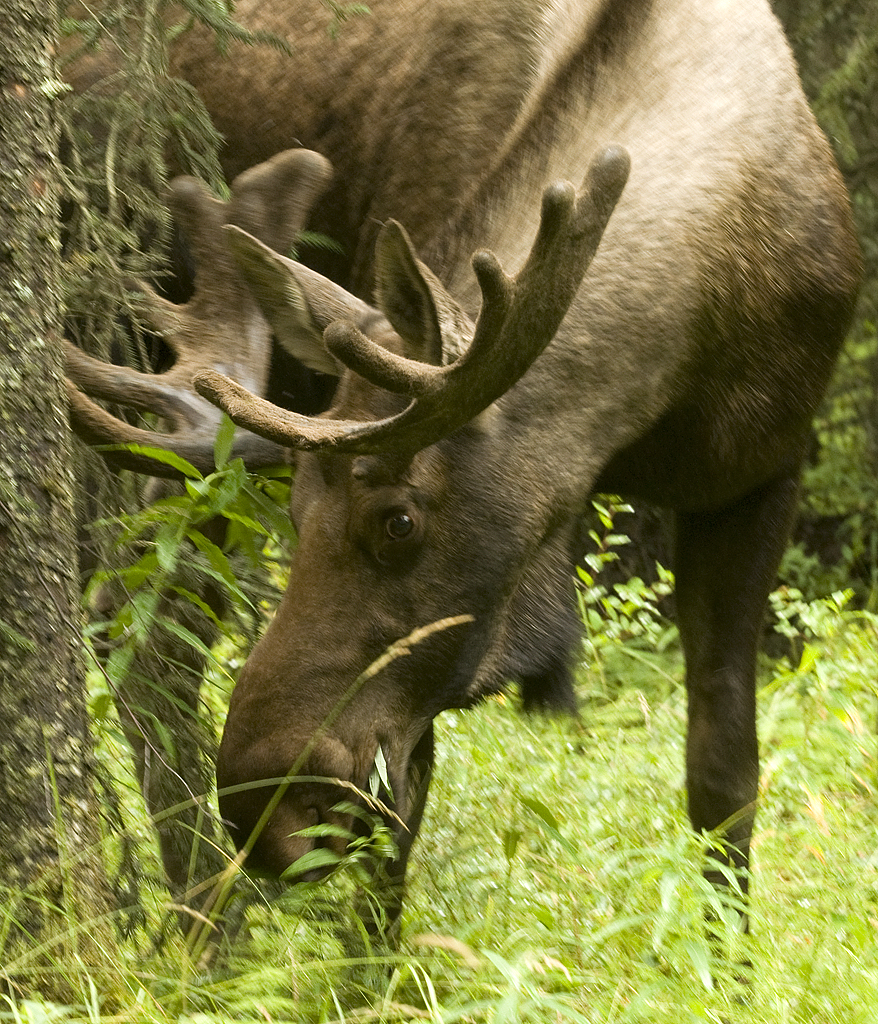
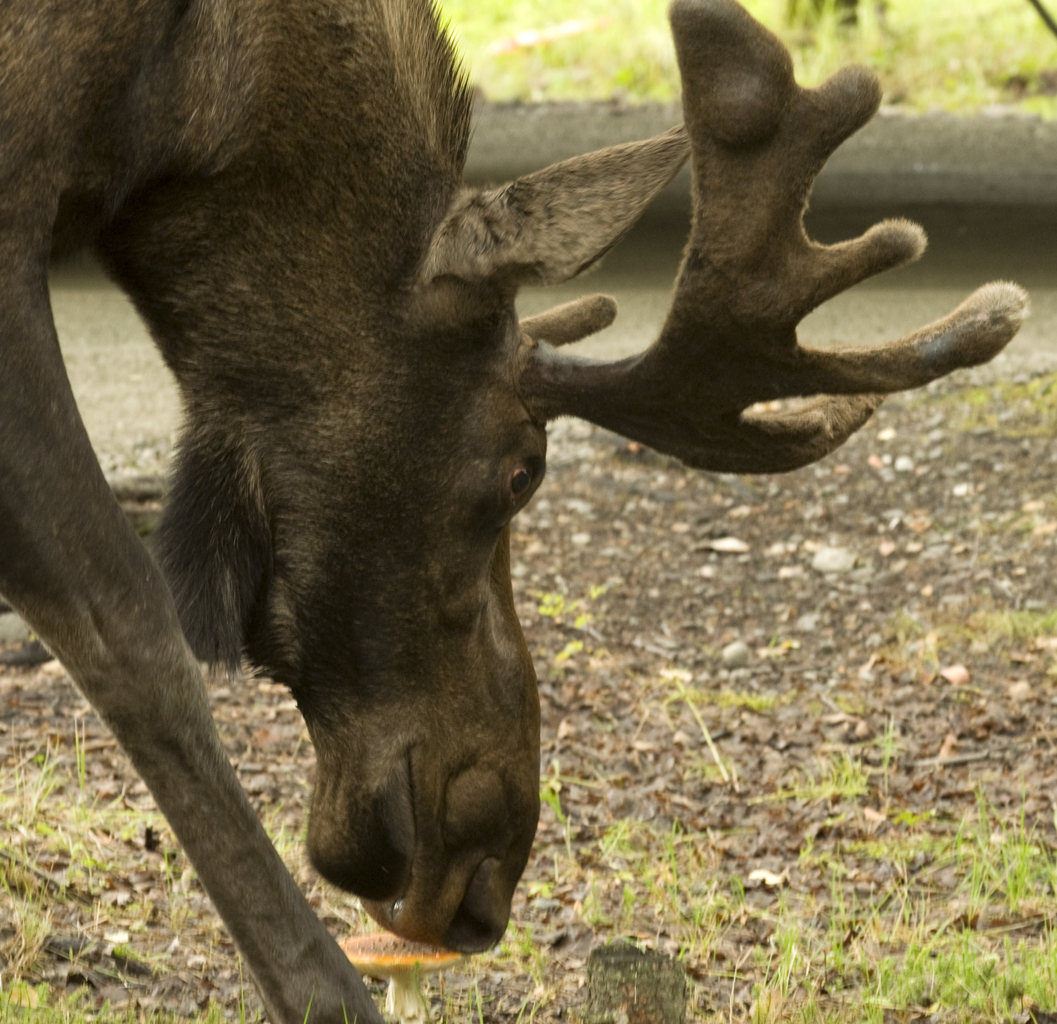
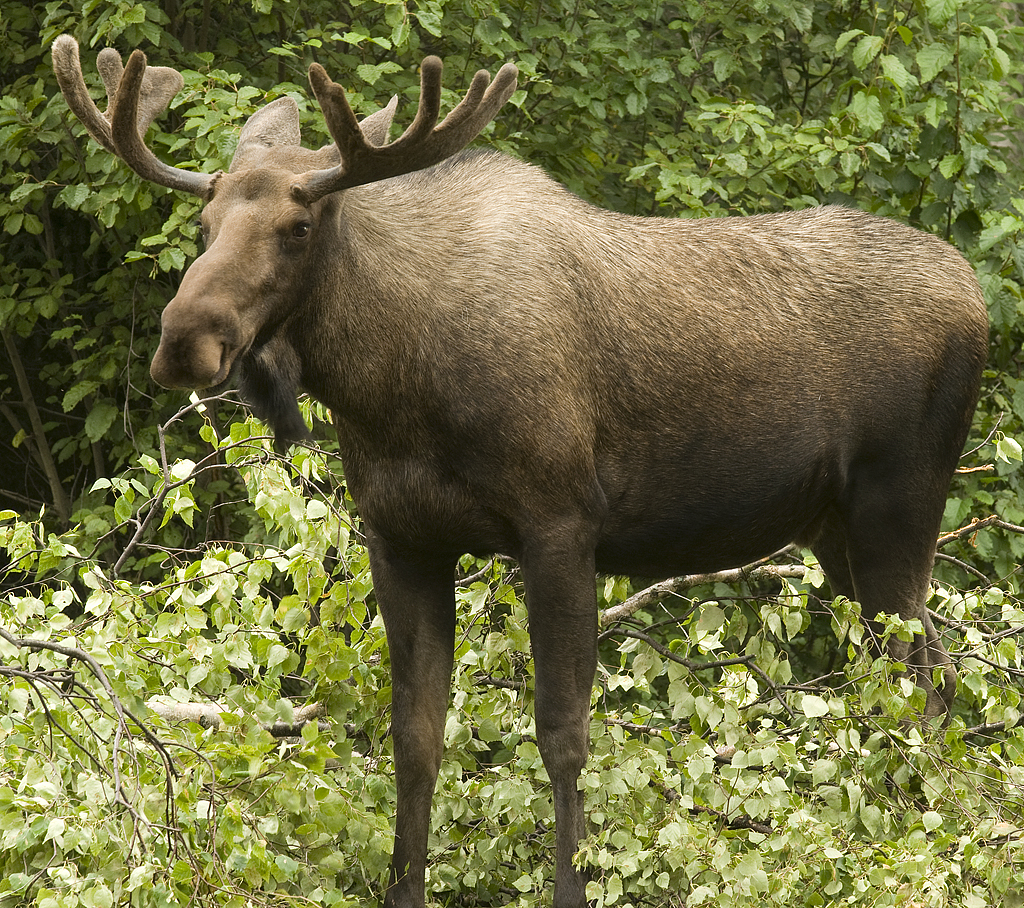
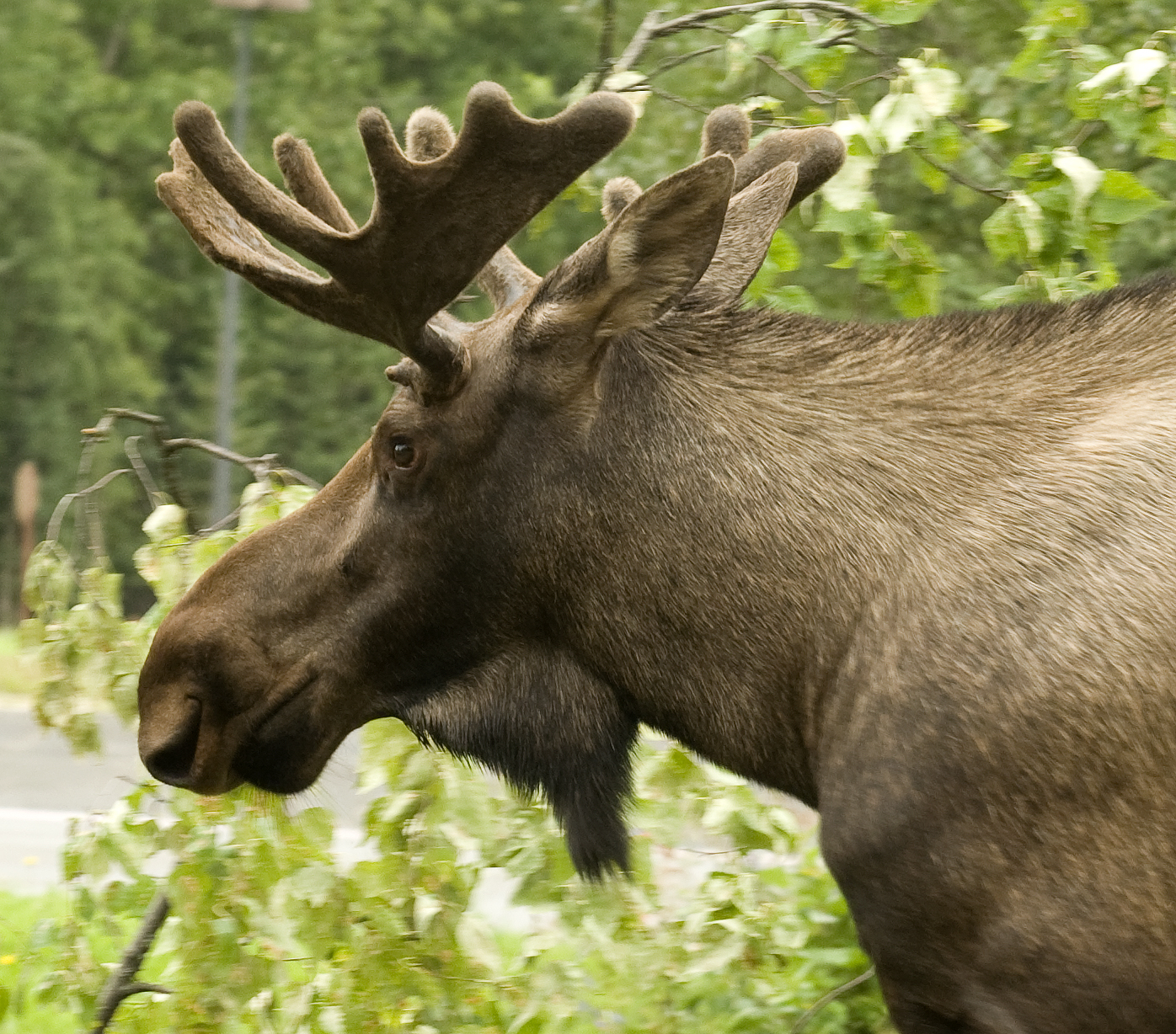
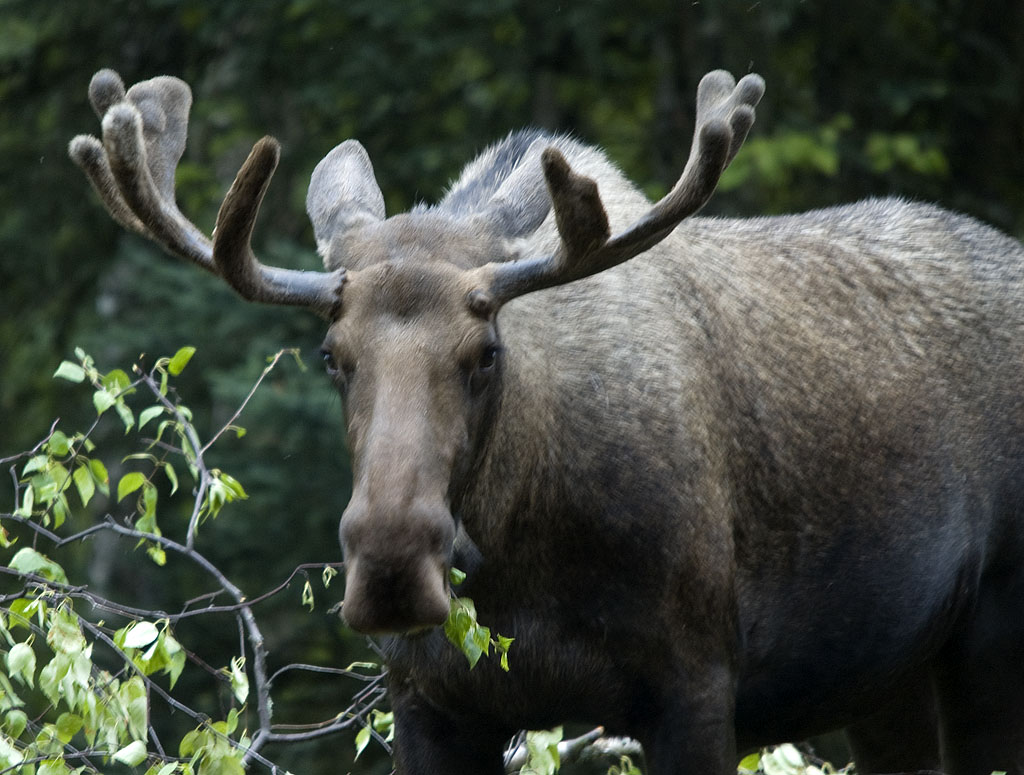
August 15th - Anchorage [top of page]
The remainder of the photos on this page were taken at Potter's Marsh. The marsh was an unintended by-product of the building of the railroad. Subsequently, a board walk was built so people could view the wide variety of wildlife that visits this manmade marsh.

Mallard & 3 Short-billed Dowitchers

Short-billed Dowitchers
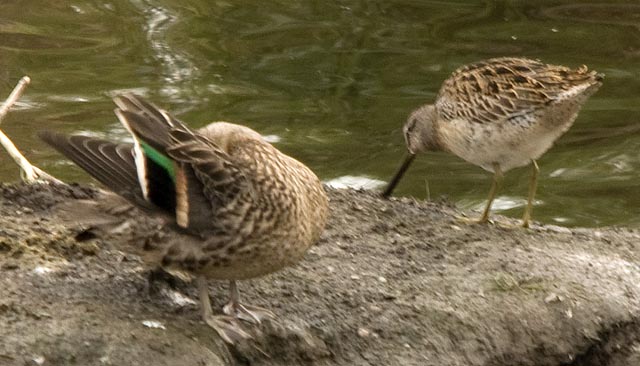
A Green-winged Teal preens while a Short-billed Dowitcher eats
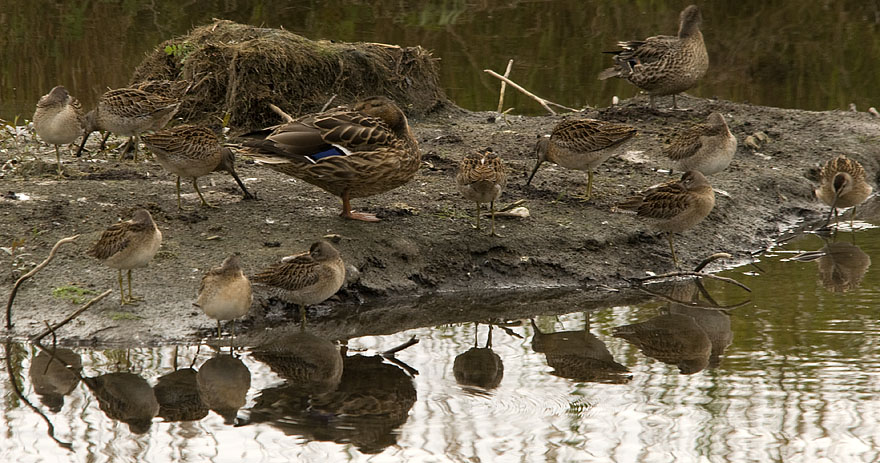
Two Mallards and a bunch of Short-billed Dowitchers
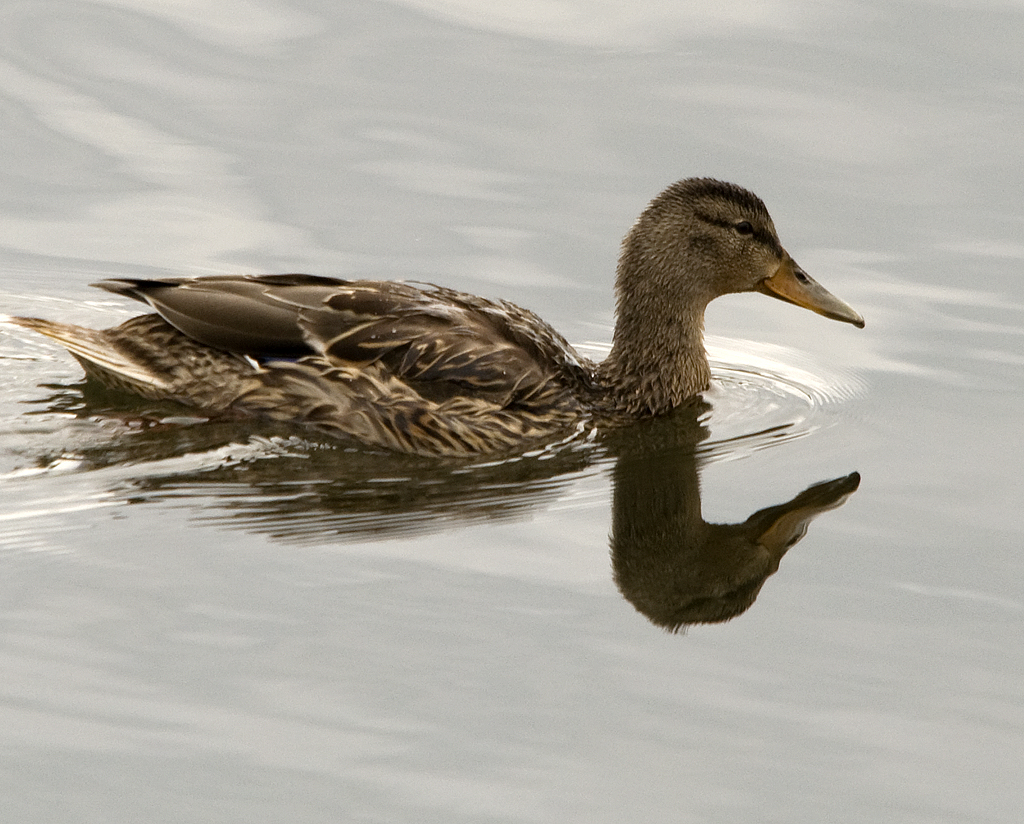
Mallard hen
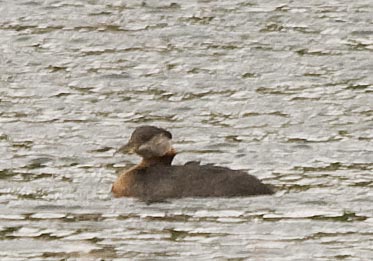
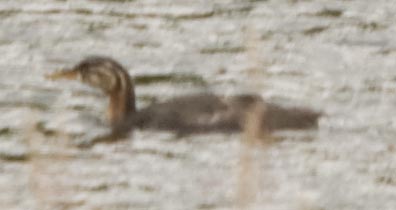
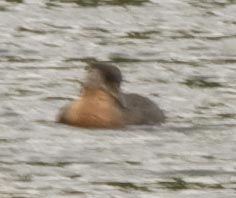
Red-necked Grebe in the far pond
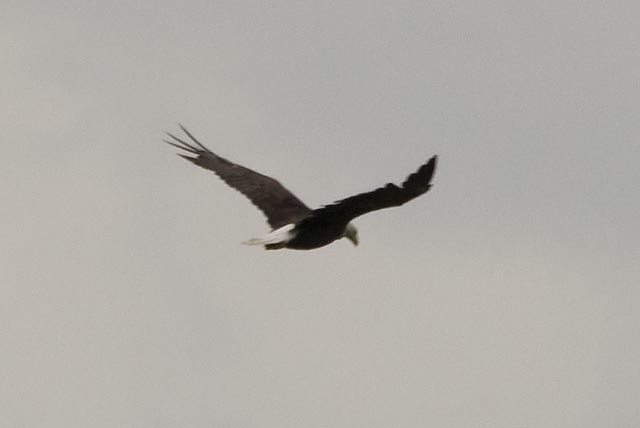
Bald Eagle flies overhead
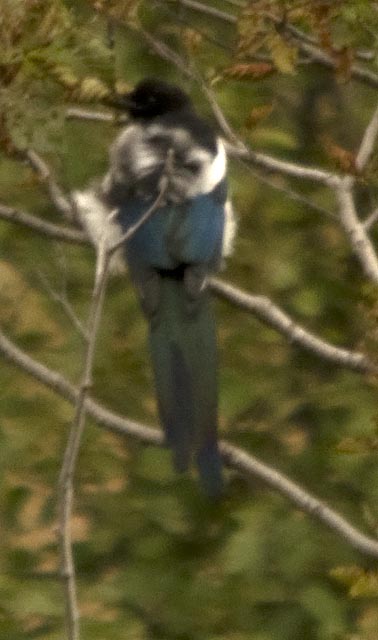
Black-billed Magpie in the trees at the far pond.
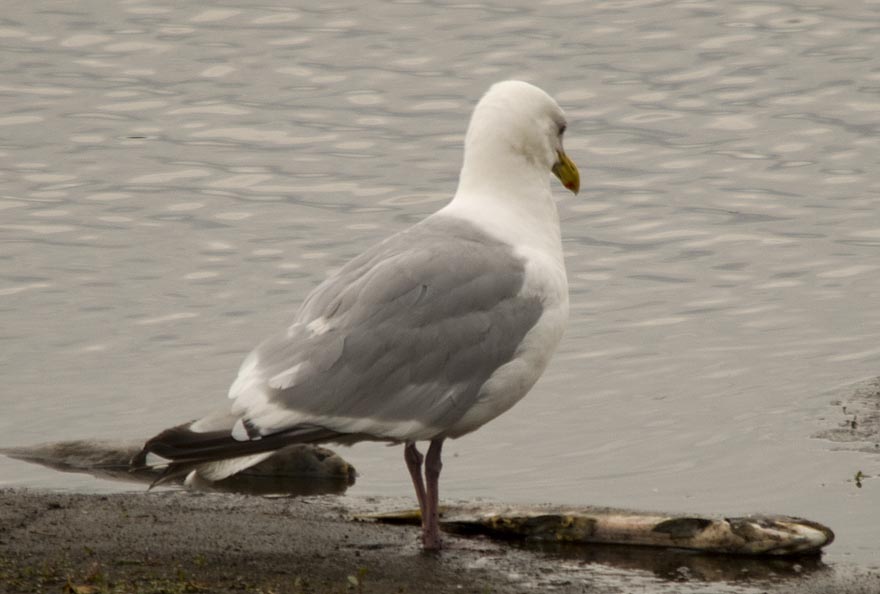
Gull studies dead salmon
photogallery/alaska_2009/leg_09/2009-08-15_anchorage/DSC_3940_Gull_and_Salmon.AVI
Click on the link above to watch the gull "catch" a salmon.
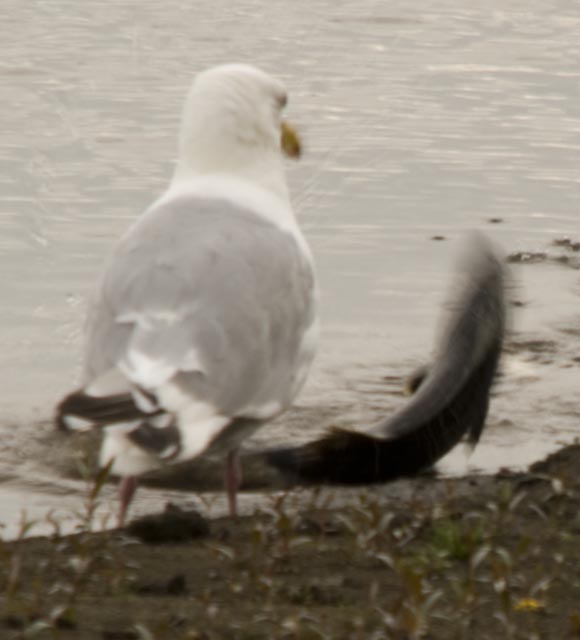
This gull dragged this still live salmon from the middle of the stream to the shore before he started eating it. Very fresh sushi.
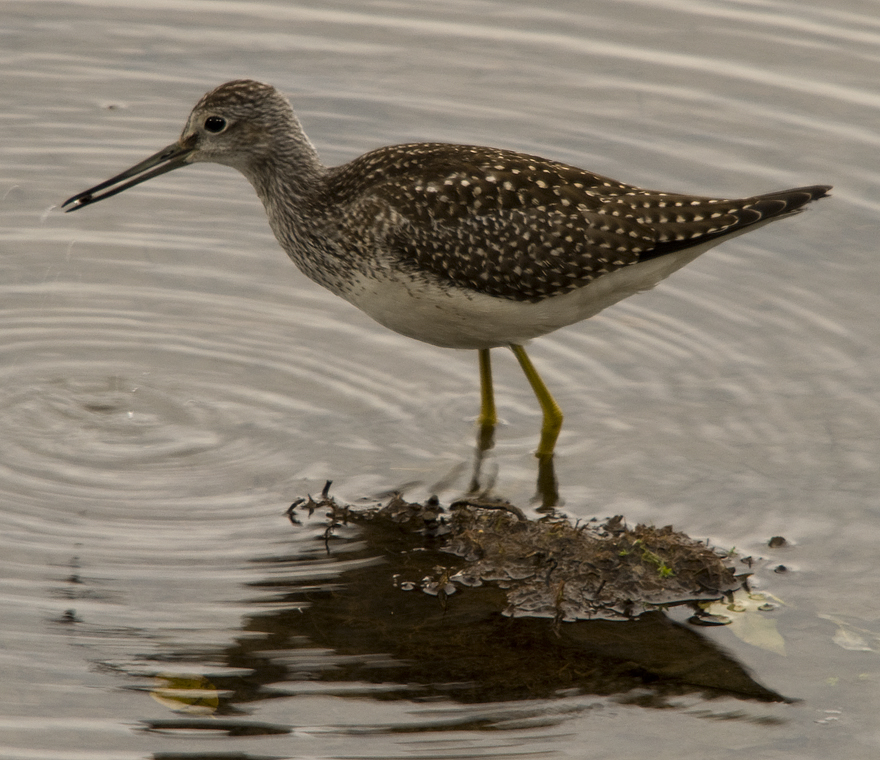
Lesser Yellow-legs with a tasty morsel.
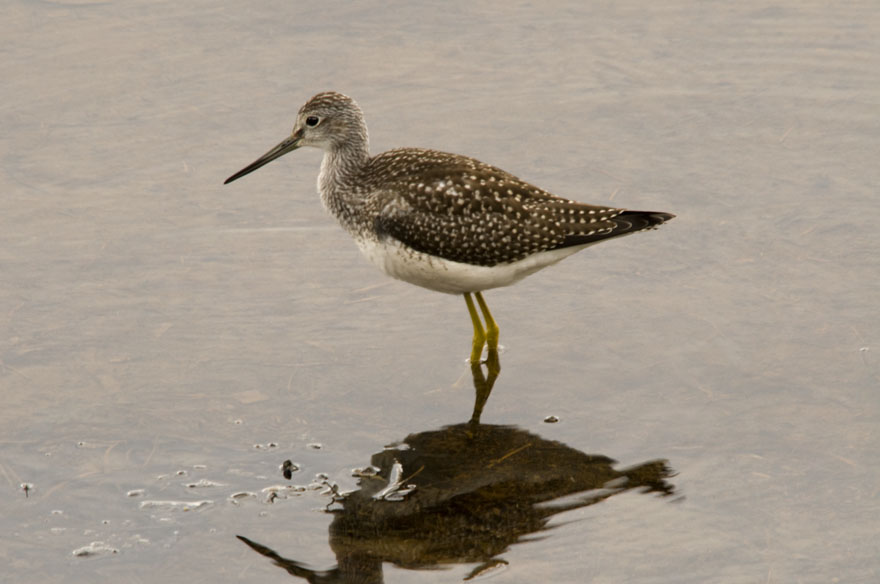
Lesser Yellow-legs
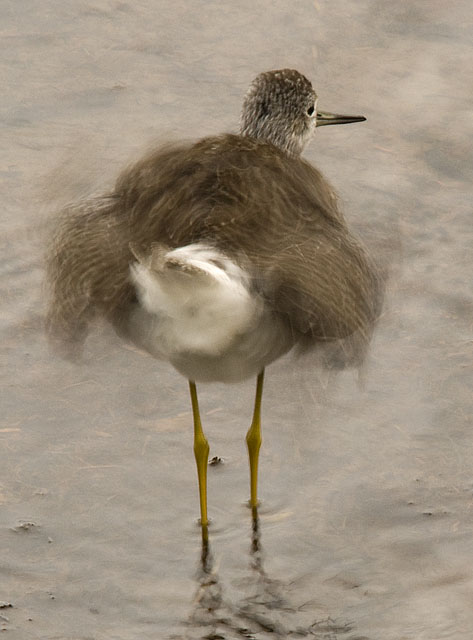
Lesser Yellow-legs ruffles his feathers after a quick bath
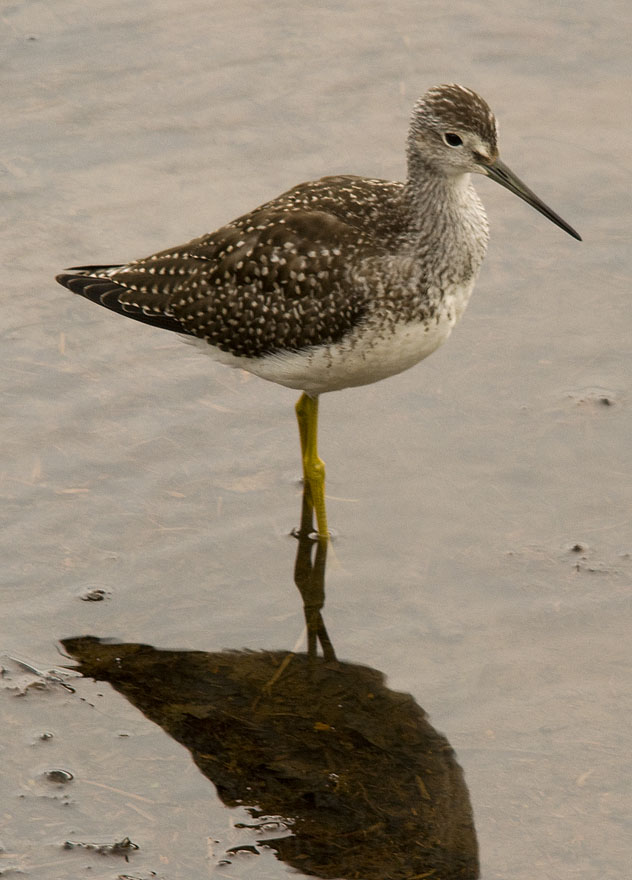
Lesser Yellow-legs
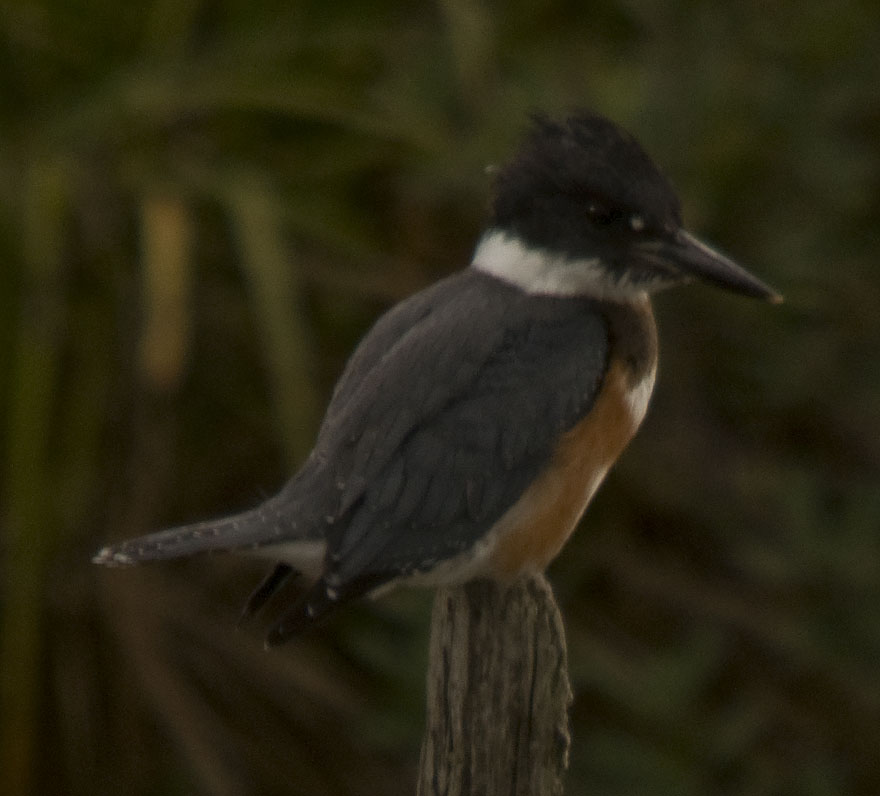
Banded Kingfisher sits on a tree stump
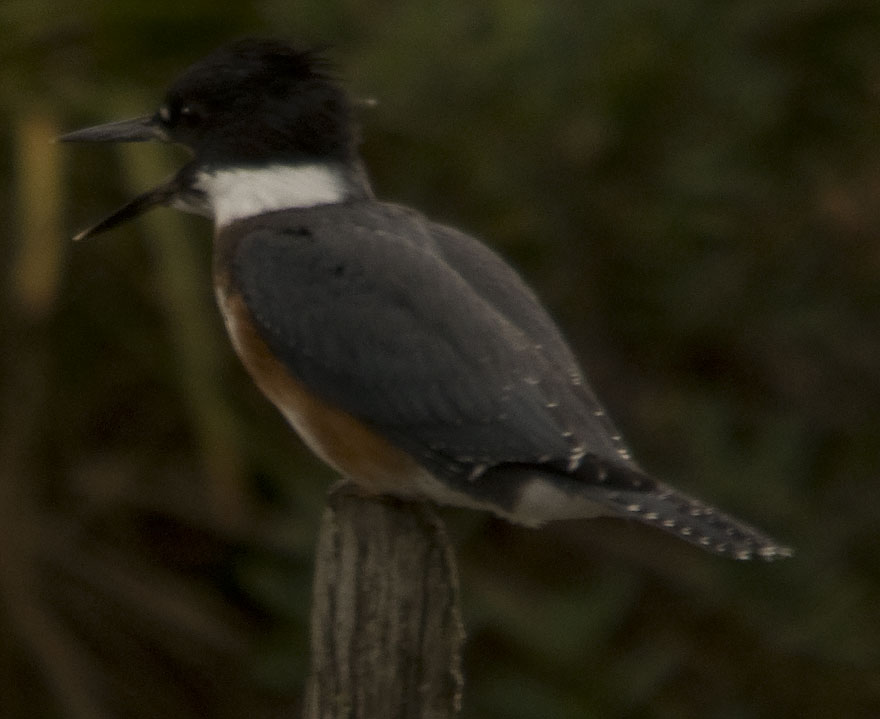
Banded Kingfisher
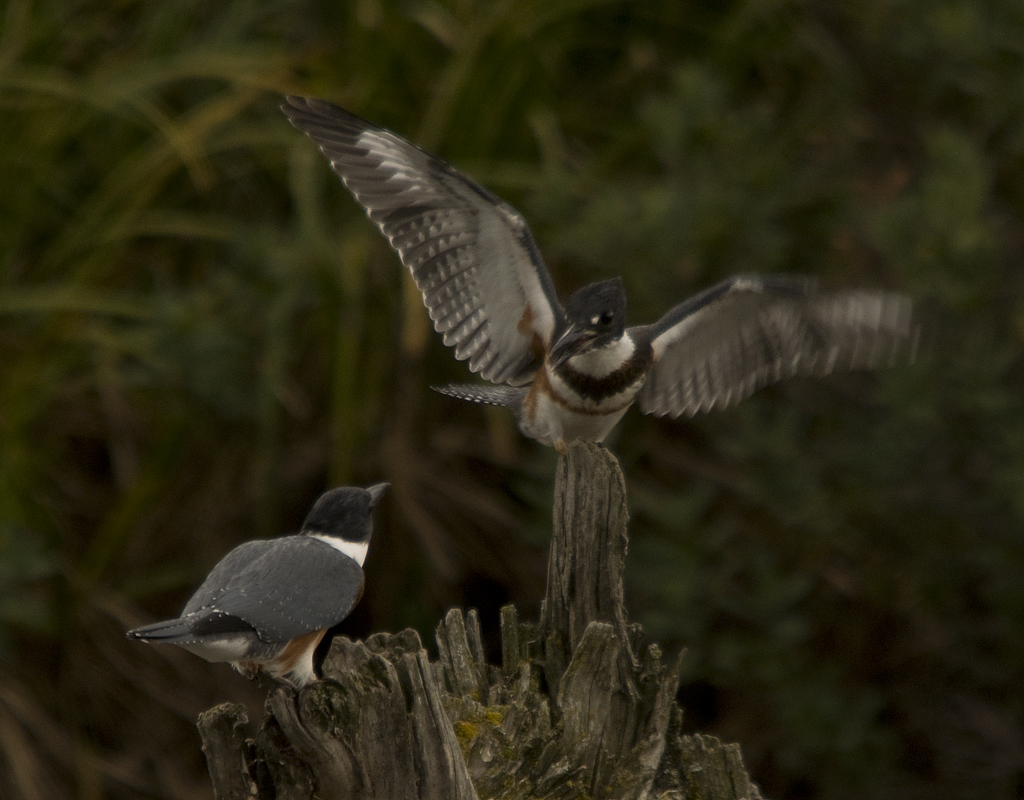
"I'm telling you, the fish was THIS big!"
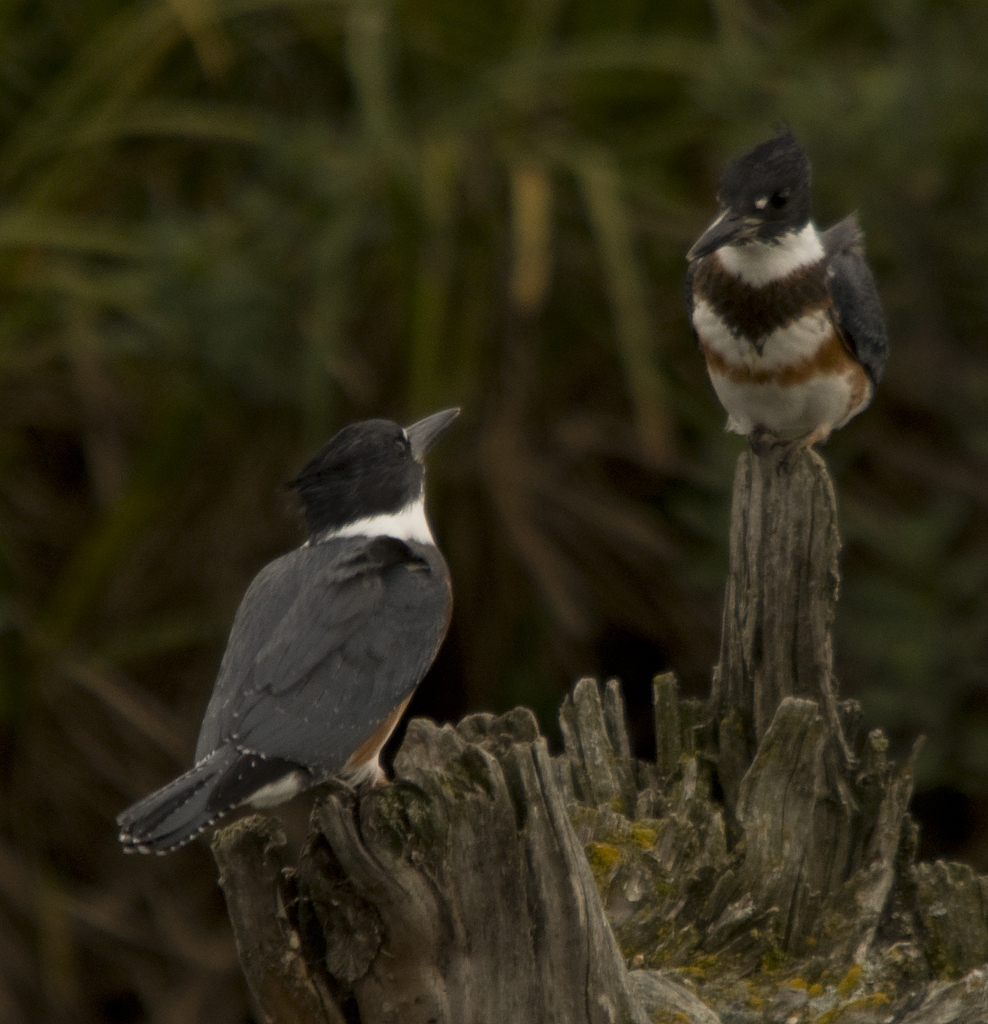
It was love at first sight.